CATHEDRAL MUSIC



Rodgers is proud to present the next generation of home and church organs from our Inspire Series. Born from the dream of enhancing spiritual experiences at churches all over the world… Born from the dream of homes filled with exquisite musical sounds... Born from the dream of bringing this experience within reach of anyone... All created because we believe in that dream.
Rodgers is proud to present the next generation of home and church organs from our Inspire Series. Born from the dream of enhancing spiritual experiences at churches all over the world… Born from the dream of homes filled with exquisite musical sounds... Born from the dream of bringing this experience within reach of anyone... All created because we believe in that dream.
The Rodgers Inspire 233 and the smaller 227 are designed for those who believe in dreams.
The Rodgers Inspire Series 227 and 233 organs are designed for those who believe in dreams. www.rodgersinstruments.com


CATHEDRAL MUSIC is published twice a year, in May and November.
ISSN 1363-6960 MAY 2019
Editor
Mrs Sooty Asquith, 8 Colinette Road, London SW15 6QQ editor@fcm.org.uk
Editorial Advisers
David Flood & Matthew Owens
Production Manager Graham Hermon pm@fcm.org.uk
FCM Email info@fcm.org.uk
Website www.fcm.org.uk
The views expressed in articles are those of the contributor and do not necessarily represent any official policy of Friends of Cathedral Music. Likewise, advertisements are printed in good faith. Their inclusion does not imply endorsement by FCM.
All communications regarding adver tising should be addressed to:
DT Design, 1 St Wilfrids Road, Ripon HG4 2AF 07828 851458
d.trewhitt@sky.com
All communications regarding membership should be addressed to:
FCM Membership, 27 Old Gloucester Street, London WC1N 3AX
Tel: 020 3637 2172
International: +44 20 3637 2172 info@fcm.org.uk
Every effort has been made to determine copyright on illustrations used. We apologise for any mistakes we may have made. The Editor would be glad to correct any omissions.
Designed and produced by: DT Design, 1 St Wilfrids Road, Ripon HG4 2AF 07828 851458
d.trewhitt@sky.com







There is a slightly reflective feel to the articles in this magazine, brought on by the recent deaths of two notable figures in the cathedral music world, Peter Hurford and Noel Rawsthorne. Their lives make interesting reading, and their influence on several generations of organists can clearly be measured not just by their own great achievements but also by those of their pupils. Readers will also have spotted the recent death in January of the revered South African-born composer John Joubert, who featured in these pages for his 90th birthday a couple of years ago. His name is to be inscribed in the book at a triumphal evensong at the musicians’ church, St Sepulchre’s, this month. His compositions, of course, were not limited to church music, but encompassed concertos, operas, oratorios and symphonies. A more unexpected remembrance is of David Lepine, less well known perhaps but esteemed nonetheless for inculcating in his pupils a genuine and lifelong love of music. John Harding, a former pupil, has joined with several others to pay tribute to a man of great charm who died unexpectedly and far too young.
Looking outside the UK, Donald Hunt (once at St Mary’s Edinburgh and now at Christ Church in Victoria, BC, and not the Worcester elder statesman) has been instrumental in bringing an English-cathedral-style education to the youngsters of a small part of Canada – though with a difference. Not many UK choristers are likely to have fitted in ice hockey practice before their morning rehearsals! His ‘program’ is still in its infancy, but he has already enlisted a fine selection of young musicians.
Amongst the readers of CM are likely to be found many enthusiasts for the Book of Common Prayer, with its beautiful cadences and glorious language (yes, I’m a fan too). There may, indeed, be many FCM members who also belong to The Prayer Book Society, which was founded shortly before the introduction of Series 3 into our churches, in 1972. For those who are less aware of it and would like to know more, Prudence Dailey, Chairman of the PBS and editor of The Book of Common Prayer, Past, Present and Future, writes compellingly about the society’s aims and achievements, and about this year’s Cranmer Awards.
In 2016, as part of FCM’s Golden Jubilee celebrations and to help launch the new fund-raising initiative The Diamond Fund for Choristers, a magnificent gala evening in the presence of HRH the Duchess of Gloucester was held at St Paul’s. It was a memorable occasion, not least for the presence of one chorister from almost every cathedral or choral foundation in the UK, together with the choir of St Paul’s. Later on this year, on 13 June 2019, there is to be a further celebration of choristers and their music, this time to be held at Liverpool (Anglican) Cathedral; if there is a chance that you can get to Liverpool for this, then do so: it promises to be an outstanding event at a remarkable venue. Liverpool Cathedral is the fifth largest cathedral in the world and, at 189m, the longest. Thus there should be no shortage of space – it can seat up to 3000 people!
Celebrating a long career in church music, 33 years of which were spent at the helm of Christ Church Oxford, is Stephen Darlington, who also spent time there as organ scholar and who retired last year. His guiding principle for musical performance at Oxford’s cathedral has always been to be ‘the best possible advocate for liturgical music at the highest possible standard’, which is something we can wholeheartedly support, and with gratitude for such dedication to duty.
Sooty AsquithLog onto www.fcm.org.uk and fill in the form, or write to/email the address given on p3.
Member benefits include:
•welcome pack
•twice-yearly colour magazine and twice-yearly colour newsletter
•‘Singing in Cathedrals’: a pocket-sized guide to useful information on cathedrals in England, Ireland, Scotland and Wales
Opportunities to:
•attend gatherings in magnificent cathedrals
•meet others with a shared interest in cathedral music •enjoy talks, master-classes, choral and organ performances etc.
Subscription
UK members are asked to contribute at least £20 per year (£25 sterling for European members and £35 sterling for overseas members). UK choristers and full-time UK students under 21 qualify for a reduced rate of £10. New members subscribing at least £30 (standing order) or £50 (single payment) will receive a free fulllength CD of cathedral music, specially compiled for FCM members.
FCM’s purpose is to safeguard our priceless heritage of cathedral music and support this living tradition. We strive to increase public awareness and appreciation of cathedral music, and encourage high standards in choral and organ music. Money is raised by subscriptions, donations and legacies for choirs in need.
Since 1956 we have given over £4 million to Anglican and Roman Catholic cathedral, church and collegiate chapel choirs in the UK and overseas; endowed many choristerships; ensured the continued existence of a choir school, and worked to maintain the cathedral tradition. Please join now and help us to keep up this excellent work.

Of all the expressions I find most evocative of what it means to have a vocation, this poem by W H Auden from his Horae Canonicae is particularly compelling:
You need not see what someone is doing To know if it is his vocation, You have only to watch his eyes: A cook mixing a sauce, a surgeon Making a primary incision, A clerk completing a bill of lading, Wear the same rapt expression, Forgetting themselves in a function. How beautiful it is, That eye-on-object look.
This ‘forgetting themselves in a function’ has been one of the delights of my career in cathedral music, 33 years of which were spent at Oxford’s Christ Church Cathedral: it has been there in performance, in the choirstalls, in the singing, and in the tutorials and lectures. I have been very fortunate to have had this experience.
Both my parents were musical and devout Christians, so I was surrounded by music from a young age. I well remember my first vinyl record, Max Bruch’s Violin Concerto played by Yehudi Menuhin, a Christmas present from my grandmother: I still have it, in fact. So it was no surprise that as I developed as a violinist and pianist, and then organist, I felt drawn towards a musical career. However, the seeds of my ambition to pursue a career in the field of church music were sown at school (The King’s School, Worcester), where I was influenced by two wonderful musicians, Harry Bramma and Christopher Robinson; the latter introduced me to an incomparable level of musicianship to which I have aspired throughout my life. Both men helped me to fulfil an ambition to become Simon Preston’s first organ scholar at Christ Church Oxford. Here I encountered a different style of music-making, one which was electrifying and obsessive. At the time we all knew we were witnessing a meteoric rise in standards: Simon had an absolutely clear vision of what he wanted, and he wouldn’t stop until he had achieved it. My other tutor at Oxford was the musicologist, Edward Olleson, a brilliant academic who also had a profound influence on me, and who helped me develop a love of the study of music alongside its performance.
My first job thereafter was as Assistant Organist at Canterbury Cathedral. Those who worked alongside Allan Wicks would confirm that he was a brilliant and inspirational figure. Here was a cathedral organist who loved listening to the string quartets of Bartók, playing the piano, commissioning contemporary composers, widening the repertoire to include Monteverdi and other Early Music composers whose music rarely appeared on cathedral music lists at that time. He was
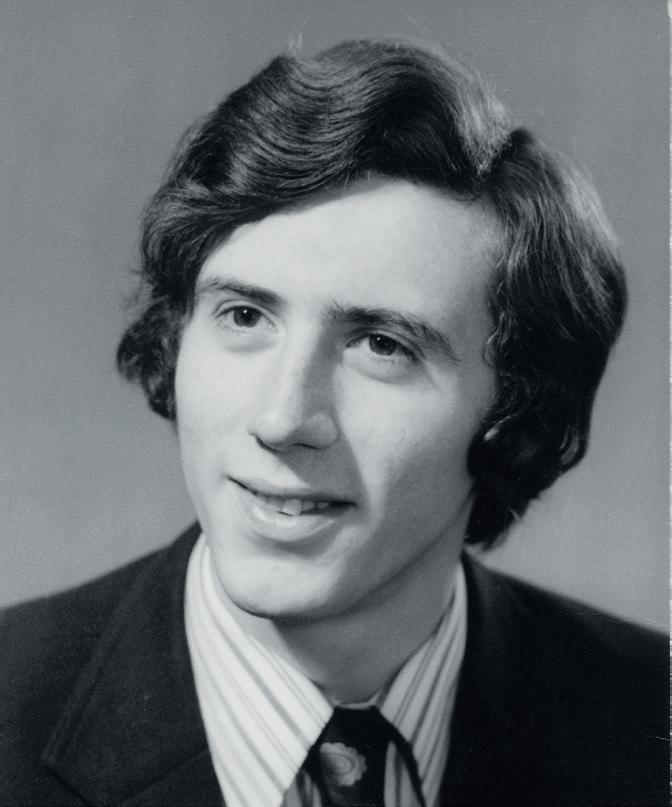
just as towering a figure in the musical world as Christopher Robinson and Simon Preston, and all three of them were gifted in different ways. I feel very lucky to have been guided by them in my formative years.
Much to my surprise, I was appointed Master of the Music at St Albans Abbey in succession to Peter Hurford in 1978, at the age of 25. The Dean, Peter Moore, was a brilliant man, a more than competent musician who really cared about music in worship, but also a maverick: perhaps that is why he appointed me! This wonderful cathedral provided me with the perfect environment in which to explore liturgical music of all types and continue Peter Hurford’s outstanding tradition. I worked with tremendous singers young and old, an excellent colleague, my assistant Andrew Parnell, and established an organ scholarship: everyone seemed to relish the breadth of music we performed. I also ran the St Albans International Organ Festival and the competition which lies at its core, which remains the most important one in the world.
I had loved Christ Church as Organ Scholar, but never imagined I would return to run its academic music as a university lecturer and be director of the cathedral choir. My formal role was ‘Organist and Official Student in Music’ and I later became the university’s Choragus. These days it is only a nominal title, but it is an important historic one, originating from Greek theatre: the choragus was the leader of the chorus in ancient Greek drama, and when the professorship of music at Oxford was established in the 17th century, the position of Choragus was also created, its holder acting as an enabler of music-making in the wider university.
My guiding principle in performance at the cathedral has remained unchanged: to be the best possible advocate for liturgical music at the highest possible standard. I believe strongly that there is something profoundly unique about performing choral music in a sacred space and as part of the liturgy. It is self-evidently the case that music has the power to evoke deep spiritual responses in people: sacred choral music is probably more widely disseminated now than at any stage in history. Obviously for this to work, standards must be high: no one wants to listen to second-rate performances.

I have avoided the word ‘quality’ so far, not least because writing about the subject in the sphere of liturgical music is fraught with problems. Such a label is often perceived as élitist. In case you thought this was a new phenomenon, here is Parry writing in 1899: ‘It can hardly be denied by anyone who calls himself a musician that a very considerable proportion of the hymn-tunes in many popular modern collections are as vile as it is possible for anything to be that has an excuse for calling itself artistic.’ I agree with Parry: we owe it to worshippers to be uncompromising in the projection of ‘good’ music. That this is not straightforward is graphically illustrated by several of my own experiences. For example, I once chose to broadcast a contemporary setting of the evening canticles on BBC Radio 3. This provoked one of the most amusingly aggressive letters I have ever received. The correspondent complained that the job of those trying to advance the cause of church music was hard enough without people like me broadcasting cacophonous rubbish like that!
So much for the quality of the music itself, but what of the quality of performance: why on earth should it matter that this should be good too? After all, it would be naïve to assert that the best performances are always those which are technically most accomplished. The philosopher Simone Weil wrote at length about education and religion. One of her most powerful themes is on the topic of attention. ‘Attention consists of suspending our thought, leaving it detached, empty and ready to be penetrated by the object ... We do not obtain the most precious gifts by going in search of them but by waiting for them.’ On the face of it, that may seem rather an odd notion, but I think it is that sentiment which unites performers and listeners, whatever their age, through the emptying of the mind and the intensity of concentration, both of which are fused as a creative and liberating force.
If my guiding principles have not changed, neither has my approach to highlights. The most satisfying aspect of my career has been taking vicarious pleasure in the success of my pupils, some of whom are now music lecturers and teachers, some conductors or singers or solo artists, some active in church music and others in a variety of other professions to which their musical education has made a significant contribution. There are so many of them that it is invidious to single out individual names, but such a list definitely includes Laurence Cummings, Timothy Noon, Elizabeth Burgess, Christian Wilson and Ben Sheen amongst the keyboardists. At the time of writing, three of the current King’s Singers were in the Christ Church choir, as were several regular members of consort groups such as The Sixteen, the Tallis Scholars
and The Cardinall’s Musick, to name just a few. Others such as John Mark Ainsley, Timothy Mirfin, George Humphreys and Stuart Jackson are having very successful opera careers. I have also had a succession of brilliant assistant organists as colleagues including Stephen Farr, David Goode and Clive Driskill-Smith, and it has been a privilege to work with them.
My own performance highlights have been countless. Perhaps most satisfying are those which have appeared unexpectedly in a cathedral service, when sometimes an intangible dimension has entered into the music-making, one which defies verbal description. In a sense, every one of the more than 60 commercial recordings with Christ Church has been a highlight. More than 40 of them have featured première performances of Early Music or more contemporary compositions. I am particularly proud of the 8-CD set of Early Music on the Nimbus label and the 5-CD set of Eton Choirbook music on the Avie label.
I have been fortunate in taking the Christ Church choir on many tours overseas, often performing in some of the world’s famous concert halls such as the Sydney Opera House. On most tours I have made a point of engaging in collaborative projects, so I have vivid memories of joint concerts in Jamaica, Portugal, Bermuda, China and the USA, for example. Particularly memorable also is a televised concert in Prague in 1989, shortly after the fall of the Berlin Wall, with Iliana Cotrubas and Placido Domingo. Václav Havel had just been elected President of Czechoslovakia and was sitting close to me. This was an extraordinary historic event when there was
a tangible air of optimism in the building. The accompanying orchestra consisted entirely of dissident players who had refused to join the Party, so were forbidden from membership of the Czech Philharmonic Orchestra – it was profoundly moving.
In the field of contemporary music, I have also been fortunate in being able to commission many new sacred compositions from composers as diverse as Howard Goodall, Francis Grier, Edward Harper, Gabriel Jackson, William Mathias, Robert Saxton, Mark Simpson, John Tavener and Judith Weir.
In an interview on his appointment as principal conductor of the London Philharmonic Orchestra, Kurt Masur commented that as a teenager he told his father he wanted to be an organist like Bach (not the electrician his father hoped he would become!). Masur said: “I wanted to be an organist, not a conductor. I didn’t want to be glamorous.” A career as an organist may not seem glamorous these days, but there was a time when its value was surprisingly high: in 1546, the organist at Christ Church was the highest earning member of the community, being paid twice as much as the tutors, in fact. Regrettably this is no longer the case, either at Christ Church or anywhere else: the rewards of the profession have to be calculated in other ways.

Nationally the general standard has risen hugely during my lifetime, and the awareness of choral music is much more widespread. However, financial constraints are bringing pressure to bear on all aspects of the ministry of cathedrals, and of course, music is an obvious target when institutions face difficult financial decisions. It is crucial that the clergy recognise the power of music to act as a spiritual vehicle for worshippers of all ages in a powerful and unique way. This tradition is too precious to abandon and deserves to be properly resourced. It may be comforting to know that such pressures are not new, however: cathedral music was at a very low ebb in the first half of the 19th century and underwent a distinctive revival in the hands of reformers such as Ouseley, whose establishment at St Michael’s College in Tenbury was part of a deliberate attempt to raise standards. Let us hope that similarly enlightened figures will emerge in our own time.
I end this article where I began, with more words by W H Auden, one of Christ Church’s most famous alumni. In his Christmas Oratorio, entitled ‘For the Time Being’, there is a reflective chorale which was set to music by Benjamin Britten and more recently, at my request, by Robert Saxton. The final stanza could be interpreted as a prayer as well as a cry for action. If I needed a motto for my life as a church musician then it would be hard to improve on the final three words: ‘Adventure, Art, and Peace’.
Inflict Thy promises with each Occasion of distress, That from our incoherence we May learn to put our trust in Thee, And brutal fact persuade us to Adventure, Art, and Peace.
a centre for music within the confines of an environment that had seemed dangerously near to becoming something of a cultural white elephant.
His work with the Royal Liverpool Philharmonic Orchestra included supervision of the refurbishment of the Rushworth organ in the splendid Philharmonic Hall and he sustained substantial friendships, personal and professional, with successive ‘Phil’ conductors. A particularly creative partnership with Sir Charles Groves is, happily, evidenced for us all in a number of very fine recordings.
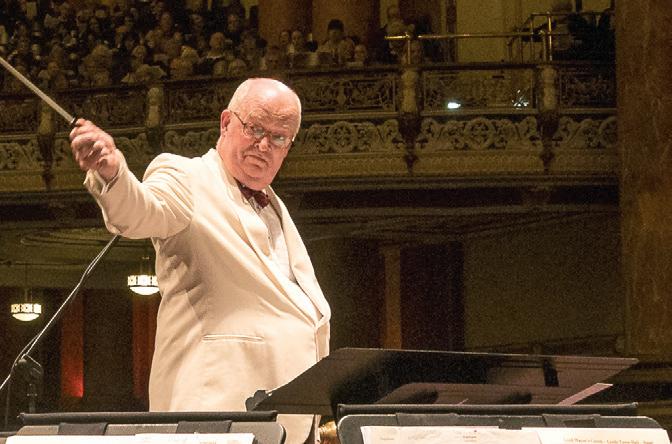
For long the master of the mightiest Mersey sound of all, Noel Rawsthorne – Liverpool Cathedral organist for a quarter of a century and, truly, a legend over the course of his long lifetime – died on 28 January in his home city of Liverpool at the age of 89.
Pupil of Germani in Italy, Dupré in Paris and Harold Dawber at the Royal Manchester College, Rawsthorne’s own list of pupils reads like a Who’s Who on musical Merseyside. His successor as cathedral organist, Ian Tracey, is but one of many; this extensive band of musicians also includes the brothers Duffy, Philip & Terence, once colleagues at the other end of Hope Street in music-making at the Metropolitan Cathedral of Christ the King.
Yet Noel’s teaching was far more a matter of service rather than status. Generations of students have had cause for considerable gratitude on account of his creative instruction and individual coaching – especially in keyboard skills – for classroom rather than cathedral.
The award of an honorary doctorate in music from the University of Liverpool was not only richly deserved but gave much pleasure to admirers and colleagues alike.
Rawsthorne’s commitment to the music-making of his home city – not least through his long service to St Katherine’s College (now absorbed within Liverpool Hope University) as a music lecturer – has been total.
The cathedral, though for years his main centre of activity, formed only part of the story.
On retirement from the console of the grandest Willis of them all in 1980, his energies were wholeheartedly directed to reviving the fortunes of music-making at St George’s Hall. There he served as City Organist until 1984 and revitalised that building’s recital programme, raising once again its profile as
It is well known that his best-selling solo discography, especially his recordings on the cathedral organ, is, without a shadow of doubt, one of the most distinguished of such post-war catalogues. Many of his performances are widely acknowledged as benchmark interpretations against which others are measured. His superb and trail-blazing Great Cathedral Organs recording – the very first in that splendid and hugely historic EMI series – included what was probably the first recorded interpretation of the original version of the Duruflé Toccata by a British player.
For listeners the world over, Noel as an interpreter of the keyboard repertoire represented the very best in English organ-playing.
A vivid and unerring sense of colour, warmly eloquent phrasing and sturdy rhythm pervaded all his performances. Having for much of his life played one of the world’s finest instruments, he was also particularly well known for getting the very best out of rather more modest (even quirky) musical resources. Add to such already substantial musical virtues the extraordinary fusion of artist and craftsman that has proved such a source of constant admiration to his colleagues, and it is possible to glean something of this special master’s strength of character and depth of influence.
On the choral scene, he was thoroughly at home when composing for ‘all sorts and conditions’ of choirs. Interestingly, the considerable number of pieces designed specifically for the Liverpool Cathedral choir, while fitting that most individual of ambient acoustics like a glove, do not rely for their effect on rich resonance alone but are happily at home in less generously proportioned surroundings. Of the liturgical items, the fine two sets of Responses and the Liverpool Mass claim particular attention. The more modestly conceived Festive Eucharist composed for the completion of the cathedral in 1978 is very widely sung, as are some of his vividly etched miniatures – God be in my head, Like as the hart and I will lift up mine eyes spring at once to mind.
Organists, choristers, congregations and audiences everywhere have considerable cause to be thankful that the
manuscript page has been so much the recipient of his most recent energies.
Script, scoring and musical layout – all these aspects are firm, focused and gloriously secure. There are no spare notes, no musical equivalent of verbal waffle; everything lies beautifully under hands and feet and encapsulates so much of the clarity and sense of direction which are such significant elements of his character.
Among original compositions for the king of instruments, the substantial Dance Suite (written to celebrate the re-opening of the Huddersfield Town Hall organ after major work and dedicated, like a number of his recent works to Dr Gordon Stewart, the long-serving Borough Organist who became a close personal friend of Noel’s) and the hilarious Hornpipe Humoresque claim particular attention. But maybe the heart of his muse is enshrined in the lovely Aria – elegant, fluent, pulsing with heartfelt emotion but not with the heart on the sleeve: above all, memorable.
For the organist, he rehabilitated some of music’s most attractive works by providing eminently practical arrangements and transcriptions (from other musical media) that, while challenging the professional, do not remain beyond the scope of those for whom recitals and recordings are not within their regular experience.
Rawsthorne’s repertoire enhancement includes a number of ‘musts’ – volumes which are in every self-respecting player’s music cupboard: Music for the Bride, Music of Remembrance and, particularly, Encore! lead the field among his many anthologies.
Noel Rawsthorne, by his playing, teaching and composing, was an exemplar of admirable purpose and strength of character. He will be hugely missed by so very many.


Teaching was but one of the many skills of this great polymath, and one which was very dear to his heart; he was an inspirational teacher and in some 60 years in the profession must have taught thousands of organists, both amateur and professional. The organ world has to be a richer place for his presence, and greatly the poorer for his passing.
Suave, well spoken, immaculately dressed, a total perfectionist in everything he did, and excelling in pretty much anything he turned his hands to – organist, teacher, composer, arranger, organ designer, harpsichord maker, cook, angler, gardener, French polisher, watercolour artist and IT boffin... the list could go on! There was no end to his many talents, nor to his capacity to study each of them to expert level, thereafter adding his own particularly original perspective.
As an organist he was at the forefront of his generation, a most eloquent player; many of his recordings are still the benchmarks for subsequent generations of exponents. His immaculate technique and effortless console management were honed by a scholarship with Fernando Germani in Siena, which he always said was ‘like having a knife in one’s back the whole time’ but musically, incredibly energising.
The first time he played in front of Germani, a large-scaled Bach prelude and fugue, (rather brilliantly, he thought), there were no interruptions whatsoever, but after a pause, the maestro declaimed: “Now, we must learn to look pretty at ze console, we must sit up straight, head straight, back straight, arms straight...” and absolutely nothing about the work at all. Noel always held that this was a most humbling experience for him; it was right back to basics, and all about general deportment at the console, which was to be the raison d’etre of the immaculate console management and playing position which became one of his hallmarks.
He would not suffer wrong notes: “We are not paid to play wrong notes,” he would always say. We were all chastised for
even dropping one. In my youth, after a Bach prelude and fugue in the Lady Chapel, where a couple had ‘gone astray’, he came up to the loft and said, quietly but firmly: “Sort them out please... I have just been down in the Lady Chapel with a brush and pan, and with all the wrong notes I have swept up off the floor, I could write a new fugue....” followed by his wry smile and codicil: “‘And so they collected them and filled twelve baskets with the fragments thereof!’” I was to learn that he was a great quoter of scriptural passages at salient moments.
When at the console of his Boeing 747 (as he affectionately referred to it), he was supremely in control, but he had a recurring nightmare about oversleeping and running up Bold Street towards the cathedral in his underwear with his briefcase full of music. A policeman, appearing from one of the shop doorways, in stentorian tones says: “You can’t go up there, sir, there’s a big service on.” Having convinced the policeman of his identity, he finally gets to the loft, but all the stops are in the wrong place, much of the organ non-operational, and all the hymns he needs are missing from the hymn book. He plays one tune and the congregation sing another; at this point he always awoke in a cold sweat to find that he was not at the console and that there were several hours to go! This probably explained the fact that he would always leave for the cathedral in enough time to be able to change a wheel, should he get a puncture on the way.
On one notable occasion, during a sermon from one of our aged canons (always destined to be a lengthy one), he sat down in a comfy red armchair in the sitting room behind the console, cup of coffee to his side, and... drifted off. In the dream which followed he definitely heard people singing, and woke suddenly to find that the choir, congregation and clergy were indeed engaged in the final hymn but down a minor 3rd.... In true NR fashion, he slid onto the bench and came in quietly, crescendo-ing to complete the hymn. The dean came up after the concluding voluntary and said, “Noel, we didn’t see you, and reckoned the organ was playing up again, so we thought we’d better start the hymn.” Cool as a cucumber, Noel replied, “Quite right, Mr Dean, thank you very much.” Thereafter there was a written edict in the loft: ‘If you are alone, without an organ scholar, do not sit in this chair. NR’, and he kept to that, as, subsequently, have we all.
With his love of order in all things, the coffee percolator was always filled with coffee and water before a service, and would
“I don’t see it that way ...” usually followed by,
“Move over and play it like this ...” – two of the golden catch-phrases which will be instantly recognised by any and all of Noel’s many students.Ian Tracey Photo: Maureen McLaughlin
be turned on with the console electrics, in order that it was nicely percolated by the sermon. However, on one occasion, one of my predecessors as assistant forgot to put the water in, and so, as the eastward procession of Cross Guild and clergy entered, they did so with noses in the air, smelling the overwhelming odour of burning coffee throughout the building! With true NR aplomb, the post-Gospel improvisation took as its theme, “Whence is that goodly fragrance flowing?”
Noel loved his recital work, and especially that in USSR where he was the first British organist ever to be invited, making several subsequent returns. I always packed his music into the various files, in programmes A, B, C, D etc. However, I once inadvertently sent him senza the back page of Howells Set 1 No. 1. As Western music was nigh on impossible to obtain in Russia at that time, he was unable to acquire a copy and had to do his best to remember it (memory-playing not being one of his strengths). He jotted down what he could recall of it on a piece of manuscript paper and penned me a postcard: ‘Where is the back page of HH Set 1 No. 1...? I have given a different performance of it every evening; last evening in a ‘Festival of British Music’ with Sir William Walton and André Previn in the audience!...’. I went up aloft, and there, to my horror, was said back page. I dreaded the return of the maestro, but he just laughed it off and commanded that the music librarian go through all his music and ensure that all copies were intact.
recital that evening. The stops being numbered, he was pencilling in +58, +62, -61, -83, + IIIrk, +IVrk etc. He was aware of the white-mackintoshed KGB man just across from him; he had followed him in and had been subsequently watching him intently. Finally, the man stood up, pointing a gun at him and saying, “You vill now come vis me, please.” Noel obeyed, and to his horror, found himself in a cell being interrogated as to what these codes were and on whose behalf he was spying. His attempts to explain were met with disbelief, and finally all his music was taken away and the cell door closed. Just at the point of despair, when he thought he might never see his family again, a huge man in Russian uniform appeared, completely filling the doorway (‘This is it,’ he thought...). The man had the copy of the K608 in his hand. Smiling, he said: “Mr Rostorn, you ere now free to go... ve haf dis Wolfgang Mozart in custody... and he hav confess-ed all,” .... and, beaming, he added, “I apologiz for my colleague.... and I vill be at your consert too-night!”
Mercifully, they did let him out, and we had another 45 years of this amazingly creative and loving man who did so much for the organ, its followers and for his students. The Prayer Book puts it so well when it says, ‘Our hearts are unfeignedly thankful’ for all he gave and for the huge legacy he leaves, both at the cathedral and in the organ world as a whole.
His mortal remains will be interred in the north choir aisle of Liverpool (Anglican) Cathedral underneath the organ, alongside those of his predecessor Harry Goss-Custard at the 3pm Evensong preceding the 93rd Anniversary Recital on 19th October 2019. Organists from all over the world have already signified their intention to attend; all are welcome, and as the cathedral has a seating capacity of some 3000, there should be plenty of room.
Some words written by Bessie Stanley in the Lincoln Sentinel of 1905 in an essay entitled ‘What Constitutes Success?’ could almost have been written about Noel as they express, so well, all that he was, and also something of his legacy to us all.
He has achieved success who has lived well, laughed often and loved much;
Noel had always steered clear of memory-playing after one instance of playing the Bach Great G minor, the final pedal entry of which, he realised to his horror, turned out to be that of the Little G Minor. In his own words: “I have no idea at which point the one seamlessly became the other!”
Things in Russia didn’t always go smoothly; one night in Yerevan in Armenia, playing to a packed house, he went on, set his combinations, put down the first chord and absolutely nothing happened. He turned to his assistant and, out of the corner of his mouth, said, “Will you switch the organ on, please?” (using, in this case, an ignition key). The assistant replied, “I’m sorry, there’s no key.” Not speaking any Russian, they both went off, to the astonishment of the now silent audience, doing a mime Marcel Marceau would have been proud of. Finding the organ-builder drinking wine in the basement with a set of keys in his pocket, they returned, brandished the key to thunderous applause, and started all over again.
On another occasion, Noel was sitting in a coffee shop in Moscow, putting registration into his Mozart K608 for the
Who has gained the respect of intelligent men and the love of little children;
Who has filled his niche and accomplished his task;
Who has left the world better than he found it…
Who has never lacked appreciation of earth’s beauty or failed to express it;
Who has always looked for the best in others and given the best he had;
Whose life was an inspiration; and whose memory, a benediction.
May he rest in peace and may his memory be for ever bright.
Noel excelled in pretty much anything he turned his hands to – organist, teacher, composer, arranger, organ designer, harpsichord maker, cook, angler, gardener, French polisher, watercolour artist and IT boffin...

those days, the singing being led from the organ, so the assistant organist’s function was to deputise for the organist as required, and be generally helpful. A pupil-assistant would deputise under close supervision at first, but be left on his own when he had grown in confidence and skill. So, try to picture a young boy travelling on his own to a place where he knew no one, to join a cathedral community in which he was younger than the senior choristers, who might be as old as 16. The choristers sang Mattins every weekday at 8.30am on their way to the National School, where they usually arrived a few minutes late; they left a few minutes early to sing Evensong at 4pm, and after a boy had left school a sympathetic employer might allow him to continue in the choir until his voice broke. Evensong was followed by an hour’s rehearsal, and a boy might be persuaded to return in the evening to blow the organ for Harris to practise. The men of the choir hardly feature in this account, so one must assume that they only sang on Sundays.
Imust begin by exploding a myth. You will read in many places that Harris grew up in Fulham and was a chorister at Holy Trinity, Tulse Hill. This is very unlikely, as it would be a rotten journey today, and particularly so for a young boy in the age of steam trains and horse buses. In fact, William Henry Harris, the eldest of three children of William Henry Harris, a postman, was born not in Fulham but in Brixton Hill on 28 March 1883. Young William was baptised in May at the nearby St Saviour’s Church where he joined the choir at a very young age. He decamped to the neighbouring parish, Holy Trinity, where the organist was a professional musician of some repute, and so from the age of eight William came under the influence of Dr Walmsley Little, who taught him so well that he rapidly became a capable organist.
What was to be done with this talented youngster when he left school just before his 14th birthday? One of the curates, the Revd H Sinclair Brooke, raised the funds to send him as an articled pupil-assistant to St Davids Cathedral, where the newly-appointed organist, Herbert Charles Morris, happened to be a friend. Cathedral choirs were never conducted in
The published reminiscences of John Miles Thomas, a chorister in the 1890s, give an unflattering picture of the organist. ‘Morris…was a small man, unsmiling, cynical and distant. There were times when he got annoyed without apparent reason, and he would take hold of a boy and flog him with his walking stick.’ That aside, he was a good musician, who took his responsibilities seriously. The articlessystem was one of apprenticeship, offering, in spite of its limitations, a great deal that was admirable. By the time Harris had completed this apprenticeship, begun before he was 14, he was a good player, a good extemporiser, able to transpose anything at sight, to read from a full score, and to improvise from an 18th century figured-bass an effective continuo part. He was also well grounded in fugue, canon and counterpoint. Morris, only ten years older than his pupil, taught Harris so well that in July 1898 William gained the diploma of ARCO (Associate of the Royal College of Organists). In the following January he was one of the 13 (out of 78) who were awarded the College’s very much more difficult Fellowship (FRCO), the virtual equivalent of a university degree. He was but 15 years and ten months old, perhaps the youngest-ever FRCO, and he had already been awarded a scholarship to the Royal College of Music (RCM). Morris and St Davids had done him proud, and left him with ‘an almost monastic devotion to the daily offices of the Anglican Church’.
The move to Fulham had taken place by now and with Kensington and the Royal College of Music not far away William would have been able to live at home. He studied the organ with the legendary Walter Parratt, Organist of St George’s Windsor, who must have been surprised at so wellqualified a pupil but had much to teach him about style and repertoire and the wider world of music. William would have studied composition with Stanford and Charles Wood, for Parry’s responsibilities as Director of the College left him no time for teaching, though he retained a close and benevolent interest in all his students.
Then, and for another half-century, universities offered degrees in music but did not teach it, whereas colleges such as the RCM taught music but did not award degrees. The degrees of Bachelor and Doctor of Music were offered by Durham and Oxford (and a few others) to non-resident students who had to submit an ‘exercise’ and pass a written examination. William’s FRCO already stood him in good stead, so immediately on leaving the RCM he formally joined the University of Oxford by matriculating at Queen’s College. In 1903 he passed the examination and submitted his exercise, a setting of Dryden’s paraphrase of the Veni Creator He graduated Bachelor of Music on 10 November 1904. A doctorate was more of the same, only more so, and required a few years’ further study. In 1909, the written examination duly passed, he submitted his exercise, a substantial setting for double choir, soloists and large orchestra of Milton’s Ode on the morning of Christ’s Nativity. He graduated Doctor of Music on 1 December 1910, and so became ‘Doc H’ to generations of choristers. It is surely not without significance that his chosen texts were religious but non-biblical, for he was developing a discerning taste in literature.


It is time to explode another myth: William was not taught by Henry Walford Davies, who was on the staff of the RCM but did not teach composition; however, Davies had just been appointed Organist of the Temple Church and was glad to make use of such a capable and experienced assistant as William. Davies also employed him as accompanist to the London Church Choir Association, and to the Bach Choir which Davies directed for a few years before being succeeded by Hugh Percy Allen, a man who would have a profound influence on William’s future career.
He had by now played in a number of London churches, but he longed to be back in a cathedral. Lichfield needed an assistant organist to help with the choristers’ training and play for some of the twice-daily weekday services. There were no regular Sunday duties, so he was also able to be Organist of the large and wealthy St Augustine’s Church, Edgbaston, inheriting his predecessor’s teaching at the Birmingham and Midland Institute, the forerunner of today’s Birmingham Conservatoire. There he came under the powerful influence of Granville Bantock. He took up these positions in 1911, and in 1913 he married Kathleen Doris Carter (‘Dora’), who bore him two daughters. With war imminent he joined the 28th Battalion of the London Regiment volunteer light infantry unit, but nothing is known of any active service until the very last year of the war. He did find time to compose a substantial work for choir and orchestra. The Hound of Heaven, a setting of Francis Thompson’s poem, had its first performance in December 1918, by the Birmingham Festival Choral Society
and Orchestra, and its second in 1920 by the same forces. It was well received by the local critics and accepted for publication by Stainer & Bell with a subsidy from the Carnegie United Kingdom Trust, but it did not prosper.
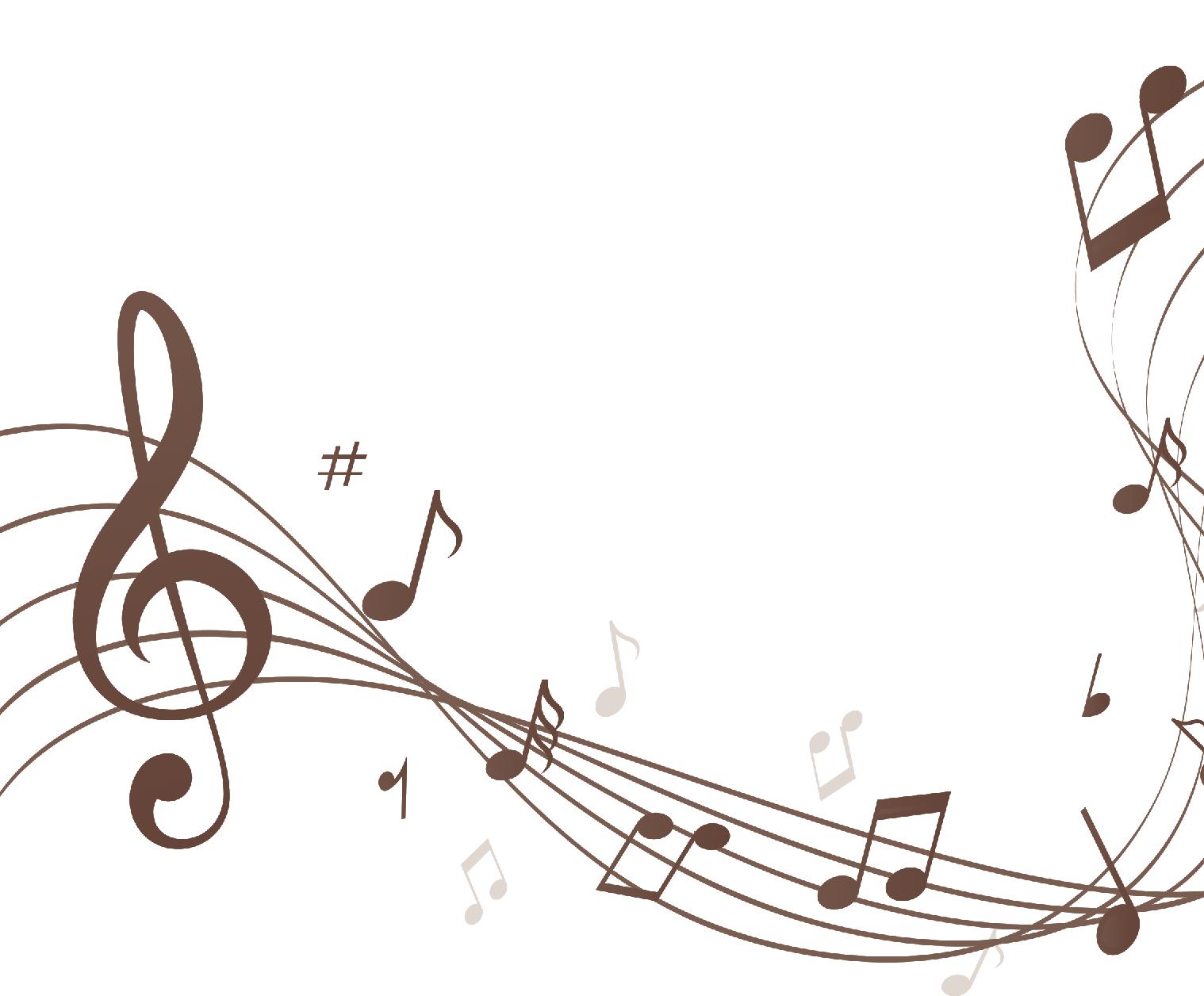
Hugh Allen, William’s friend of Bach Choir days, had been chosen to follow Parry as Director of the RCM after Parry’s death. Harris succeeded Allen in his post as Organist of New College in 1919, and was further rewarded with a professorship of organ and harmony at the RCM. Unfortunately a mere Doctor of Music was not a senior member of the university, for the only degree that mattered was that of Bachelor of Arts (BA), awarded at the end of a residential undergraduate course, and from which one proceeded without further examination, and a minimum of 21 terms from matriculation, to the degree of Master of Arts (MA) and the status of Senior Member of the university. Someone, possibly Allen, found a solution to this problem.
Oxford was then still the world of the Bertie Woosters, for whom an undemanding ‘pass’ degree was offered, and William accomplished this by 1923. He was exempt from any further examinations as he had passed the second examination for the degree of Bachelor of Music, and having matriculated in 1902 he had been a member of the university for the prescribed 21 terms and could proceed to the degree of MA as soon as his BA had been conferred. Thus Dr Harris became a Senior Member of the university.
He began to include his own music in the chapel services, and November 1925 saw the first performance of his most celebrated work, Faire is the heaven for unaccompanied double choir. King of glory, King of peace, for three-part trebles and organ, was sung on 16 occasions between 1924 and 1929. One of his happiest inspirations, its printed copy immortalises the names of Cullis and Gooderson, the best of a remarkably fine set of choristers. It is noteworthy that he chose to set Edmund Spenser and George Herbert rather than the Bible or Prayer Book. To these years also belongs his best-known hymn tune, for Lead, kindly Light. Harris named it ‘Alberta’ after the Canadian province where, during an examination tour, he found himself stranded at a remote railway station. This experience obviously left its mark!
Harris was running the famous Balliol Sunday Evening Concerts and was also involved in a pioneering revival of Monteverdi’s operas, but he was a cathedral musician at heart and was glad to move to Christ Church, Oxford’s cathedral as well as the chapel of Cardinal Wolsey’s mighty college. Its organist, Noel Ponsonby, died suddenly in 1929, and so William left New College to spend four years at the cathedral. A splendid anthem from those years was O what their joy and their glory must be (1931). For full choir with organ or orchestra, it is a set of variations on that hymn’s noble melody.
Then history seemed to repeat itself with a sudden death, this time at St George’s Windsor, where cathedral-style choral services were sung daily, morning and evening. Walford Davies had served for only four years, and had been followed by Charles Hylton Stewart who died most tragically in 1932 after only six weeks in post. The invitation to Dr Harris was almost a royal command, and from 1933 until his retirement in 1961 he was the chapel’s organist, renowned for his skill as a trainer of choristers and in increasing demand as a most
useful and versatile composer. He inherited the new tradition, only ended by the war, of an annual Festival of Church Music in which the Windsor choir took the major but by no means sole share. The demands of these festivals may have prompted Harris to compose a number of motets and anthems, the best of which is Love of love and Light of light, (1934). He was enjoying a burst of compositional activity, and a large-scale festival cantata, Michael Angelo’s Confession of Faith, was commissioned for the 1935 Three Choirs Festival at Worcester. The 1937 Coronation called forth an Offertorium, O hearken thou; and the revival of the Garter Day ceremonies later that same year was marked with a Te Deum in B flat. He even turned his hand to a couple of short orchestral works: an overture Once upon a Time was performed at the Proms on 5 September 1940, and a Heroic Prelude on 4 August 1942.
Life at Windsor continued much as usual, with the full round of chapel services maintained throughout the war, for the boys had not been sent elsewhere and most of the men were too old for military service. Doc H gave music lessons to Princesses Elizabeth and Margaret, who together with various residents of the castle and the wider community formed a madrigal group which he directed. Thus Princess Elizabeth was able to take an informed interest in the music for her wedding in Westminster Abbey, in which six of the Windsor choristers and their choirmaster played a vital part. By November 1947 the boys’ choirs of the Abbey and the Chapel Royal, disbanded early in the War, were only in the early stages of being rebuilt; but the Windsor choristers’ training had continued without interruption and so the Abbey’s organist, William McKie, was glad to enlist the support of such experienced singers. Harris accompanied some of the singing, and McKie left an amusing account of the famous treble solo in S S Wesley’s Blessed be the God and Father. ‘William Harris had been slow, which hadn’t helped the [Abbey] boy who was trying the solo, so I gave it to my top eight, saying privately to them, “You come along with me and never mind Doc H.” – so they did. And William Harris, the perfect gentleman, came along too, but against his better judgement.’ Another observer commented that ‘while Doc H played, he looked more like the White Rabbit than ever, rocked slightly to and fro, and kept saying to himself in a sad little voice “Too fast, too fast”.’
The choir, however, was in poor shape owing to the men’s inadequacies, and the recordings issued by Columbia between 1949 and 1953 did nothing to enhance its reputation. It still sang nobly on state occasions: at the funerals of George V in 1936 and George VI in 1952, and in 1953 there was the coronation of H M Queen Elizabeth II, for which Harris composed a Gradual, Let my prayer come up, for choir and orchestra. By the following year he had been knighted for his part in the ceremony.
Lionel Dakers, Assistant Organist 1950-53, was impressed and a little surprised by ‘Doc H’ who ‘was in some respects a person of marked contrasts. He was as original and at times venturesome in much of his composition as he was instinctively traditional in his organ-playing. Freddy Hodgson, an enthusiastic and notably kind-natured lay clerk, recorded a somewhat rose-tinted impression of Doc H, who ‘maintained a rigid discipline with his choir and drove himself as hard as he drove his singers. Full attendance was demanded, and he was rarely absent. There were many tense early-morning practices with Doc H, often in critical mood, and everyone had to be on
his toes. On occasion an aggrieved lay clerk would retaliate, with the inevitable fireworks.’ The boys, who adored Harris,

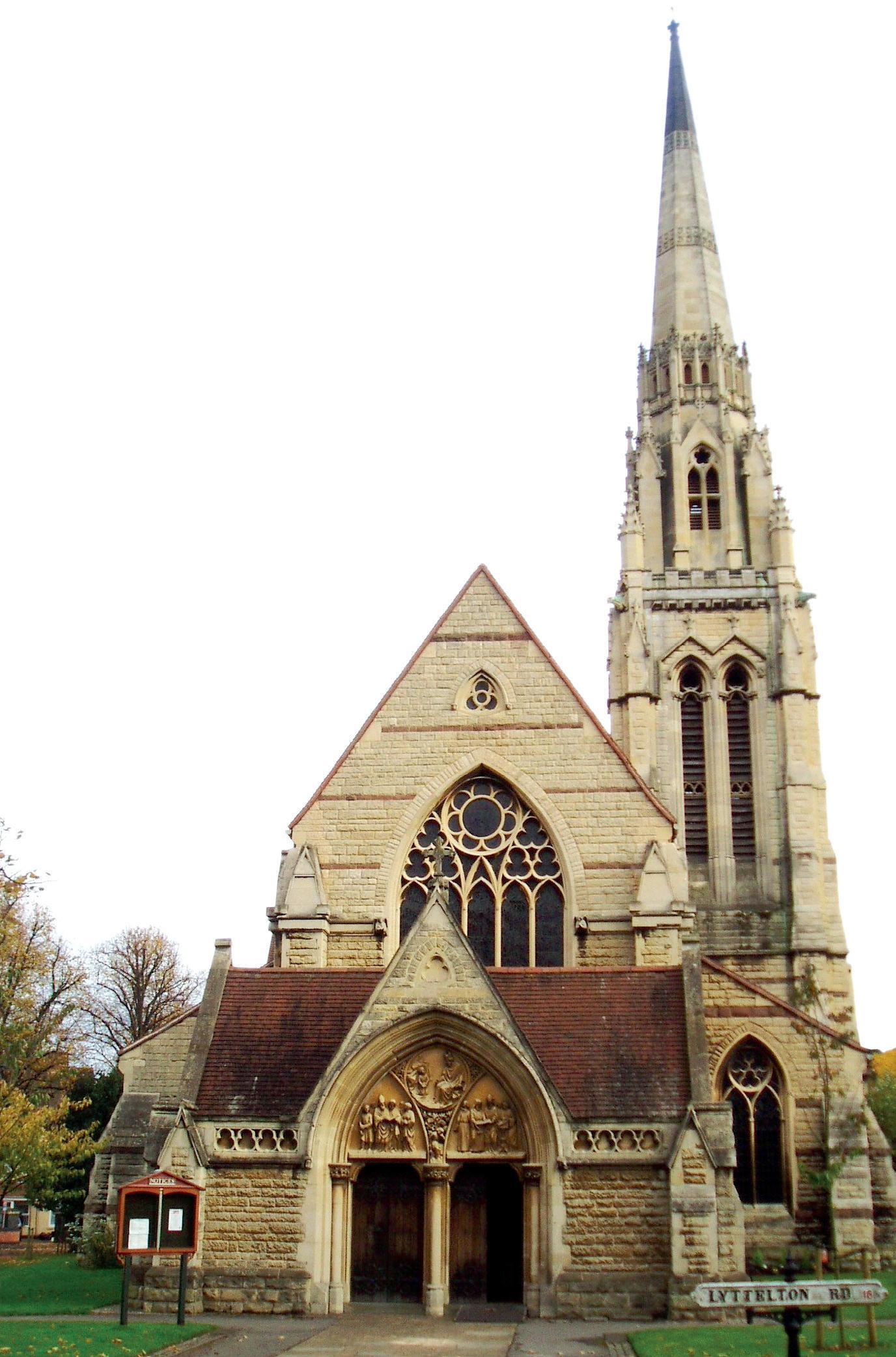
It’s still dark outside as 14 boys and girls assemble in front of two long rows of choir stalls to start their vocal exercises. With hands on their hips and their Christ Church Cathedral School uniforms variously tucked in, they continue the centuries-old tradition of Anglican church choristers, warming up their young voices.
But this isn’t a scene in a British cathedral city. This choir practice is held on the far reaches of Canada’s West Coast, in Victoria, British Columbia, where the city’s Christ Church Cathedral has launched Canada’s first and only fully immersive chorister program based in a cathedral school.
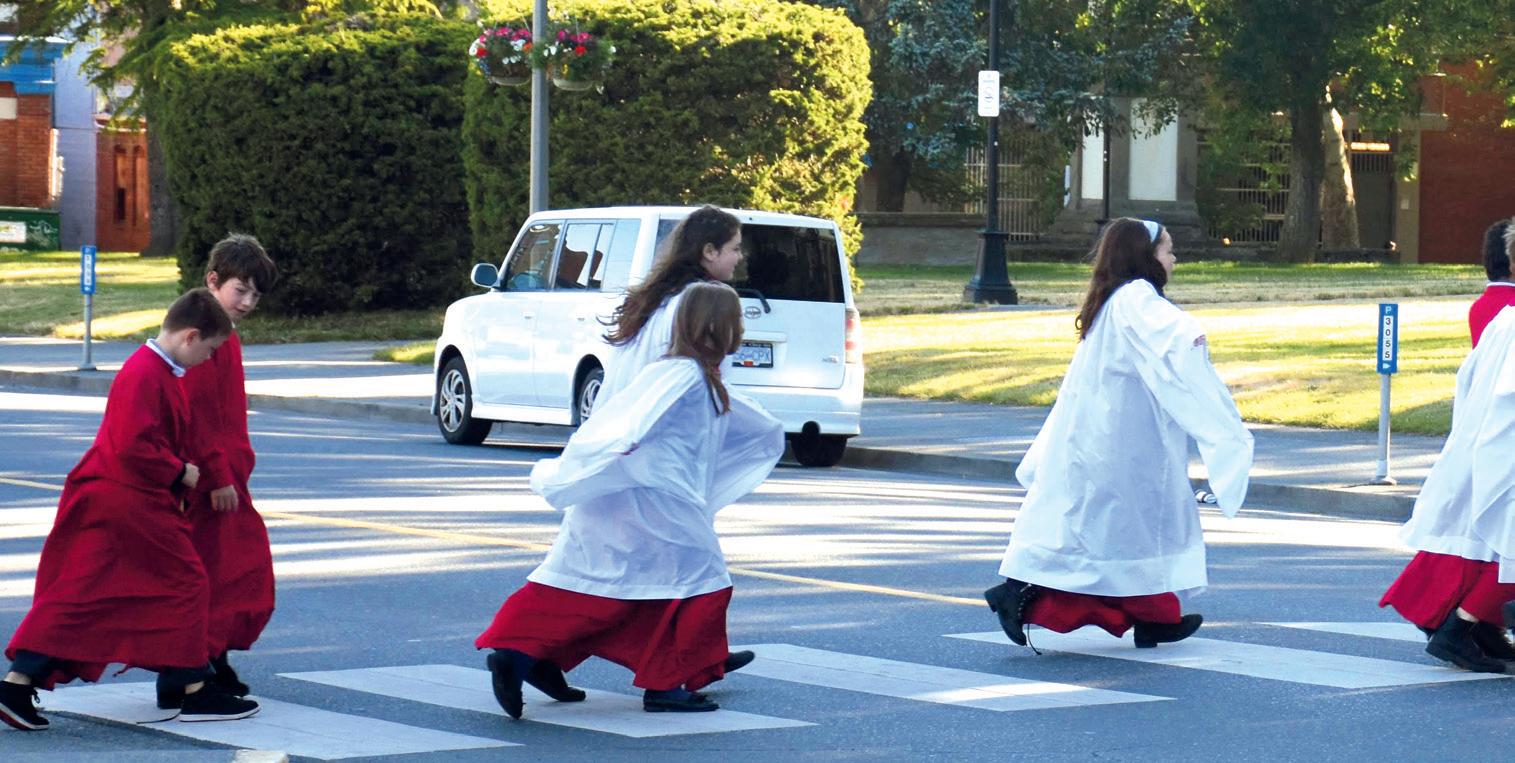
“I fell in love with this tradition in the UK and always wanted to start a similar program in Canada,” says Donald Hunt, a Canadian who was recruited as Director of Music at the cathedral from Edinburgh, where he was Assistant Organist at St Mary’s Episcopal Cathedral.

As the youngsters hit their high notes, the soaring vaulted ceiling in the cathedral’s Chapel of the New Jerusalem amplifies even the most tentative of voices. “The children are developing the sound that I was aiming for much more quickly than I thought they would,” says Hunt. “Perhaps it has something to do with this wonderful space.”
The scene invokes a centuries-old tradition, but it is illuminated by the dawning sun shining through striking
While cathedral chorister programs in North America are few and far between, a flourishing new program on Canada’s West Coast proves the exception.Christ Church Cathedral choristers with Donald Hunt far right Christ Church Cathedral Victoria, British Columbia Photo: Chris Thrackray
stained glass of modern design in a chapel less than 30 years old. And while the year-old chorister program pays tribute to its musical and spiritual roots, its location and the modern lifestyles of its Canadian choristers and their families are also taken into account.
Where British choristers’ lives are likely to revolve mostly around their cathedral and education schedules, Canadian participants often combine their music practices and study with various extra-curricular sports and other outdoor activities. One young chorister, Elysse, arrived at a recent 7.30am practice having already played ice hockey at a regional rink, while fellow singer Alyssa balances singing with dance classes. Alyssa recently took part in a performance by the visiting Royal Winnipeg Ballet’s production of The Nutcracker undertaking, among other roles, ‘a fuzzy-wuzzy polar bear’.
Despite their busy schedules, the youngsters arrive for practice “charged up”, says Hunt, who has gradually introduced his choristers to the cathedral congregation once or twice a month at its Wednesday Evensong service. He says there’s a different feel to the service as the choristers’ families now mingle with the regular congregation. “One of the chorister’s grandmothers shed tears of joy after an evensong. People get quite emotional when they consider what it means to the future of our church.”

The chorister program is also attracting interest in the adjacent cathedral school. “We were hoping that the program would be a draw to the school, and we’re delighted to have had five or six new applications already,” says Stuart Hall, the Head of School. With the growth of interest in the school, which is nearing capacity, and in the chorister program, Hall is hoping to increase scholarships to reward qualified children and encourage new applications to the school (which already has a music program). “We hope to raise the level of music tuition, which in turn will give Donald a larger talent pool to work with,” says Hall.
Sarah McDonald, Canadian-born Director of Music at Selwyn College Cambridge, and Director of the Girls’ Choir at Ely Cathedral, spent much of her youth in Victoria and knows the cathedral well. She’s always believed the cathedral school had tremendous untapped potential for a chorister program. “I’m delighted to see this going ahead,” she enthuses.
Successful applicants to the chorister program currently receive scholarships to help offset the cost of their school tuition. All but one of the current crop of choristers are students at the kindergarten to Grade 8 (age 13-14) cathedral school, which was founded in 1989.
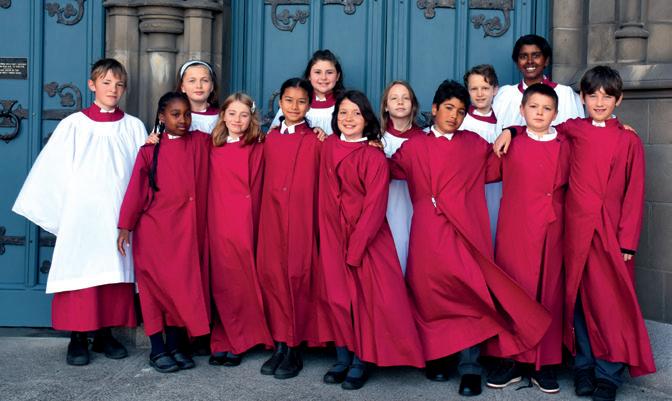
Aspirations to establish a chorister program have been percolating for several years among the cathedral’s leadership. Now that it has finally been realised, Christ Church Cathedral is reaping the benefits – according to the present dean, The Very Revd Ansley Tucker, who herself sang for 25 years in a semi-professional choir specialising in Early Music.
“The people who come are elated to see the children singing, and the children themselves are in an activity they enjoy. It’s so enlivening for people to hear children making music of this quality.” She praises the youngsters’ ability to learn difficult music quickly, which in turn expands their knowledge of liturgical music and its history. “You’ve got nine-year-olds memorising magnificats and being introduced to texts of scriptures and prayers through music, and this strengthens a musical and spiritual tradition.”
Sarah McDonald would concur. “It is fantastic to have a new generation of children learning to love the great choral repertoire. Choral singing is hugely important to so many people, and it seems obvious to be training [children] up from a young age so that it will thrive into the future.” Sarah sees this as the cradle of the next generation of choral singers and church musicians, and an engine of growth for the church.
“There is a regeneration of Choral Evensong [in England], with cathedral congregations rising during the week, despite a decline on Sundays.”
Apart from belting out the national anthem at sporting events, Canadians are a reticent bunch when it comes to public singing, and are becoming less vocal at mainstay church services, such as Christmas Eve carol services, says Tucker. But she feels that engaging a new generation in a chorister program is a step towards changing that. “The fact that we’re teaching children, especially boys, that music is important and requires skill and ardour is a bonus all round.”
“I smile a lot more now,” says Jude, who sang in the Victoria Children’s Choir and the cathedral school’s choir before becoming a cathedral chorister. While both children enjoy the repertoire of the program, Alan says he likes to “switch it up every once in a while” and sing non-church-related music on occasion. Both boys will be encouraged to join the cathedral’s back row when their voices change, and their participation in a chorister program will provide lifelong benefits.
“There is no better foundation for the musical development of a young person than to sing in a good liturgical choir that has a wide repertoire with excellent leadership and direction,” says Matthew Larkin, one of Canada’s leading Anglican choral directors, also a concert organist and the conductor of Caelis Academy Ensemble in Canada’s capital Ottawa, a choir he founded after he left his post as music director at that city’s Christ Church Cathedral. While not a church choir, Caelis follows the cathedral practice of using boys and/or girls in the treble line. “I have lived the tradition of cathedral music almost all my life. It’s part of who I am, not just as an artist but as a person,” Larkin says. He admits, though, that it’s increasingly difficult to establish that kind of lifelong influence on today’s children, given the increasing competition for their attention. When he was a child, “It would have been unfathomable for a game [of ice hockey] to be scheduled on a Sunday morning”, whereas now Canadian choir directors must consider chorister families’ desire to pack as many activities, often outdoor, into a weekend as they can.

Two of the boy choristers, Alan and Jude, both 12, were already keen choir members when they joined the program, and they play various musical instruments in addition to singing. Both particularly enjoyed a recent road trip to nearby Shawnigan Lake boarding and day school where a video recording was made of the service they sang in the chapel. This recording clearly influences how they sing:
Larkin also acknowledges that “the administration aspect of a cathedral type of choir is substantial” which is further challenged by a diminishing volunteer base of parents who are less likely to have sung in a church choir themselves and are therefore generally less motivated to enrol their children in one.


All those challenges makes Victoria’s chorister program all the more impressive, according to Larkin. “If Christ Church Cathedral Victoria can buck this trend ... it sends a compelling and exciting message. There is no stronger community than a choir. It builds confidence, expressive ability and a sense of collegiality in which friendships are made and sustained.”
Larkin’s thoughts are echoed by Matthew White, the acclaimed Canadian counter-tenor and Artistic Director of Early Music Vancouver, who now makes Victoria his home. He recognises the importance of the cathedral’s chorister initiative and credits his early chorister days with setting him on his life’s path. “It gave me the opportunity to appreciate really great music. And it provides an opportunity, especially for boys, to nurture a part of themselves that’s different.”
Like many Canadian boys, he juggled music with ice hockey, but it was his time in the choir that shaped his character. “You notice that different people have different talents, which can all be useful to the whole. Choral singing teaches children how to appreciate beauty and I can’t imagine a higher endeavour.”

Tucker agrees that the lessons learned in a chorister program extend well beyond the musical. “The great value of singing in a choir is that it’s a team sport and you learn when to support and when to let someone else shine.”

Internationally recognised tenor Benjamin Butterfield, now a professor of voice at the University of Victoria, spent several years at Christ Church Cathedral as a chorister along with his four brothers and sister. He thinks his university voice students would benefit from having the same liturgical music foundation that he received. “You develop an ear and discipline,” he says. “In church you have to be present and listen before you get up and sing. The church repertoire teaches different aspects of music, such as a sense of structure,
music history, language and sight-reading skills. Children don’t receive that breadth of training and experience in the average school choir. I also love the idea that, with church music, kids are singing about something a bit bigger than they are.”
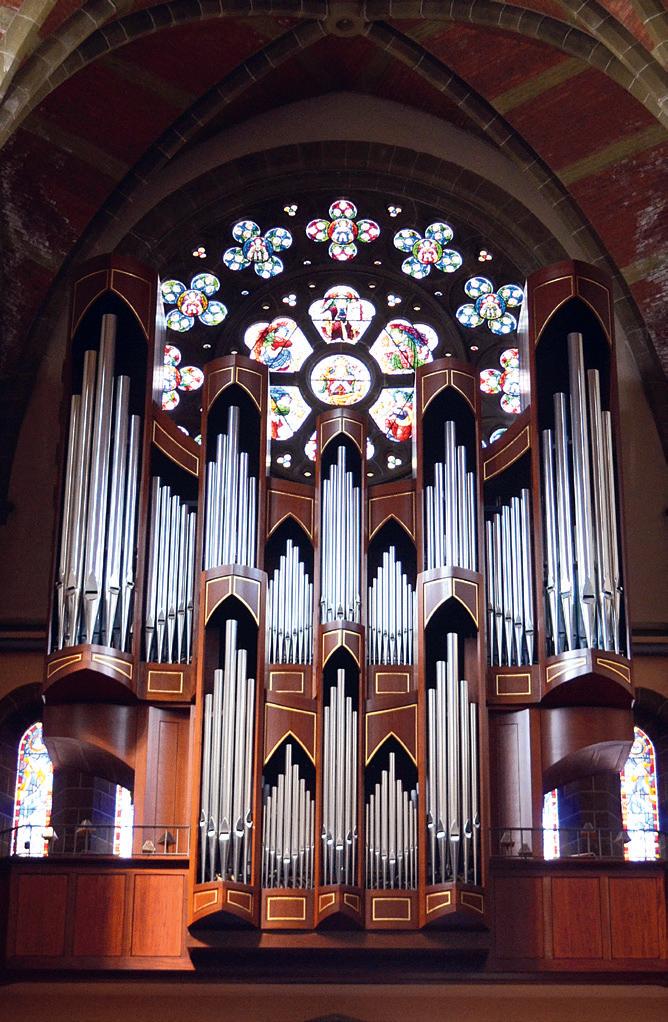

The chorister program has also engaged University of Victoria students as choral scholars to serve as mentors to the choristers and leaders to the cathedral choir sections. And while he’s passionate about challenging children to expand their musical skills beyond the latest pop culture songs, Butterfield is aware of the competition for the choristers’ time – but he is not dismissive of doing both. “Singing and sports can coexist,” says Butterfield. “That’s what creates well-rounded kids. The children are looking for experiential direction from their parents and it’s up to them to provide it.”
Although both the cathedral school and the chorister program are nearing capacity, there is always room for expansion, says Hunt. “There’s a wonderful base of support from the cathedral community, and strong interest from parents for activities where children can reach their full potential.” He sees a bright future and believes that any child with the desire, musical interest and aptitude can succeed.
“We are moving to a steady state of 20 children, and in the future I think building two full treble lines for boys and girls is quite achievable,” says Hunt. “There’s also potential to expand the chorister scholarship scheme, offering greater reductions in cathedral school tuition, widening the reach of the program so that more families can explore this magnificent opportunity for their children.”
As the morning practice wraps up, the choristers grab their backpacks and head out in the morning chill for the short walk to their school. Watching them, Hunt sees the embodiment of an ancient tradition but with a new generation of choristers who require a new approach. “To create something of enduring quality, it’s important to build something that works for this culture,” he says in appreciation of the challenges and opportunities ahead of him. “Yes, we have a deep cultural connection (to Britain) but we’re also Canadians.”
Perhaps no one embodies this philosophy better than Elysse. “I want to stay in this program,” she beams. “I like singing Evensong — and then I go and play hockey!”
As every cathedral musician knows, acoustics vary from one building to another, and even from one position to another within the same building. The effect may depend on the overall size of the space, the surface materials, the configuration of the architecture, the type of ceiling and the number of people in the building. Buildings are multisensory environments in which the dimensions of sound, not to mention smell, ritual, and even flickering candles and air temperature, affect religious sensibilities just as much as the visual setting. What is more, the experience of the listener is not the same as that of the performer.
As an architectural historian, I first became interested in the relationship between architecture and music in Venetian churches as a PhD student in the early 1970s. I realised
that sacred architecture cannot be studied solely in visual terms. It was in 16th-century Venice that the tradition of the coro spezzato, or divided choir, took root, pioneered by Flemish composer Adrian Willaert in St Mark’s between 1527 and 1562. But where in the churches did the divided choirs sing? Ceremonial books of the period are singularly unhelpful about their positions (‘the singers were in the usual place’), and musicologists have suggested various different alternatives. One solution in St Mark’s was to gather all the singers together in the raised hexagonal pulpit known as the bigonzo outside the choir-screen, but this offered no spatial separation. During Willaert’s term as maestro di cappella, the architect Jacopo Sansovino created two new raised singing galleries or pergoli on either side of the chancel, perhaps to accommodate the divided choirs.
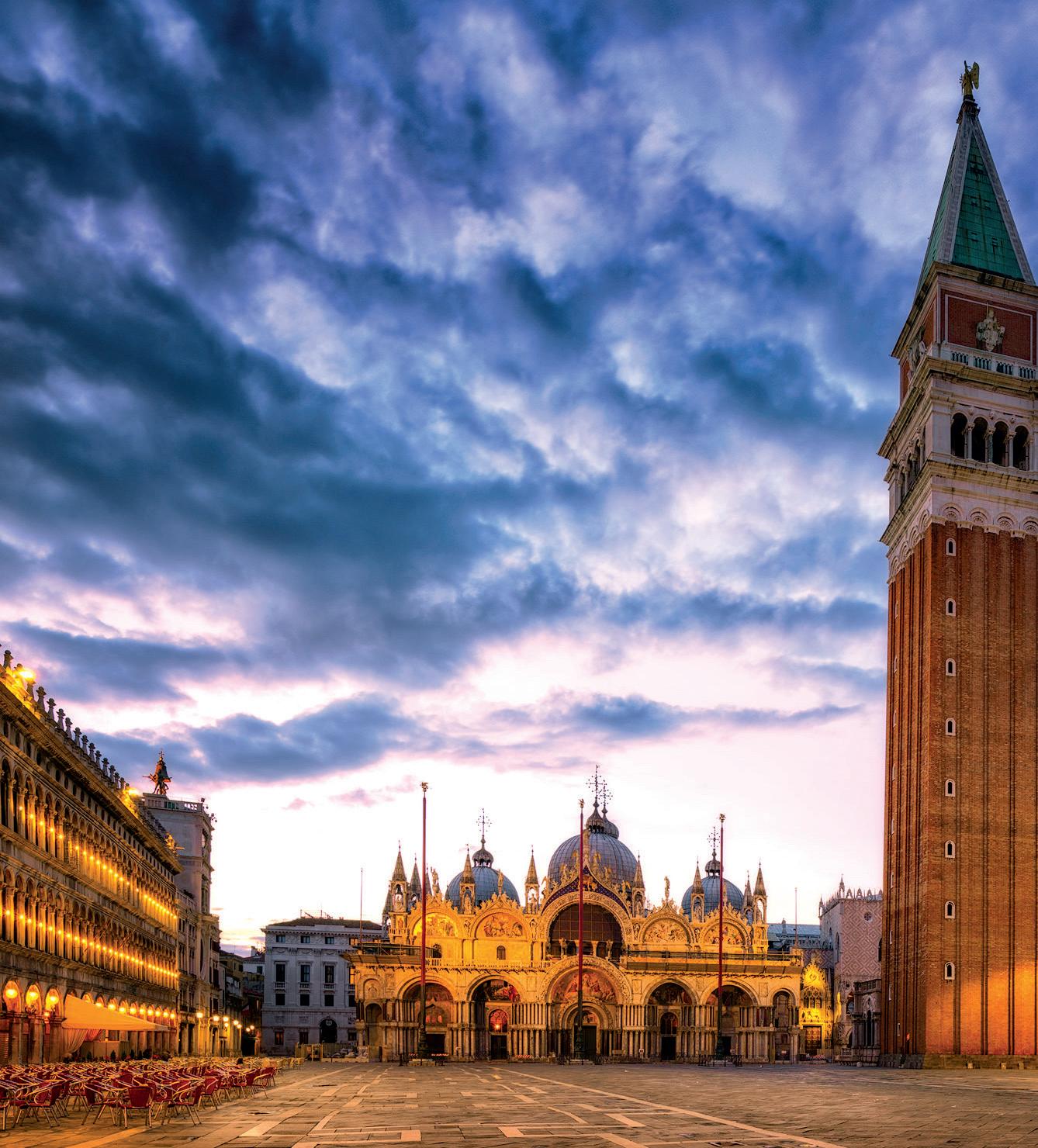
Some 30 years later, still hoping to investigate this subject, I found the ideal research collaborator: a young architect and historian called Laura Moretti who was also a professional cellist. Together we devised a research project to explore the relationship between architecture and music in Renaissance Venice and in 2005 were lucky to win funding from the Arts and Humanities Research Council. We assembled a team of acousticians and musicologists to help us, and held our first conference in Venice in 2006. To our surprise the various experts got on together splendidly, and they became our advisers and supporters as we devised our various investigations and experiments.

First of all, we selected 12 Venetian churches of various types and dates. The ducal chapel of St Mark’s took pride of place
as the mainspring of musical invention. We also looked at two monastic churches, three friaries, three parish churches, and three of the state hospitals, famous for their choirs of female orphans. Some were medieval buildings included for comparison, but the main focus was the work of the 16thcentury architects Jacopo Sansovino and Andrea Palladio.

Throughout the whole three-year duration of the project, Laura and I were busy with historical research in archives and libraries, so that we could integrate the musical information into the building histories, liturgical developments and religious events of the period. In particular, the Council of Trent (1542-63), which ushered in the Counter Reformation, promoted a new emphasis on intelligibility and decorum in church music. Meanwhile, the rapid growth of music printing in 16th-century Venice complicated the relationship between musical composition and specific locations. After the publication of Willaert’s Psalmi spezzati in 1550, for instance, the composer lost control over where, and by how many voices, the pieces would be performed.
The initial stage of the research involved making complex scientific measurements of the acoustics of each church, using the expertise of Davide Bonsi, then based at the acoustic laboratory at San Giorgio Maggiore in Venice. We hired a boat to transport the equipment all over the city, and in each church we selected various possible places where musicians might have performed, as well as a selection of listener positions (fig. 1). Because the sound at various frequencies was emitted by a siren-like instrument we had to place signs to warn the public of the potentially alarming noise.

To our amazement there was a very close correlation between the subjective and objective results, indicating that even untrained listeners are able to distinguish different acoustic properties.
The next stage was to record live liturgical music in the same spaces. Sadly, in Italy most Catholic churches have abandoned traditional sacred music since the second Vatican Council (1962-5). We needed an expert choir which could sing complex Renaissance polyphony at sight, ideally one which included children as the hospital churches had done. Luckily the choir of St John’s in Cambridge was willing to come to Venice for a week in April 2007 to carry out the choral experiments. I was thrilled when David Hill, the then Director of Music, agreed to take on the challenge. During the tour the choir gave only two proper concerts, one in the church of the Frari (fig. 2) and one in Santo Stefano, as the rest of their time was needed for our research.
We worked the choir extremely hard. Numerous recordings were made in every church to experiment with different positions of singers and listeners, often repeating the same piece over and over again to compare the various locations. Yet the commitment and involvement of the whole choir amazed me. Only the very smallest boys were given some time off to play on the beach at the Lido. With the help of our musicological advisors, especially Iain Fenlon, we chose a range of pieces from the repertoire of the time: elaborate polyphonic psalms and motets by composers such as Willaert, Giovanni Gabrieli and Monteverdi, as well as plainchant, falso bordone (simpler polyphony) and organ works. In St Mark’s our experiments confirmed that the Sansovino pergoli offered the ideal setting for coro spezzato, from the point of view of both performers and listeners. All the same, it was important to recognise that the situation was very fluid – all the composers at St Mark’s would have experimented with different singing positions. We also needed to find out how these innovative pieces sounded in other kinds of spaces.
We put posters up all over Venice inviting the public to come to hear the choral tests. Our listeners were a mixed bunch – they included ladies of the parish, local enthusiasts, tourists, our friends and colleagues, and parents or friends of the singers. The audience had to work too, for we circulated questionnaires in both English and Italian inviting assessments of various acoustic parameters, such as clarity, loudness, the direction of the sound, and envelopment Even the singers (both the boy choristers and the choral scholars) completed their own questionnaires in every church, giving their personal impressions of the acoustics.
Among the many memorable experiences during that week, a few stand out. We usually invited the priest of the church to read a text so that we could record the acoustics of the spoken word, but in one parish church the priest unexpectedly went home. The College’s Dean came to the rescue by delivering an impromptu mini-sermon on the theme of Mary Magdalene (just right for Easter Monday) from the beautiful marble pulpit. The most transcendental moment was when we were exploring the acoustics of the octagonal domed burial chapel on the corner of San Michele in Isola. The chapel is lined with marble reliefs of the life of the Virgin and has a white stone dome constructed like an igloo. Spontaneously the choir decided to sing Mouton’s Nesciens Mater, although it was not on our list of chosen pieces, and the result was unforgettably evocative.
We came back to Cambridge with 16 CDs of recordings, made by expert sound engineer Matthew Dilley, and a suitcase full of questionnaires. The next few months were spent analysing all the acoustic data and the listeners’ responses. Because the audience questionnaires invited numerical answers on a scale of one to ten, we could quantify their assessments of clarity, reverberation, loudness etc and compare these with the measured acoustic parameters. To our amazement there was a very close correlation between the subjective and objective results, indicating that even untrained listeners are able to distinguish different acoustic properties. We believe this is the first time that a systematic comparison has been made between objective acoustic measurements and subjective audience perceptions of the same phenomena.
One of the most notable results was the clear division of acoustic properties according to the type of church. The driest acoustics were found in the parish churches, which were small, compact spaces, mainly used for family rites of passage such as baptisms, marriages, funerals and commemorative masses. As our experiments took place in the week after Easter, every church had brought out its best carpets and hangings, making the acoustics even drier – and not at all pleasant for the singers.
At the opposite extreme, the large monastic churches had very long reverberation times, which gave plainchant a rich spiritual resonance, but made complex mensural polyphony dissonant and indistinct. The most difficult acoustics were

those of the two Palladio churches, the Redentore and San Giorgio Maggiore, with their high, smooth domes, huge interiors and hard surface materials. This seemed surprising for two reasons. One was Palladio’s known interest in musical harmony and proportion, and the other was the fact that each of these churches was visited annually by the Doge in a great ceremonial festivity, using the choir and liturgy from St Mark’s.
In between were St Mark’s and the hospital churches. St Mark’s, with its five golden mosaic domes and marble panelling, remained the paradigm, but it had very different acoustics from those of other churches. As the private chapel of the doge and the burial place of the Evangelist, this was the centre of state ceremonial (St Mark’s has only been the cathedral of Venice since 1804). Certainly within the chancel, where the doge, visiting ambassadors, and high state dignitaries had their pews, the listening experience was extremely good. By the early 17th century, when instrumentalists joined the singers on festive occasions, even more positions were found for musicians in niches and raised galleries around the chancel, to give this privileged space even more benefit. It should be noted that John Eliot Gardiner’s famous video recording of the 1610 Vespers, performed to an audience in the nave in 1989, arranged musicians and singers around the crossing in a configuration that had never existed in Monteverdi’s time.
The optimal acoustic for the new polyphony was found in the hospitals. As these foundations relied on donations from the public to sustain their institutions, they had to ensure that their churches offered the best possible acoustics. The most beautiful was that of the church of the Ospedaletto, where the female orphans would have sung from the raised gallery above the high altar. Listening to the choristers of St John’s singing from that position, our audience remarked on the strange and moving effect of angelic voices descending from
above. Interestingly, our scientific acoustic measurements confirmed this effect of the vertical transmission of sound.
Giving more detail to all of the above, in 2009 we published the book Sound & Space in Renaissance Venice: Architecture, Music, Acoustics, by myself and Laura Moretti, and set up a website with selected music tracks www.djh1000.user.srcf.net/ soundandspace/. In fairness to St John’s choir, it should be stressed that none of the music was rehearsed, and tracks with poor acoustics as well as those that worked well musically have been included. The technical appendix, which explained and interpreted the results assembled by acousticians Davide Bonsi and Raf Orlowksi, was written by Cambridge physicist Malcolm Longair.
As a coda I should mention a fascinating extension of our project carried out in 2009-10 by a young MPhil student in Cambridge called Braxton Boren, using the specialised Danish acoustic software Odeon© to make virtual reconstructions of several of our chosen churches. At the Ospedaletto, for example, he was able to illustrate graphically the effect of sound seemingly falling from the ceiling like rain (fig. 3) His virtual acoustic model of the Redentore showed sound rising into the dome on its high cylindrical drum, and swirling around for some time before descending to the crossing to mix with the sounds emitted later on. At the same time, other sound waves bounced off the façade wall of the church. This cacophony of delayed sound led to the performance difficulties that we had experienced. However, when Braxton filled our virtual model with the wooden stands, draperies and hangings that would have been erected for the annual ducal festivity, and added hundreds of virtual spectators in heavy ceremonial robes, the reverberation time dropped to a remarkable degree. Thus we were able to confirm our suspicions that the large number of spectators on the annual Festa del Redentore would have allowed excellent audibility.

Deborah Howard is Professor Emerita of Architectural History at Cambridge University, where she is a Fellow of St John’s College. During her career spanning more than four decades, her research has focused especially on the art and architecture of Venice and the Veneto; the relationship between architecture and music; and cultural exchange in the eastern Mediterranean. Apart from the book Sound&Spacein Renaissance Venice (2009), she and Laura Moretti co-edited TheMusicRoominEarlyModernFranceandItaly (2012). Her latest book is TheSacredHomeinRenaissanceItaly (2018, with Mary Laven and Abigail Brundin).
Laura Moretti is now a Senior Lecturer in Art History at the University of St Andrews.
Braxton Boren is now Assistant Professor of Performing Arts at the American University, Washington DC.

Members of FCM will be delighted to know that there is to be a second ‘Cathedral Choristers of Britain’ concert, this time at Liverpool Cathedral on 13 June 2019. The first such concert, at St Paul’s Cathedral on 26 April 2016, launched FCM’s Diamond Fund for Choristers and brought together choristers from 63 choral foundations – one from each establishment, representing the greatest number of cathedral choirs ever under one roof – together with the choir of St Paul’s Cathedral, in a remarkable and unforgettable performance, prompting some in the media
to call it ‘the world’s first cathedral supergroup’. Readers of Cathedral Music with keen memories will recall Alexander Armstrong’s excellent speech extolling the benefits of being a chorister in the November edition of that year.
The intention behind these concerts, which are now planned to take place at three-yearly intervals at different cathedrals throughout the United Kingdom, is to showcase the talent of Britain’s cathedral choristers and the directors of music who train them; to raise awareness of this jewel in the UK’s cultural,
educational and heritage crown against a background of increasing pressures on cathedral finances; and to generate income to safeguard and strengthen Britain’s world-renowned choral tradition.
The Liverpool concert will feature choristers from cathedrals all over the UK, both boys and girls, and music from the 17th to the 21st centuries, including a new work by former Gloucester Cathedral chorister and Chamberlain of York Minster Richard Shephard. The concert, organised by FCM’s Diamond Fund for Choristers, will be conducted by Lee Ward and Christopher McElroy, Directors of Music at the city’s Anglican and Roman Catholic cathedrals. Dr John Rutter, the internationally acclaimed composer, will speak at the concert about the value of choristership
Lee Ward, Director of Music at Liverpool Cathedral, said, “This is a tremendously exciting event for Liverpool Cathedral, and I can think of no better building to host such a large and distinguished set of choristers. It is fitting that we are joined by our colleagues from the Metropolitan Cathedral, as Liverpool has a fine track record of ecumenical collaboration. The concert will consist of wonderfully uplifting and joyful music, showcasing the very best of cathedral music and musicians. This city is justly famous for its friendliness and we look forward to giving a huge welcome to all the talented young singers and their supporters.”
The largest cathedral in the UK and fifth largest in the world, Liverpool Cathedral is entirely self-funded through its enterprise and fundraising efforts and activities, which in turn help keep the cathedral free to enter. It does not receive public or government funding. Liverpool Cathedral also has the largest pipe organ in the United Kingdom, with 10,268 pipes, and its Vestry Tower stands an impressive 154m above the River Mersey.
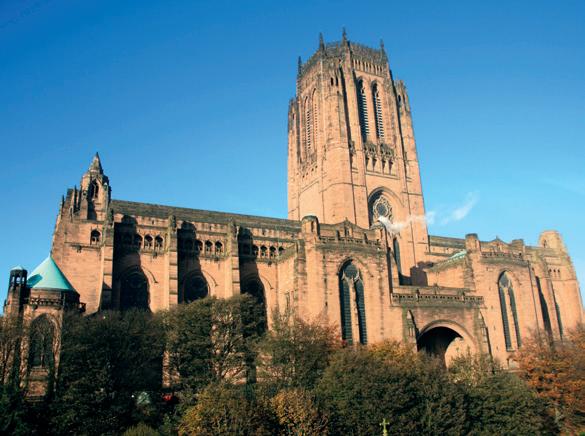
FCM Chairman Peter Allwood said that Friends of Cathedral Music was determined to do everything in its power to sustain and strengthen the UK’s unique choral heritage for the benefit of the nation, as well as the unrivalled development opportunities it offers young people from all backgrounds.

FCM launched the Diamond Fund for Choristers in 2016 to raise funds from public donations for grants to support cathedral choristers. Such grants are now supporting choristers at 24 choral foundations round the UK. For more information about the Diamond Fund for Choristers, visit www.fcm.org.uk/diamondfund-choristers/about/


Over the last 27 years I have been fortunate to have been associated with four choral foundations: Lincoln Cathedral, King’s College Cambridge, London’s historic Temple Church, and St George’s Chapel, Windsor Castle. Working in these glorious buildings, alongside some excellent musical colleagues, has been enriching and humbling, and I count myself very fortunate to have been able to play a small part in maintaining the English choral tradition.
Since arriving in Windsor in 2013 I have been Director of Music of the College of St George, Windsor Castle. I am supported by an Assistant Director of Music, an organ scholar, a music administrator, two chorister singing teachers, and colleagues at St George’s School where all of our choristers are pupils. The 12 lay clerks – housed with their families in Horseshoe Cloister at the west end of the chapel – are all professional singers. The choir has been in existence since 1348, and, with the exception of the Commonwealth period (1649-60), has sung services in the chapel continuously since then. The chapel is a magnificent building which cannot fail to inspire. Every day, I find myself struck by its beauty and history. It has two different acoustics: the nave is very resonant, and the quire is intimate and much drier.

Windsor is, in many respects, similar to most collegiate and cathedral foundations, with eight sung services each week during term-time, although it is a Royal Peculiar and is both self-governing and self-financing. It is, at its heart, a community of people who live and work together to offer worship to God, prayers for the sovereign and the Order of the Garter, service to society and hospitality to visitors. The College of St George was founded in 1348 at the same time as the Order of the Garter and now consists of St George’s School, St George’s House (both of which now operate as charitable companies separate from other elements of the College), the Military Knights of Windsor, the chapter library and archives and the choir as well as, at the centre, the chapel itself. The buildings, owned and occupied by the College, take up a quarter of Windsor Castle together with the school buildings outside the north wall.
The connection between the Royal Family and St George’s Chapel is a strong one, and members of the Royal Family have been baptised, married and buried there. The choir sings regularly in the presence of HM The Queen and other members of the Royal Family, at annual events such as the Garter service, special services such as Royal Maundy, and family occasions. In 2018, the choir had the great privilege of singing at both royal weddings in St George’s Chapel: for TRH The Duke and Duchess of Sussex in May, and for HRH Princess Eugenie and Mr Jack Brooksbank in October. As Director of Music, I was in overall charge of the musicians and musical items at both services and I greatly enjoyed working alongside musician colleagues from around the UK. I am often asked if the choir – particularly the boys – were nervous. If they were, they certainly didn’t show it! To me, the choristers seemed more excited and, in particular, inquisitive to see the daily change in the chapel’s appearance as it was being rigged and decorated over the preceding days and weeks. This professionalism of the children is a thread that has gone through my career to date in all the foundations in which I have worked: children performing to their full potential in high-pressure situations (during my time at King’s, I always admired the lone chorister who stepped forward to sing the first verse of ‘Once in Royal’ to millions at the Festival of Nine Lessons and Carols; I remain convinced that the choral and organ scholars found these occasions rather more terrifying than the choristers!).
Looking back, my development as a musician has been – as you would expect – greatly influenced by each institution that I have served. Each foundation had its own style and way of operating and it was interesting for me to witness how each ‘tradition’ was being moulded and renewed by the respective directors of music, all of whom had different approaches to music-making and choral training. As I consider how I ‘do’ things, it is not surprising that I am indebted to all with whom I have worked. Colin Walsh, the then Organist and Master of the Choristers at Lincoln Cathedral, opened my eyes to organ playing. His skills as an interpreter and accompanist were (and still are) second to none and his symbiotic relationship with the Father Willis instrument seemed to me to be at the heart
of the music-making at the cathedral. Colin oozed musicality, and watching him rehearse the choristers was intriguing: not much was said but they sang as Colin played – wonderfully shaped phrases with a rich sound that belied a small number of boys. I was very fortunate that for most of my year as organ scholar at Lincoln there was no assistant organist, which meant that I was playing for all the services each week. This immersion enabled me to feel a little prepared for when I went from Lincoln to King’s College Cambridge, where for four years I was organ scholar.
For me, King’s was a perfect union of building: acoustic, choir and organ, which I found intoxicating. The hard work was worth it – the wonderful performance opportunities left an indelible impression on my life. Stephen Cleobury taught me how to prepare properly for a service or performance and that a midweek evensong on a cold and wet November evening should be as important as a flagship event such as the Christmas Eve carol service. King’s had a colossal music list and Stephen’s ability to plan the rehearsal of repertoire showed me the importance of properly planned rehearsals. We worked hard because we saw that Stephen worked hard: he didn’t expect anything from a person that he wasn’t prepared to do himself, and his attention to detail was astonishing. I was very conscious of the illustrious list of previous post-holders and the position that King’s holds in the hearts of church music lovers and, through the Nine Lessons, the public. King’s is an extraordinary tradition and it was during this time that I discovered an interest in training choristers. For me, King’s cemented a desire to work as a church musician.
For a weekend during my first couple of weeks at King’s, former organ scholar Stephen Layton came back to King’s to fill in for Stephen Cleobury. Although I was still finding my feet, Stephen Layton and I got on very well and I was very pleased to be asked by Stephen to do the odd thing in London. When I came to finish at King’s, Stephen was about to take up the position of Organist & Director of Music at Temple Church where he succeeded John Birch. Stephen invited me to help train the choristers and play the occasional service (over time, this became more formal and I was appointed Sub Organist and then Organist) and being located in London
enabled me to build up a diverse portfolio of freelance work which gave me different musical experiences. At this time (1997), it seemed that the Temple Church was far behind any other establishment in terms of infrastructure – no computers nor office administrators! Stephen’s appointment was timely. Against some resistance from those who thought that it should all remain as it was with the great ‘GTB’ (Sir George ThalbenBall), Stephen was able to continue and develop the great Temple tradition with his trademark instinctive and energetic music-making. It was exciting to be part of this regeneration at Temple which culminated in the commissioning and performance of Sir John Tavener’s magnum opus The Veil of the Temple. On Stephen’s appointment as Director of Music at Trinity College Cambridge in 2006, I was appointed Director of Music at Temple Church and I strived to continue and build on the work that Stephen had begun. It was a great delight during my tenure to record four CDs at the Temple, to be artistic director of a year-long festival, and for the choristers to be invited to sing Britten’s A Ceremony of Carols at the opening of the Britten Centenary celebrations at Snape Maltings.
My appointment to Windsor in 2013 enabled me to re-enter the world of daily sung services (Temple had one primary service per week but served its community with occasional evensongs and many extras such as memorial and wedding services. It also had moved with the times to reflect the multicultural makeup of the bar with ecumenical events). The daily services provide a rhythm that I had missed and longed for after 16 years in London working at Temple and pursuing a wide range of freelance work. Like many cathedral institutions, rehearsal time is scarce: the choristers rehearse in the morning but the full rehearsal for each service with the lay clerks and organists is 19 minutes during the week (30 minutes at a weekend to allow for more developed repertoire) and one 45-minute Friday evening rehearsal. This took me back to my Lincoln days when the choir had (I think) even less time to rehearse; my experience of the collegiate choirs is that they seem to get more time to rehearse before each service (as did the Temple on a Sunday morning).
Despite differences on the surface, all institutions face similar battles: how to recruit enough choristers and adult singers,

how to fund the music and even how to remain relevant to the changing world. At Windsor, I am fortunate that I have an excellent set of professional lay clerks. The proximity to London, with its many professional singing opportunities, has meant that vacancies attract a good number of talented applicants. Likewise, we are able to offer an annual organ scholarship to a pre- or post-university student who can gain experience working with the choir and playing the organ in addition to living in the community.
It seems to me that the recruitment of choristers has generally become harder over the years. My experiences at Temple and Windsor are similar: families are increasingly reluctant to give up their free time; there are more competing activities available to children; fewer people are aware of church music or they see it as elitist, etc. At Windsor, as at most institutions, we rely on a variety of outreach events such as ‘Chorister for a Day’, and I am pleased that at the moment we seem to be finding the talented children needed. Many more families now rely on extra funding to meet the cost of choir school fees and this seems to be a nationwide issue that institutions are striving to address.
Over the 27 years, inevitable changes have occurred and the demands of working at the highest levels of church music continue to evolve; I often wonder if the main role of directors of music has changed to be primarily that of a managing director rather than a musician. But the end goals have remained consistent. We are all committed to maintaining an unparalleled musical tradition, to enhancing the liturgy, and to – one hopes – providing hope, inspiration, and space to reflect for those who visit and worship in our chapels and cathedrals.

In celebration of The Sixteen’s 40th anniversary, An Enduring Voice brings together choral masterpieces past and present, celebrating the group’s musical journey over the last four decades.

For a list of tour dates and locations, and to book tickets visit www.thesixteen.com
August 18 August 18 August 18 August 18 th-25 2525 25 th 2019 2019 2019 2019
The Priory Church, Edington, Wiltshire BA13 4QN Laudate
Commission by David Bednall
Friday Requiem: Duruflé
Director: Richard Pinel Director: Richard Pinel Director: Richard Pinel Director: Richard Pinel
with
Matthew Martin, Jeremy Summerley, Peter Stevens
Information from 01380 831425
www.edingtonfestival.org www.edingtonfestival.org
Reg Charity No: 1099266
This article arose from a request that I should write about my recent recording, Organs of the Lake District, and about the career which led to it. I hope that what I have written shows one of the many paths which can be followed within the absorbing subject of the church and its music.

The experience of being an organ scholar at King’s provided a unique musical training from one of the foremost directors
of his day, David Willcocks. No detail was allowed to pass unnoticed, and the problems inherent in accompanying the world-famous choir with neither a mirror nor a camera to assist (as it was then) required considerable concentration. David himself seemed to have inexhaustible energy, and was equally at home directing a solo treble or Mahler’s Symphony of a Thousand. In addition to all the work at Cambridge, he generously provided opportunities to play the organs in the

Royal Festival Hall and Royal Albert Hall in connection with the Bach Choir, as well as offering foreign tours with the King’s choir. Not having myself been a cathedral chorister, there was a great deal of repertoire to learn in a short space of time, which meant much time alone in the chapel until late in the evening.
Preparation for King’s was very much in the hands of the Director of Music at Hymers College, Hull, where I was at school. Graham Watson was a self-effacing man who was also in charge of music at St Mary’s, Beverley (not the Minster), where there was a flourishing boys’ and men’s choir which sang all the core repertoire of anthems and settings. For several years I sang in the choir or, increasingly, played the organ every Sunday, in addition to taking Associated Board organ exams there, (the examiner for Grade VII being Harold Darke), and subsequently I worked towards the ARCO and FRCO diplomas. At the Minster was Alan Spedding, who remained a lifelong friend and invited me to play there several times.

The RSCM played its part, notably in the form of cathedral courses led by the inspirational Martin How, at Durham Cathedral, York Minster and Westminster Abbey. It was at this time that I made the acquaintance of Timothy Day, whose recent book I Saw Eternity the Other Night sheds interesting light on the English singing style. In later years, John Cooke provided an opportunity to play the organ for the Northern Cathedral Singers, as did his successor Gordon Appleton.
After Cambridge, there was an invitation to join the new music department at the University of Lancaster (founded in 1964), where John Manduell’s successor Denis McCaldin was in the process of developing a course which sought to balance performance and composition with more traditional academic teaching. This was an exciting challenge, and led eventually to the installation of a fine organ in the Great Hall, built by John Budgen (of Bishop & Son) with Ralph Downes as consultant. As a result of this the post of University Organist was created, which involved playing for degree ceremonies in the presence of the chancellor, Princess Alexandra, and later Sir Chris Bonington. The formation of the Lancaster Singers was another landmark, an auditioned adult chamber choir drawn from the city, the university and the former St Martin’s College, which is still going strong and performs mainly sacred music in the priory and cathedral. My work in and around Lancaster University was recognised in 2006 with the award of an honorary fellowship.
An opportunity to become the organist and choirmaster at Cartmel Priory (the so-called ‘cathedral of the Lake District’), in conjunction with my university work, was too good to resist and led to some memorable occasions, not least during the 800th anniversary when Sir David Willcocks conducted a performance of Brahms’s Requiem. However, cathedral music still beckoned, and in 1989 I moved to become the assistant organist to Andrew Seivewright at Carlisle Cathedral. Subsequently I worked with his successor, Jeremy Suter, and most recently directed the Carliol Choir, Carlisle’s voluntary choir, for several years.
Many musicians reach a stage where a freelance career beckons, and in 1996 I moved to Keswick to take charge of the music at Crosthwaite Church and Keswick Choral Society. This was part of Cumbria Rural Choirs, an organisation which included choirs from other towns and villages, and gave an annual concert in the Sands Centre, Carlisle under
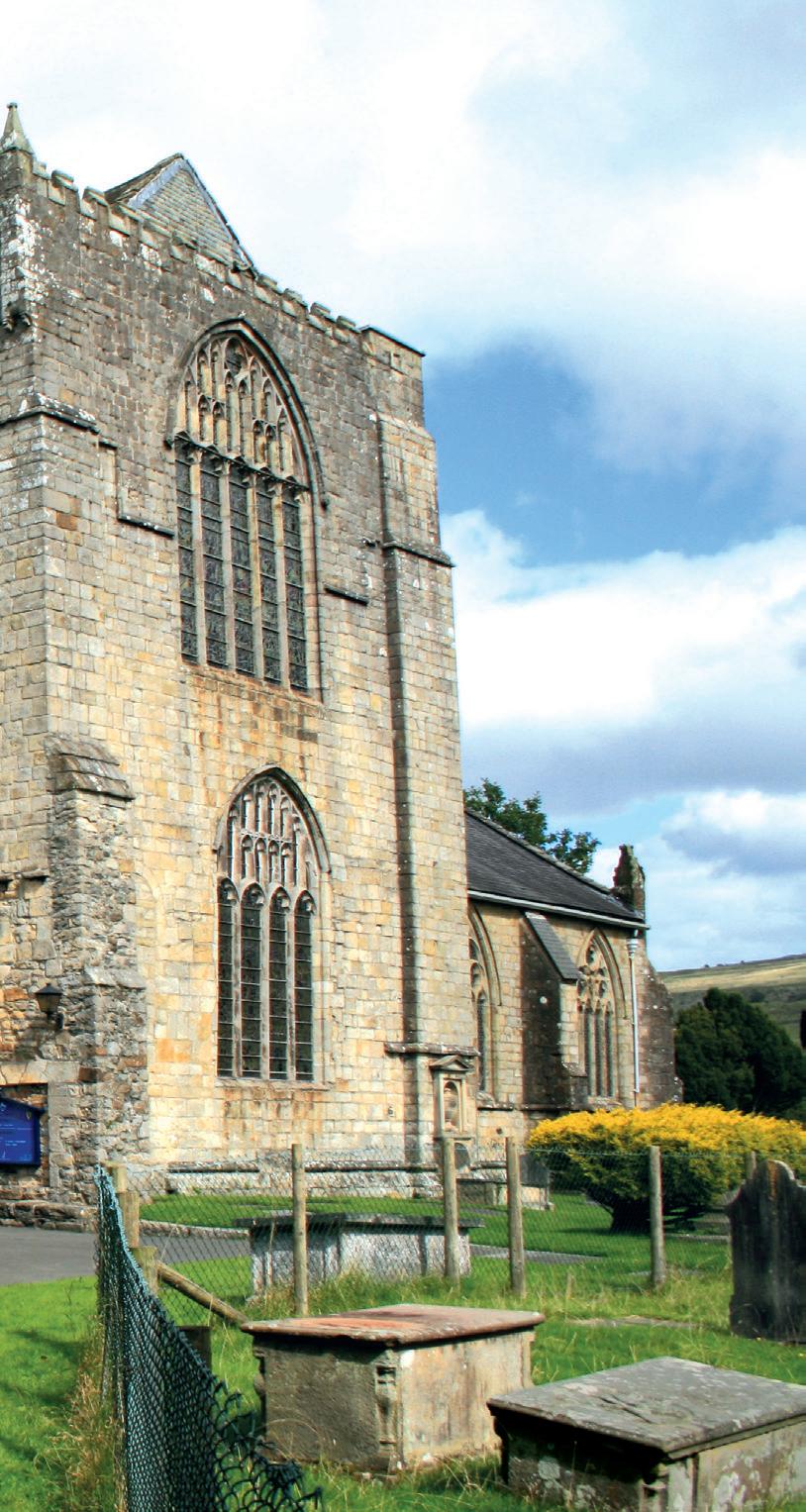
distinguished conductors such as Philip Ledger, Donald Hunt and Simon Halsey, for whom I acted as chorus master. For their 60th anniversary I composed A Cumbrian Canticle, to poems by Ruth Padel. In addition, I did a great deal of private music teaching, and eventually became an examiner for the ABRSM, working both in the UK and in the Far East.
Musical performance has always played a key role in my life, both conducting and perhaps more especially organ-playing. In this I was influenced by hearing Peter Goodman, who was City Organist of Hull for many years, and whose son Roy had sung the famous top Cs in the first King’s recording of the Allegri Miserere. Lessons with André Marchal in Paris provided further inspiration, and Simon Preston and the late Peter Hurford were role models to live up to. Recitals followed in many parts of the UK and abroad, as well as accompanying choirs such as the Abbey Singers on tour to the USA and other choirs in the north-west.

Composing has remained an abiding interest and was encouraged by Robin Orr and Alan Ridout at Cambridge and Nadia Boulanger in France. It has resulted in the publication of several pieces for organ and for choir by OUP, Banks and Animus, and most recently a carol Sing with Joy to words by Prof. Robert Fowler. Currently under consideration is a setting of some poems by Wordsworth (who is forever associated with the Lake District) to be sung by Cumbria Rural Choirs in 2020 to celebrate the 250th anniversary of Wordsworth’s birth. Although Wordsworth mainly turned to nature for his inspiration, his appreciation of cathedral music is well expressed in his sonnet Inside of King’s College Chapel, Cambridge ‘where music dwells/Lingering – and wandering on as loth to die; Like thoughts whose very sweetness yieldeth proof/That they were born for immortality.’
And what of the present? St Oswald’s Church, Grasmere is a little gem in the heart of the English Lakes World Heritage Site, attracting thousands of visitors to view Wordsworth’s grave and soak up the atmosphere. There is a robed choir and the services are quite traditional in style and musical repertoire, including a range of settings and anthems, with extra singers joining in for choral evensongs and the carol service. There are also summer concerts, (one last year included the King’s Men from Cambridge), which are well supported and are currently raising funds for the renovation of the organ. It is a fine 3-manual instrument built by J J Binns in 1923, in memory of Nellie Taylor, who died in the First World War. Members of her family are supporting this project, for which the consultant is Paul Hale; the work, which includes a few small tonal changes and some modernisation of the console, is to be carried out by Andrew Carter, the organ-builder in Wakefield.

Cathedral music has been a thread running through my career since I was first taken to a diocesan festival in York Minster in about 1960, under the direction of Dr Francis Jackson. It is therefore not surprising that part of my new CD, entitled ‘Organs of the Lake District’, was recorded on the organ of Lancaster RC Cathedral, the diocese of which stretches from Preston to the Scottish border.
The aim of the recording was to draw attention to some of the fine organs in Cumbria and North Lancashire, and the music written for them by composers with local connections. Grasmere, Keswick and Patterdale all fall within the boundaries of the Lake District National Park, which in 2017 became a UNESCO World Heritage Site. Although the Lake District is better known for its poets and painters, all the music on this CD has some connection, however tenuous, with the area, often reflecting the inspiration of its unparalleled beauty and majesty.
in Harrogate who had heard the King’s recording from about 1971 of Myn Liking by R R Terry featured on Classic FM, which she described as ‘absolutely divine’.
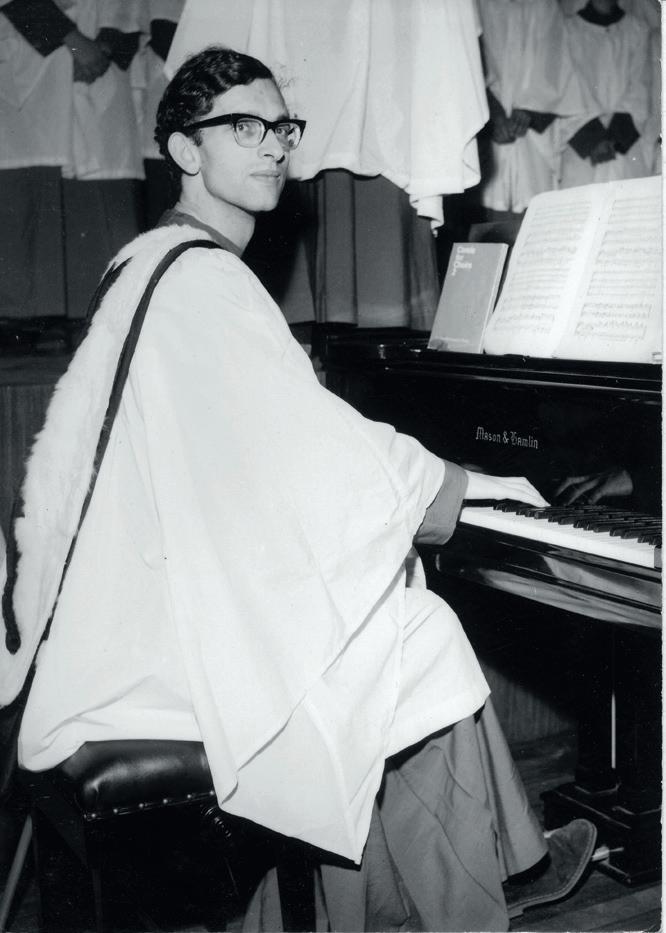
On this new CD (see the review on p63), superbly produced by Neil Collier, I have included a piece by Reginald Dixon, the distinguished organist of Lancaster RC Cathedral from 190971. His Baroque Suite, published in 1959, makes use both of the ancient modes and the Baroque style of registration, which was making a comeback at the time. But the only truly Baroque work on this CD is the Overture to the Occasional Oratorio, which Handel composed in 1745 to celebrate the repulsion of the Jacobite rebellion; its final movement is popularly known as ‘The Duke of Cumberland’s March’. The arrangement by W T Best (himself a Carlisle man) is somewhat symphonic in style, and has been pruned a little in this performance on the Hill organ in St Patrick’s Church, Patterdale. There are two postludes by Dr Frederick Wadely, the much-loved Master of the Music at Carlisle Cathedral from 1910-1960, also recorded at Patterdale. Gordon Cameron’s Fantasia on St Denio (the tune to ‘Immortal, Invisible’) is dedicated to another Dixon, the redoubtable Lieutenant-Colonel George Dixon, who had a great influence on the design of the organ in St Bees Priory, and other organs in the former Cumberland, whilst Cameron himself became the organist of St Mary’s Episcopal Cathedral, Glasgow.
Cecil Armstrong Gibbs lived in Windermere during the Second World War, and his Six Sketches, published in 1954, abound in lyrical melodies and some bolder colours, which ideally suit the Binns organ in St Oswald’s Church, Grasmere, as does the Air in C major by Sir Arthur Somervell, originally for string quintet. Somervell was a member of the K Shoes dynasty of Kendal, becoming prominent in the field of musical education, and is buried in Grasmere cemetery. Adrian Self has been the organist of Cartmel Priory since 1989, and runs his own music publishing business, Animus. His Cartmel Priory Suite illustrates his sometimes whimsical but always craftsmanlike style, and somewhat unusually perhaps, this was written in 2011 for the then Vicar of Cartmel.
As the chairman of the Cumbrian Society of Organists, I am well aware that there are other organs which could have been included, some, such as Cartmel and St Bees Priory and Carlisle Cathedral, having already been recorded by other artists, and others of considerable merit still awaiting recording, including those at Kendal, Ambleside and Whitehaven. (Perhaps another CD beckons?) Previously, I have recorded organ programmes at Burnley Parish Church (‘Spirit of the North’, featuring northern composers), Crosthwaite Church (‘In Pastures Green’) and the organs of Cartmel Priory and the Great Hall, University of Lancaster (‘English Organ Music’). During my four years as organ scholar at King’s I took part in a number of recordings, some of which are still available, if only online. Indeed, I recently received an email from a lady
My own work as a composer has had to be fitted in between various other musical commitments, but during a sabbatical term from Lancaster University I set myself the challenge of writing a full-length work in several movements. The Triptych is the result. Between two quite lively outer movements is placed a more reflective Intermezzo, and both sonata and fugal forms can be heard elsewhere. This and Adrian Self’s piece were recorded on the large and comprehensive organ in Crosthwaite Church, Keswick, which has historical associations with the Lake Poets (notably Robert Southey) and the National Trust (co-founder Canon Hardwicke Rawnsley).
As the psalmist’s ‘threescore years and ten’ approaches at the end of this year, there is satisfaction in the work at Grasmere and Keswick, and with the Cumbrian Society of Organists, together with other teaching, performing and composing, after a busy and varied career, which was recognised by being voted Cumbria Life Musician of the Year 2017. And of course I am fortunate to be living in such incomparable surroundings, with the support of my wife, Pauline, our family, and many friends. It has been a privilege to write these few lines, which I hope may be of some interest.
afterwards the second cathedral (another 100 miles distant) booked me too, for a whole Sunday. In most cathedrals, Sunday services are a lot better attended than midweek ones and, when you’re travelling some distance, singing for two or three services in one visit is much more fulfilling. Within six months, I had sung over 20 services, including a few at Canterbury, which I discovered needed deps too, and so my experience and confidence was building.
What do cathedral choirs need from their deps? I think deps have to:
• be responsive, i.e. say yes or no quickly to requests (usually by text message) to sing, sometimes at very short notice; my most extreme dep was 2 hours notice for a 75 mile trip!
Like others reading this article perhaps, I am a chorister who drifted away from singing after his voice broke. Although I later sang at university, and was occasionally invited to help sing a Fauré Requiem or two, family and career commitments kept me from much active participation in choral music for some 30 years.
Rather later, no longer in full-time work and with my children grown up, I joined a London chamber choir, but wondered if I might do more. I approached two reasonably local cathedrals as a potential ‘dep’ – someone who deputises for a regular choir member if, for example, they are ill – and was added to both lists. But those dep lists were probably already very long and I was at the bottom of them, so nothing more happened.
Three years on, I thought it might be fun to apply for lay clerk posts, not with any expectation of being appointed, but to see if I could get an audition. ‘You have no relevant experience as an adult!’ was the feedback that quickly followed but, undeterred, I soon had auditions at two provincial cathedrals, which led to me joining their dep lists too. Not that I expected anything to actually happen, given my experience of three years on dep lists, still waiting for opportunity to knock...
Three months after that, though, I got a text message one Wednesday morning asking if I could sing Evensong that same day, in a cathedral over 100 miles away! I could and I did, a slightly nervy experience, almost 40 years after I had last sung Evensong in a cathedral choir, but was asked back and soon

• be (totally) reliable, i.e. turn up on the right day at the right place and in good time to rehearse
• be prepared, i.e. already be familiar with the music to be sung or have looked over most of it in advance, as rehearsal time is invariably limited, and warm up the voice before rehearsal too
• be familiar with psalm-singing in particular, this being quite a challenge for the uninitiated
• be accurate, i.e. sing the right notes (in tune) in the right order and with the right words attached!
• be confident enough to sing their own musical line correctly whatever their neighbour is singing, and whatever the style of music
• be calm under pressure
• be flexible; plans can change so the music or line to be sung is not always what was initially expected
• concentrate hard, in rehearsal and particularly in services
• be respectful, of colleagues but especially of each cathedral service as an act of worship
• blend vocally, and ideally socially, with their colleagues.
It also helps to be fairly easy-going, as finding all the music needed, a cassock that fits (more or less) and a surplice that looks vaguely clean can be surprisingly difficult and timeconsuming in some places, all reasons for arriving in good
time. The crucial skill needed, though, is advanced sightreading, the ability to sing music accurately off the page unrehearsed, as rehearsal time can be very short and is never focused on the needs of deps! Routines vary between cathedrals but 20 to 30 minutes of full choir rehearsal before each service is fairly typical. Some cathedrals have a regular long rehearsal (e.g. an hour or so after Evensong once a week), to focus on more challenging music and so reduce the time needed on the other days. This approach is designed to help lay clerks with daytime work commitments, it being easier to get away for a 5 or 5.15pm rehearsal than for one at 4.30pm. However, almost inevitably, deps will not only not have the benefit of that long weekly rehearsal but also then face the challenge of singing accurately on the consequently reduced rehearsal time before each service – less than 15 minutes for Evensong is not unknown.
It is of course also important to have a good voice, but not necessary to have an outstanding one. The permanent members of cathedral choirs have those, and demonstrate them by singing the solo and verse sections of the canticles and anthems. Deps need to sing accurately – the key requirement – confidently, and sensitively, but are there principally to plug a gap, not to attract attention.
Almost all directors of music, I can report, also maintain a healthy line in sarcastic humour...
Four years on from my first dep experience, I have now sung at nearly 300 services, so many more than I would ever have imagined, and in seven different cathedrals too, adding further interest. Most wonderfully, one of those cathedrals is York Minster, where I first sang under Francis Jackson and learned so much as a boy that is now essential for depping under Robert Sharpe, 40 years later. What has changed in those 40 years?
One obvious observation is that the form of the services themselves and much of the great music sung in English cathedrals has hardly changed, or not changed at all, which for many is a large part of the appeal. That, too, is helpful for those like me, returning to cathedral singing after extended breaks, as so much remains familiar. In particular, extensive experience of psalm-singing in childhood led to a deeplyrooted ability that was fairly easily revived, despite in my case it having lain dormant for four decades. In some psalms though, the pointing of specific verses has been changed over the years (Psalm 69 verse 2, for one) so over-familiarity can lead one astray!
Three things that are new for me in cathedral singing since I was a boy chorister are:
• music; as music is still being written, I have enjoyed not only singing as a tenor the pieces that were my favourites as a treble, but much fine music written since my voice broke and older music that was just not in the York repertoire of the early 1970s, e.g. Lauridsen’s O magnum mysterium, Frank Martin’s Mass for Double Choir and Gesualdo’s Assumpta est Maria (completed by Stravinsky), which have each been delightful recent discoveries for me
Cathedral lay clerks vary greatly, in age and in personality, some naturally being more sociable than others, but my experience has generally been one of warm acceptance and I have joined many pub trips after services, discussing what went well or less well and exchanging views on the merits of different pieces of music. I have also greatly enjoyed Christmas lunches at two different cathedrals and a post-Christmas party, all memorable occasions in which as a dep I had not expected to be included.
Directors of music obviously vary too, but tend to be appreciative of deps stepping in, as long as they don’t make too many mistakes! Their approaches to choir training and discipline differ to some extent, but they are invariably focused on achieving the highest standards possible with the resources available, irrespective of the number and confidence of the boys or girls in the front row – which can vary quite significantly – or the size of congregation. This in turn may cover a vast range, from two at Evensong in one cathedral recently to over 2000 for Nine Lessons and Carols.
• girls; cathedral choirs were a male-only world in those days but most cathedrals have boy and girl choirs or sometimes a mixed front row now (and some have women altos too); apart from the immeasurable benefit to those girls who now can experience the privilege of singing in a cathedral choir, the workload is shared between boys and girls, meaning that services are now sung better by children less tired than those boys who sang 350 services a year a generation ago
• safeguarding; at some level, I knew the altos, tenors and basses I sang with as a boy but I doubt that is true for choristers today, for all the sound but sad reasons we understand only too well. The camaraderie that used to be there can now no longer exist, and chaperoning further reduces opportunity for casual conversation and banter
There have been many highlights in my depping story but two spring to mind. For the first, in September 2016 I had a message to call Canterbury unexpectedly. It turned out the choir was going on a short overseas tour and needed a tenor dep. Could I help? Fortunately there was nothing critical in my diary so I soon found myself flying out to Rome to sing two services, an evening concert and a shorter one at a reception held at the residence of our Italian ambassador.

The visit included rehearsing with the Sistine Chapel choir at the Vatican choir school, which is many times more spacious than any cathedral practice room I have ever seen, and privileged access to St Peter’s Basilica, where, casually dressed, we did some psalm-singing from the choir stalls, to the bemusement of the many tourists. Most remarkably, though, we sang alongside the Sistine Chapel choir in a service of Ecumenical Vespers at San Gregorio al Celio, jointly led by the Archbishop of Canterbury and the Pope. Singing for the Pope? Not something many people could ever expect to do, and still fewer non-Catholics!

The second, low profile indeed, was when I depped for Evensong at York Minster on 8 June 2017, something I had done many times before and again since. What made this occasion remarkable was that I had sung Evensong with Canterbury Cathedral choir the day before, an unusual “double”. How often has that ever been done, I wonder?
To conclude, what do deps receive from cathedral choirs? I think the rewards include:
• great privilege, singing in a cathedral choir is a rare and extraordinary thing, continuing a tradition going back many centuries
• receiving choral training at exceptionally high levels
• personal development, learning new music and better singing from working with professionals, many of the very highest calibre
• discovering a wealth of unfamiliar music, ancient and modern, and rediscovering old favourites
• emotional experiences, moments of exhilaration and ecstasy that music at its finest provides
• unexpected bonuses, e.g. singing at historic occasions or (if very fortunate) touring overseas
• social benefits, from getting to know other like-minded people, usually over a drink or two
• payment, modest but welcome nonetheless for such enjoyable work
• personal satisfaction, from rising to musical challenges and from helping others worship God.
What remains to be said? If you were once a chorister, even if you have sung little since, you may well have more musical skill deep within you than you realise. All cathedrals need a pool of deps to cover planned and unexpected absences of their professional singers, and are usually pleased to audition capable and enthusiastic amateur singers. After a long time away from singing, I have found depping to be accessible and richly rewarding. Perhaps one day you will too ....?!
Roger Boulton was born near Hull at North Ferriby, Yorkshire, into a family with a long history of singing in the choir of St Peter and St Paul’s Church, Pickering. After first singing near Lincoln at All Saints’ Church, Coleby, he became a chorister at York Minster under Francis Jackson in the 1970s. Apart from time in the chapel choir of Lincoln College Oxford, Roger sang little again until fairly recently, being focused on his growing family and his career as an actuary and investment consultant. Roger is delighted to be living and singing in York once more.
A shorter version of this article first appeared in the FCM York newsletter.
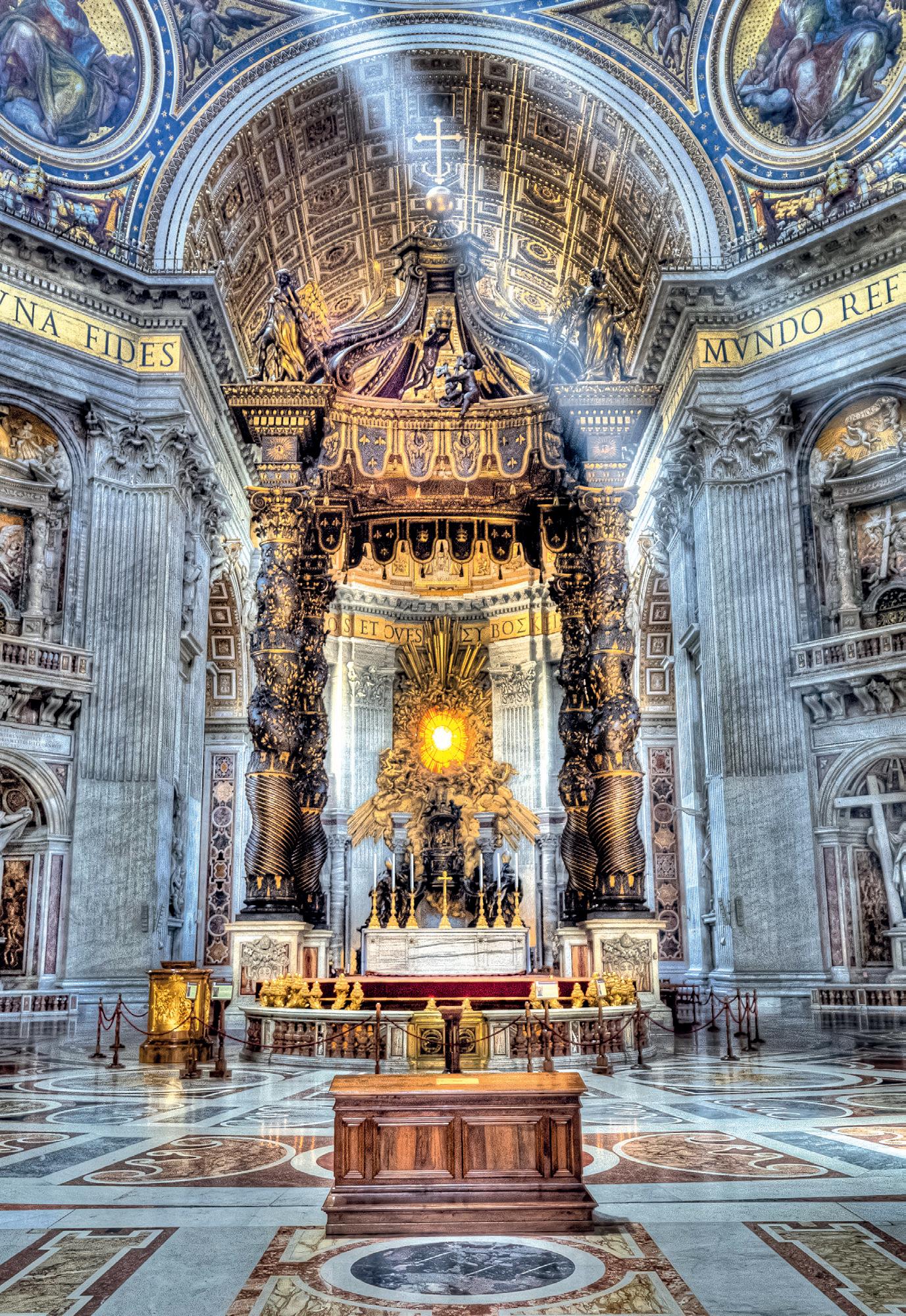
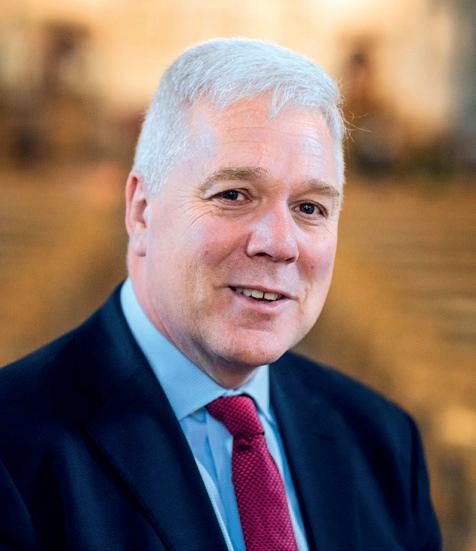

Peter Hurford, former Master of the Music at St Albans, died in March 2019 after a long period of gradual decline with Alzheimer’s disease. He was 88.
Peter was born, very fortuitously perhaps, on St Cecilia’s Day (the patron saint of music), in 1930 in Minehead, Somerset, and he never lost his characteristic Somerset accent. He had a long and distinguished career that was based around church music and the organ as a solo performer and recording artist (especially of the music of J S Bach), and as a teacher and writer. Possibly his most significant achievement was that he recorded all of Bach’s organ music, first for Decca (the CDs still
Andrew Lucasbeing available), and then again in a series of 34 commentated programmes for the BBC. His unique contribution to the world of church and organ music was recognised in many ways with honorary doctorates, fellowships and the award of an OBE.
Peter studied Music and Law at Jesus College Cambridge before becoming organist of Holy Trinity, Leamington Spa, where he stayed for only one year until his appointment at St Albans at the age of 27. The cathedral and wider community in St Albans owe a huge amount to him. He held the position for 20 years until 1978, but his creative input far outstripped the
expectations of the job, and indeed his influence continues to pervade the life of the cathedral in many beneficial ways.
When Peter and his wife Pat came to St Albans it was a relatively unknown place compared to other cathedral cities. An unremarkable, average market town just north of London, it was the sort of town to drive through in a hurry on the way to the big city. There was no M1 then, and the Hurfords’ first house, on the corner of Sumpter Yard, was owned by the cathedral. Peter was happy to recall with great relish the day the M1 opened and lorries were no longer queuing up outside his front door. A fellow cathedral organist asked him, “Why are you going to St Albans? No one has heard of it!” – ‘They will,” was the reply, probably with a twinkle in the eye.
St Albans Cathedral was very fortunate to get him. Peter had already made his debut recital in the Royal Festival Hall in 1956 and had many links abroad that came from playing in competitions and concerts. He formed strong friendships with other international musicians who were to become the stars of the future and the mainstay of the early International Organ Festivals in the town.
In the wider world of cathedral music at that time, cathedrals without a choir school were considered second best, but Hurford set his heart on ensuring that the lack of one at St Albans was no bar to achieving the highest musical standards from the cathedral choir. At that time only two concerts took place in the Abbey each year, and the cathedral organ was a very poorly designed instrument and literally falling apart. Peter had the energy and vision to see that there was great potential in St Albans and he set about shaking things up, taking everyone along with him. He raised the standard of music in worship extraordinarily quickly, putting it on a par with the best and longest-established choirs in the land.
Soon after arriving in St Albans Peter set about designing a new instrument that redefined what a cathedral organ could be. That process took four years, and led to the founding of the International Organ Festival (IOF) with, at its heart, an organ competition for young players which started the following year (1963). His approach reflected his attitude to music, another enduring element of his legacy: he set up the IOF in the belief that a music competition shouldn’t be something rarefied and isolated, but celebrated within a wider context: music and life encountering each other in varied (and unexpected) ways. He took a similar approach with the choir too, believing that being a chorister is not just about learning music, but about experiencing music at the heart of a broader and life-affirming educational journey. So along with all the demands of daily rehearsals and services came the choir’s social events: the parties, the matches and the famous ‘choir camp’, which was based in Luccombe near his home town in Somerset.
The list of his achievements goes on: he composed music for the organ, for his choir at St Albans, and for the new liturgies of the Church of England when the orders of service were revised. The cathedral choir gave their first broadcast of Choral Evensong on the radio in his early years at St Albans, and they also made their first commercial recordings. He encouraged up-and-coming young musicians to be his assistants, and appointed young singers at the start of their
careers to sing as lay clerks in the choir. And of course he brought to the cathedral and the city international status through the IOF.
In 1978 he left St Albans and his career took a different path for the next 20 years – he became a concert organist, recording artist and teacher. He was already a world-renowned performer of the music of J S Bach, but it wasn’t until he’d left the cathedral that he made the recordings of Bach’s complete organ works that became benchmark performances and still sound fresh today. He won many awards for this achievement. It was particularly touching to see that one of his recordings was used for the sound track of the film The Favourite that was released at the beginning of this year.
Many institutions will praise his work in other spheres, but at St Albans he is remembered as Master of the Music, where he turned the music of the cathedral into something really special. Generations of choristers, musicians and members of the congregation in his time there owe an immeasurable debt to the man who made music really come alive in St Albans in a unique way.
Andrew Lucas has been Master of the Music at St Albans since 1998. Before this he was Assistant Director of Music at St Paul’s and made over 25 CDs with the choir there. He is music director of the St Albans Bach Choir, and for ten years until 2009 was the artistic director of St Albans International Organ Festival.
26 July – 3 August • 01452 768 928 • 3choirs.org
Programme to include:
Macmillan Seven Last Words from the Cross
Berlioz The Damnation of Faust
Elgar Cello Concerto
Handel Israel in Egypt
Stravinsky Firebird Suite
Vaughan Williams Sea Symphony
Beethoven Symphony No 9
Rachmaninov Vespers
Verdi Requiem
Featuring:
⋅ Philharmonia Orchestra
⋅ Nova Music Opera
⋅ Sarah Connolly
⋅ Edward Gardner
⋅ Rodolfus Choir
⋅ Natalie Clein
⋅ BBC National Orchestra of Wales
⋅ James Gilchrist
⋅ Carducci Quartet
⋅ Roderick Williams
⋅ St Cecilia Singers
@3choirs 3ChoirsFestival 3choirsfestival
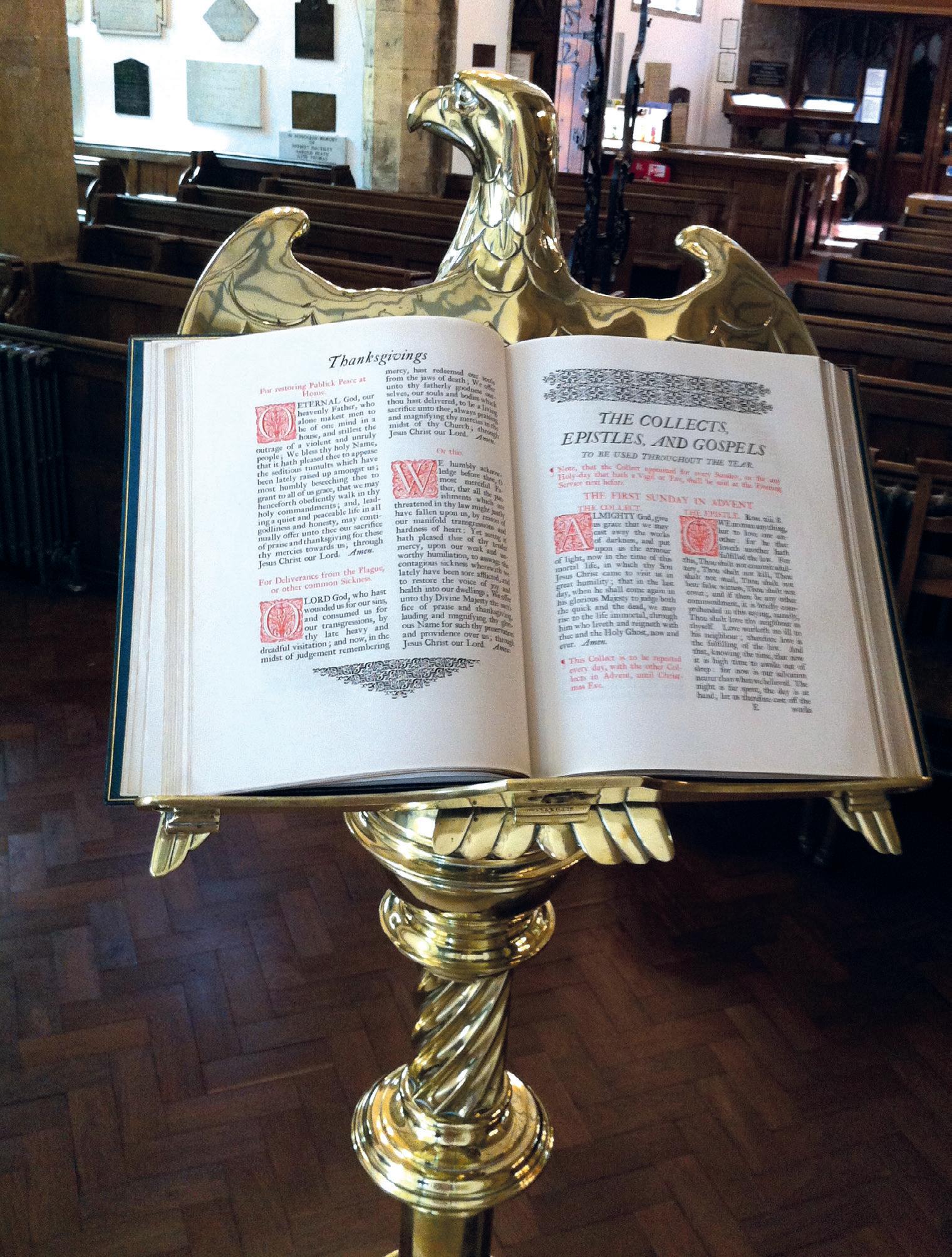
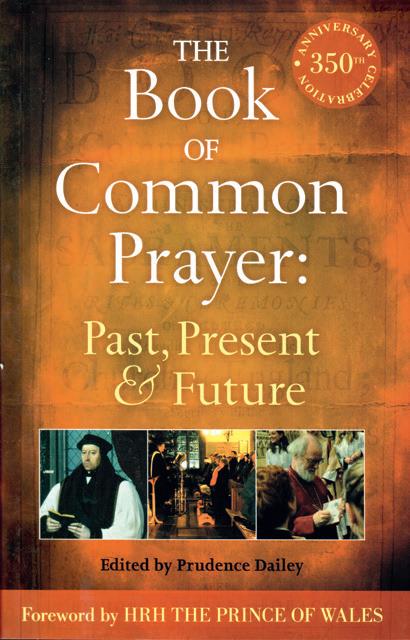
The Prayer Book Society exists to promote the worship and doctrine enshrined in the Book of Common Prayer (BCP) of 1662, and to encourage its use not just for services, but for teaching and training throughout the Church of England and other churches in the Anglican tradition. The background of the Society’s members – both clergy and laity – spans a great breadth of tradition and churchmanship, but members are united by a desire to see the Book of Common Prayer at the spiritual and worshipping heart of church life. The Society believes that the Prayer Book should not be the preserve only of those who grew up with it decades ago, but that it should also be made available, alongside contemporary forms of worship, to younger people and newcomers.
The Society was founded in 1972 in the heyday of liturgical reform, when it appeared that the Book of Common Prayer was in danger of being abolished altogether and replaced by a modern service book. A group of mostly lay members of the Church of England from around the country united to defend it. Happily, the threat of abolishment was averted, and the Prayer Book has survived for some services in many parish churches and most cathedrals. Cathedral Evensong, as one of the fastest-growing aspects of the Church of England, is also one of the greatest bastions of the Book of Common Prayer.
It remains the case, however, that most churches nowadays rarely – if ever – hold Prayer Book services, frequently because their clergy are unfamiliar with the Prayer Book and how to use it. While the early decades of the Prayer Book Society’s existence were often marked by conflict with the Church hierarchy and local clergy (who were frequently perceived as hostile to the Prayer Book and keen to sweep it away in favour of contemporary alternatives), today the Society’s work is much more focused on collaboration and education, especially in providing help and resources for ordinands and new clergy.
The Society supplies a copy of the Book of Common Prayer, plus supporting resources, to every Church of England ordinand entering training; many local branches also give presentation copies at the time of ordination. Instructional
videos, with guidance on conducting BCP services, are available on the Society’s website. The Society also works with theological colleges and courses, and with Diocesan Continuing Ministerial Education, to encourage the teaching and use of the BCP. In addition, it has compiled a short glossary to help both clergy and congregations to understand some of the potentially confusing words from regularly-used services in the Book of Common Prayer (e.g. froward, propitiate, oblation): this can be downloaded from the website, and is also available free of charge in the form of cards (individually or in packs).
As well as working to ensure that all ordinands and clergy have some familiarity with the Book of Common Prayer, the Society seeks to identify and keep in touch with those who have a particular affinity for it, providing opportunities for them to meet and support one another at its events, and to share their faith in a context shaped by the Book of Common Prayer. Encouragingly, an increasing number of young ordinands and clergy are showing real enthusiasm for the Prayer Book, often having recently discovered Cranmer’s masterpiece for the first time. The Society also helps clergy and parishes sympathetic to the Book of Common Prayer to find one another, and maintains a confidential list of clergy who are regularly kept informed of vacancies in parishes where the Prayer Book is used.
The Prayer Book Society’s other activities include the Cranmer Awards, a prestigious annual competition which requires young people aged 11–18 to recite passages from the Book of Common Prayer. The Awards have just celebrated their 30th anniversary in the presence of HRH The Prince of Wales, who is Patron of the PBS. In addition, the Society provides information and support to clergy and laity wishing to use the Prayer Book for baptisms, weddings and funerals, as well as in regular worship, and spreads knowledge and understanding of the Book of Common Prayer through articles and publications, both online and in print. The Society also has a corporate membership scheme through which it maintains links with a number of sympathetic parish churches and other organisations.
The Society’s over 3,000 members receive copies of its regular magazines, The Prayer Book Today (a glossy colour magazine) and the twice-yearly Faith & Worship (with longer and more scholarly articles). These are available for download from the Prayer Book Society’s website; for sample printed copies, please contact the Society’s office (see details below). The Society also runs a trading operation, through which other publications are available, including discounted Prayer Books and Bibles, all of which can be ordered via its online shop.

Many of the Prayer Book Society’s local branches, which are based around dioceses of the Church of England, organise occasional events and services and provide opportunities for members to participate in dignified Prayer Book worship and listen to stimulating talks while making contact with likeminded people. In addition, the Society holds a residential national conference in August or September each year.
The Prayer Book Society is funded entirely through the subscriptions, donations and legacies of its members and supporters, on whom it depends for its continued existence and work. Membership is open to all who support the Society’s aims. For further details, please visit the Prayer Book Society’s website at www.pbs.org.uk , or contact the Society at: pbs. admin@pbs.org.uk, 0118 984 2582, The Prayer Book Society, The Studio, Copyhold Farm, Lady Grove, Goring Heath, Reading RG8 7RT.
Prudence Dailey has loved the Book of Common Prayer since childhood, and has been Chairman of the Prayer Book Society since 2007. She is a member of the General Synod of the Church of England and Lay Chairman of the Oxford Deanery, and is also a churchwarden. She has previously sung in church choirs. A graduate of Merton College Oxford, her professional career has spanned NHS administration and business systems analysis; she has also been a local councillor. In 2006, to mark the 350th anniversary of 1662, she edited TheBookofCommonPrayer:Past, PresentandFuture(ISBN 1441128182), published by Continuum.

as well as including stimulating features, a wealth of educational material and reviews of organrelated music, CDs, DVDs, books and much, much more.



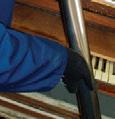

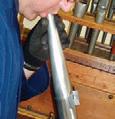

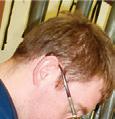










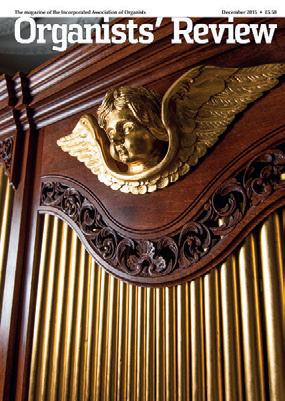

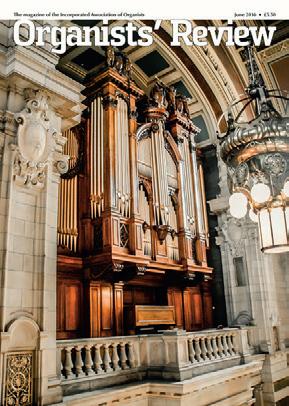

TO




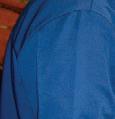
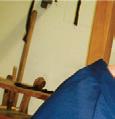












Afew weeks ago I attended Choral Evensong at my local cathedral and after the service a gentleman came up to me and said, “I enjoyed your article in Cathedral Music – it must be interesting collecting all those 78s.” I assured him that it was, but that the Archive didn’t just collect 78s but recordings right up to the present day. “Oh!” he said. “You have LPs as well? I still have some at home.”
The Archive of Recorded Church Music has recordings not just of LPs, but of tapes, cassettes and CDs as well – in fact, recordings in almost every format invented – but it was the LP which revolutionised the recording industry and brought church music recordings into a new age.
Just pause for a second and consider this: both sides together of a 12” 78rpm record had a playing time of about 7½ minutes; in stark contrast, both sides of an LP have a playing time of up to 51 minutes, which meant that the amount of church music that could be recorded onto an LP was suddenly enormously greater. Also, the range of choirs which wanted to record was extraordinary.
The Archive has almost 1700 vinyl recordings, some in 7”, and some in 10” but mostly they are in 12” LPs and from every type of choir: cathedral, church, minster, priory, abbey, royal peculiars, Oxbridge collegiate chapels, school chapels, independent choirs and RSCM courses.
About a third of the LPs in the Archive are from the major international labels such as Argo, Decca and EMI and the larger independents (Abbey, Hyperion, Priory, Herald and Guild) and as far as we know the Archive has a copy of every commercial LP to have been issued.
The remainder of the LPs, and this is where the story gets really interesting, are from smaller independent and specialist labels, private pressings, one-off pressings and LPs known as ‘transcription discs’. Many of the rarest LPs in the Archive are in this format, providing an absolute treasure house of rare recordings, sometimes of choirs which no longer exist.
So, what is a transcription disc or LP? It is a direct-cut vinyl record of a live radio broadcast which would usually be either a one-off disc or one pressed in small quantities. Numerous companies specialised in producing this type of LP, such as Sound News, Master Sound and the BBC Transcription Service. These LPs never went on public sale and thus are unknown to Archive until they turn up.
Choirs would often have transcription LPs made of their radio broadcast as a one-off archival copy in a limited pressing
for each choir member – and for doting parents! These LPs continued to be manufactured long after the advent of magnetic tape as it was cheaper to press and duplicate highquality discs than produce copies on tape. The Archive has an extensive collection of this type of LP dating from 1954 to 1982 consisting of numerous BBC Choral Evensongs and other radio broadcasts which otherwise would have been lost for ever.
In the 1950s the two types of recordings, 78s and LPs, overlapped because the recording companies were convinced that the LP would only be a nine-day-wonder. It was not until 1957 that Salisbury Cathedral choir issued the last 78rpm record of Edmund Rubbra’s Sanctus & Benedictus, pressed simultaneously onto LP. The Archive has a rare photograph of Edmund Rubbra and the Salisbury choristers standing beside the HMV Mobile Recording Van for this very recording. One of the choristers is missing because he was the one taking the photo, with a box brownie camera he’d just been given for his birthday. The photo is not of the best quality but it’s nevertheless a historical gem.
The first choir to be featured on an LP was St Paul’s Cathedral under John Dykes-Bower. In the autumn of 1953, the choir of St Paul’s, which had never before sung outside London, toured the eastern part of the United States and Canada in honour of the Memorial Chapel which was being built in St Paul’s in memory of the 28,000 Americans who were killed in the Second World War whilst stationed in Britain.
Time magazine notes: ‘St Paul’s youngsters were an unmistakable hit. They jammed Manhattan’s Cathedral of St

John the Divine to its gothic gates, then went on to fill up the concert halls and churches across the East and South. The boy sopranos and altos had tones as clean as their well-scrubbed faces. Moreover, they sang with ease and confidence, never wavering from pitch, and phrased with the subtlety of master musicians . . . a glowing repertory.’
Celebrating their tour of North America, the choir issued two gramophone records in 1954 on the EMI Angel label in the USA as a boxed set with a lavishly illustrated booklet about the choir; in the UK the LPs were issued individually. A compilation LP, The Singing Boys of St Paul’s, was also issued in the UK with a less lavish booklet! (Both these booklets may be viewed in the ‘Library’ section of the Archive website.)

Because Columbia Records invented the LP, they were keen to push out as many choir recordings as they could in those early days. One simple method was to re-master a pile of 78s and put them on a 7” vinyl record which could hold four or five sides of a 78 record. Hampstead Parish Church, St Paul’s Cathedral, Westminster Abbey, King’s College Cambridge, York Minster, Canterbury Cathedral and even St Nicolas College Chislehurst’s 1939 record – all these had 7” vinyl re-issues.
That was the first commercial release of an LP sung by one specific choir; although in 1953 HMV issued a very fine boxed set of the Coronation of Elizabeth II which of course featured the Coronation Choir of 400 boys and men from all the London choirs, together with choristers from 20 parish churches around the country.


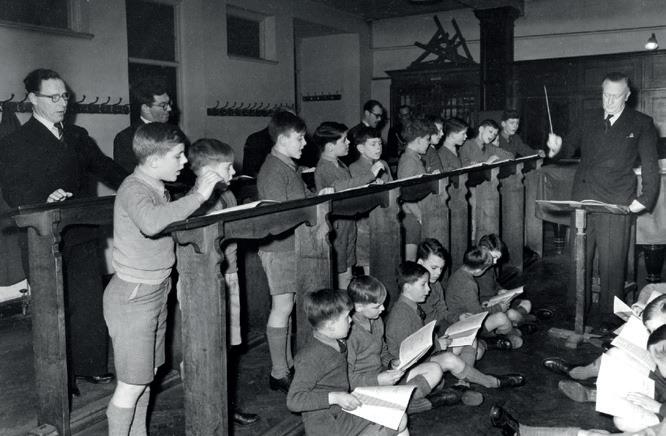
I want to explore a little further the first decade of the Archive’s LP collection (1954-1959) with its eclectic mix of choirs dipping their collective toes into the waters of this new and revolutionary technology.
Transcription LPs saved many BBC Choral Evensongs from being lost during this decade, such as Wells under Pouncey, King’s under Ord, Peterborough under Vann, Armagh under Carter, Derby under Ross, Radley College Chapel under the legendary Anthony Caesar, RSCM cathedral courses from Norwich, Lincoln, St Paul’s and Southwell, and the first ever broadcast from Magdalen College under Bernard Rose, together with the first Edington Festival broadcast.
Radio broadcasts of other services, recitals and concerts which have been saved on transcription discs are Exeter, Hampstead Parish Church, Armagh and Westminster Cathedral. Of even more importance is the earliest surviving recording of Worcester under David Willcocks, the first Worcester broadcast under Douglas Guest after he succeeded Willcocks, and the only recording of the chapel choir at the College of St Nicolas at Addington Palace (RSCM). Gems indeed!
St Edmund’s Roundhay was the first church choir to issue an LP in 1954, and the following year the Temple Church issued a 7” EP of their star soloist, Robin Fairhurst.
LP, which came from King’s College under Ord; a further four LPs were issued under Ord in the following years. The Evensong LP from 1956 has in my opinion the finest treble performance ever recorded of Stanford’s Magnificat in G. The soloist’s name was Richard White, who became headmaster of Polwhele House School, where the Truro choristers used to be educated, and who was also Chairman of the Choir Schools’ Association from 1999-2002.
From 1957 the Archive has two rare private pressings, one of Ian Harwood, the head chorister of Hereford Cathedral, singing solos, and the other the first LP from Magdalen College Oxford which is also the only recording of the choir under Philip Taylor. The following year a private LP was issued, the first recording of the choir under Bernard Rose.
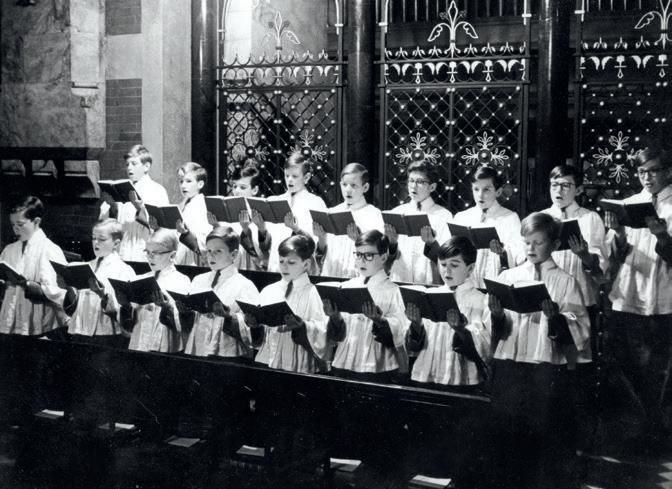
Argo LPs are legendary in the world of church music. In 1959 they issued four: St John’s under Guest, King’s under Willcocks, Canterbury under Campbell and Ely under Howard. It is really amazing that in the space of five years so many LPs, whether transcription, private or commercial releases, were pressed. However, the floodgates opened from the 1960s as the public demand for church music recordings became insatiable and choirs large and small all wanted to issue an LP.
The 1960s saw the birth of the specialist label devoted to church music, such as Cathedral Recording, Guild, John Hassell, MJB and the most famous of all, Abbey Records, founded by Harry Mudd. EMI went on a veritable recording spree and issued 60 church music recordings from various choirs in the 1960s.

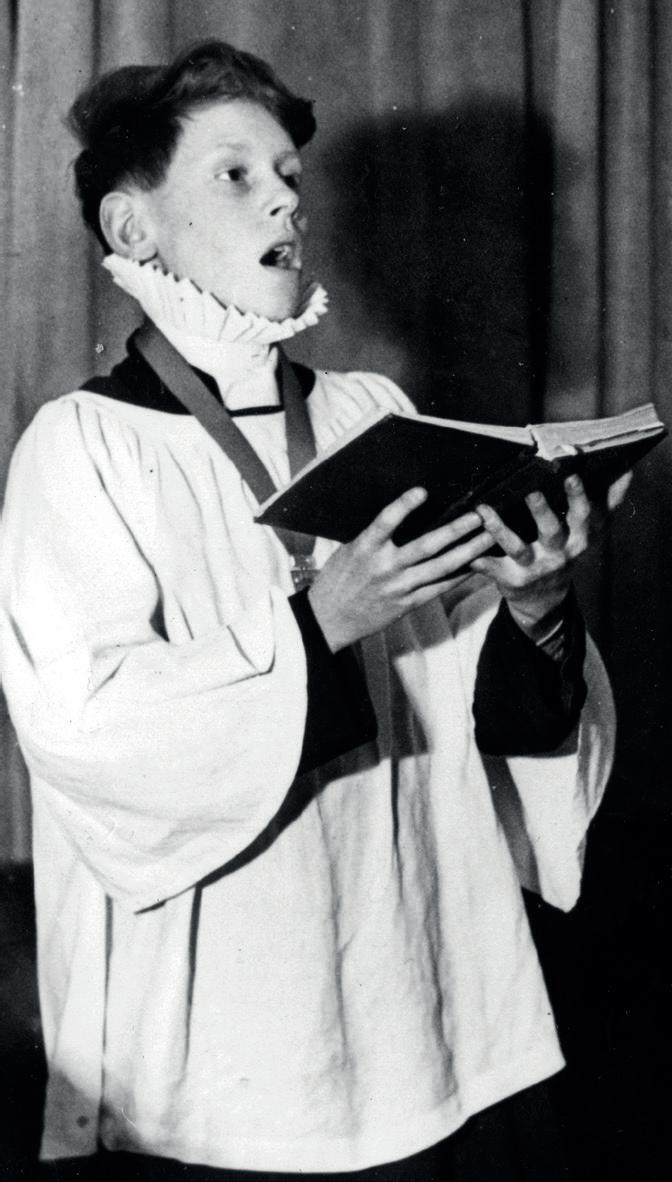
The first privately pressed LP from 1955 in the Archive is of Sebastian Forbes, chorister at Hampstead Parish Church and later of composer fame, singing a selection of solos. In the same year the legendary Argo label issued their first ever
Transcription discs continue to yield treasures. During the ’60s, over 30 BBC Choral Evensongs were recorded and saved, together with numerous other radio broadcasts. One of the highlights was the High Mass for All Saints’ Day from All Saints Margaret Street in 1960.
The 1960s also saw the proliferation of companies who pressed one-off or small quantities of LPs from a reel-to-reel tape supplied by the choir. Sound News was probably the largest of these pressing companies and, whilst they didn’t specialise in church music, we owe them a great debt of gratitude. Between 1960 and 1984 they pressed almost 100 choir LPs from churches, cathedrals and school chapels. One of the first LPs from St Michael’s Tenbury came from Sound News.
The 1970s was the golden age of church music recording on LP. Argo and EMI continued to issue some of the greatest recordings of all time, whilst Abbey Records visited a host of cathedrals, churches and collegiate choirs. Decca issued a series of legendary recordings from Christ Church under Simon Preston and more new labels sprung up dedicated to church music recordings, such as ATR, Exon, Strobe, Wealden, Vista, Meridian, CDR and York. More recordings were issued on LP during this decade than any other, and the diversity of labels – large and small – together with private pressings, is quite staggering. What is equally remarkable is the number of choirs that made recordings, in particular parish church choirs; without these privately pressed LPs a great swathe of choral history would have disappeared.
Recordings from small labels and private pressings, whether they be 78s, LPs or CDs from whatever decade, are the most difficult to find as they don’t appear in record catalogues since they were made either exclusively for the choir as a souvenir or for sale in the local area. The historical importance of these recordings to the Archive cannot be overemphasised and no other establishment holds so many of these relatively obscure and unknown LPs. One of the great joys of collecting is the discovery of an unknown LP, and this thankfully happens on a regular basis. Just the other week a privately pressed LP of the 1967 Carol Service from Winchester Cathedral under Alwyn Surplice was acquired by the Archive and a few weeks prior to that two private LPs of St George’s RC Cathedral in Southwark from 1963 turned up.
By 1989 the reign of the LP had come to an end. Only two choir LPs were issued in that year, St John’s College Cambridge and Leeds Parish Church (as it then was). Yet over 400 choir LPs were issued in the 1980s, together with the formation of nine record labels whose names were to become synonymous with church music recordings: Cantoris, Foxglove, Herald, Hyperion, Lammas and Priory, (also Griffin, Proudsound and Regent, who only issued CDs.)
Over the years, the record companies have regularly reissued choir LPs onto CD, and last year Decca did the world of church music an enormous service with the CD reissue of the complete Argo LPs of St John’s Cambridge under Guest. All 42 of them! Then, if this wasn’t enough, they gave us the complete 29 Argo LPs of King’s under Willcocks.
But nothing can beat the magic of removing an LP from its picture sleeve, carefully wiping it before placing it on the turntable, watching the stylus float down until contact is made and then listening to the glorious analogue sound pouring forth from the speakers... is it obvious that I’m an LP buff?!
Should you wish to discover the full extent of the LPs in the Archive then visit our website, www.recordedchurchmusic.org All LPs have a V letter prefix. We also regularly upload LPs from the Archive onto our YouTube Channel and you will find a link to this, together with our Twitter and Facebook page, on the website.
For singers with a passion for travelling, or travellers with a passion for singing!







Fine singing, fine wining and fine dining along with cultural visits in most ports of call and an award-winning cruising experience combine per fectly with choral workshops ever y day.

Visiting Normandy, the Loire, Bordeaux, Galicia, Oporto and Lisbon.
FIRST STEP
Register your interest by email to Bob Porter on bob@brandenburg org uk
Tell us you saw us in CM Magazine for a pair of free tickets to one of our London concerts.



David Lepine is perhaps best remembered as an outstanding organist and choirmaster of the newly rebuilt Coventry Cathedral, where he resided for 11 years before his untimely death at the age of 43. Before then, David had been the organist and choirmaster of Dean Close School, Cheltenham.
Of the four contributors to this memoir I am the least qualified in terms of musical expertise. I cannot read music or play an instrument. However, in my last year at Dean Close I was invited by David along with six other pupils to join him in his study on Sunday evenings for an introduction to classical music. I was, perhaps, an unlikely prospect for Lepine’s instruction.
I was the secretary of the Jazz Appreciation Society, which met once a week to listen to scratched 78s and early LPs of Jelly Roll Morton, Mugsy Spannier, Louis Armstrong and his Hot Five, and Duke Ellington recordings of the ’40s and ’50s. David admired Ellington’s compositions for the way in which he forged the orchestra as his principal instrument.
I accepted the invitation from David with alacrity. Being a young man, David cut quite a dash in contrast to the rather scruffy appearance of most of his teaching colleagues. He looked like a younger version of Dennis Price, who played the hero or villain in many black-and-white Ealing films of the ’50s and early ’60s. He wore fashionable brown slip-on shoes, grey flannels immaculately pressed, and tailored woollen jackets
which often showed a silk handkerchief protruding from a top pocket. His academic gown hung over his arms rather than flowing down his back.
We had nine Sunday evening sessions in his study commencing in January 1958. I can only recall the names of two other people in the group, one being Tim Bliss, who became an eminent neuroscientist who won the Brain Prize (one of the world’s most coveted science prizes) in 2016. He remembers asking David what he thought of Ron Goodwin’s film score for the film The Dambusters. Unabashed, David replied, “There’s a fine symphonic theme somewhere there, Tim.”
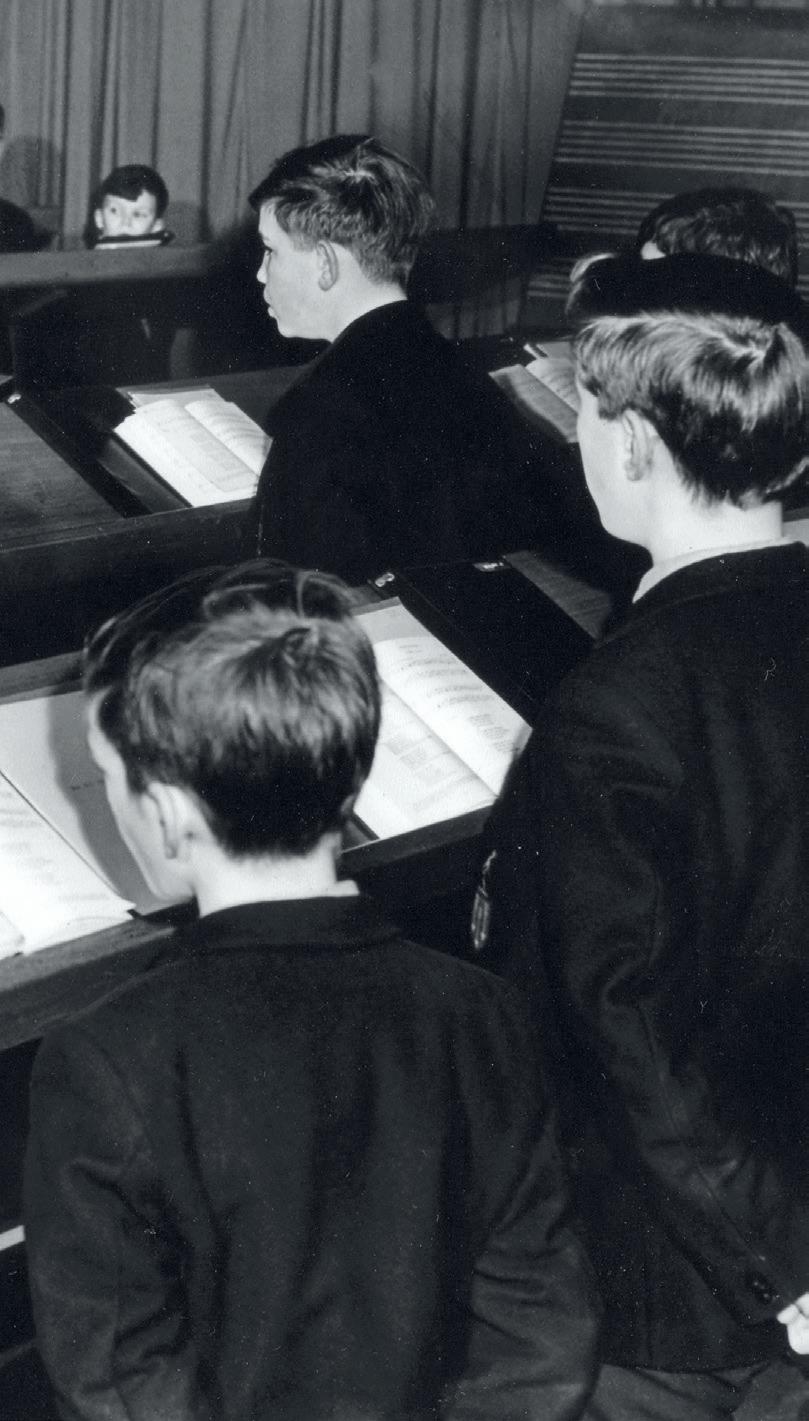
It is relatively easy to remember the first and last pieces David selected for our group to hear. We began with Palestrina’s Missa Papae Marcelli, the ‘Kyrie’, followed by the Missa Brevis. For the uninitiated it was spellbinding and rapturous. David explained to us the meaning of polyphony and said that Palestrina was probably the greatest composer of sacred music. Throughout the sessions he let the music do the talking, but after each piece he stopped, explained the musical essence of the composition, and invited observations rather than questions. How did we feel about what we had heard? Palestrina was followed by Monteverdi’s Vespers, a joyous blend of the secular and sacred with voices and instruments. Purcell next, passages from Dido and Aeneas, followed by Bach, Beethoven and Brahms. The selective memory is poor at this point until the last two sessions, when David went on to challenge us with English music: first, the Introduction and Allegro for Strings by Elgar, followed by innovative works by Constant Lambert and William Walton.
David greatly admired the prodigious talents of Lambert, who composed The Rio Grande at the age of 22. He explained that Lambert had drawn from a number of sources for The Rio Grande, which could be described as a rhapsody in jazz style. Part of the composer’s inspiration, he said, was hearing a group of black singers and instrumentalists, in particular the Will Vodey Plantation Orchestra, which came to London in 1923. For us, the gloriously descriptive verse of Sacheverell Sitwell, the unaccompanied choir and the brilliance of the piano writing had so many dissonant elements – sparkling, hard, then soft and bluesy in passages. We were transfixed by this ground-breaking work.
Walton’s Façade was new to us. David gave us a vivid account of the original performance when the quirkily eccentric poet, Edith Sitwell, declaimed her poems to Walton’s highly original music through a megaphone. Whilst admiring the sheer versatility of Walton’s score for Façade, David left us in no doubt about Walton’s masterpiece and, for him, the best choral music written over the previous 50 years, Belshazzar’s Feast
All of us were stunned by the thrilling majesty of Belshazzar’s Feast, with its extraordinary choral contrast of the yearning lines ‘By the waters of Babylon’ to the hymn to the pagan deities and, finally, the glorious peal of ‘Alleluias’ that lifted the spirit like nothing else. David looked bemused at the end of the work and said to his captive audience, smilingly, “Would you like to hear that again?”
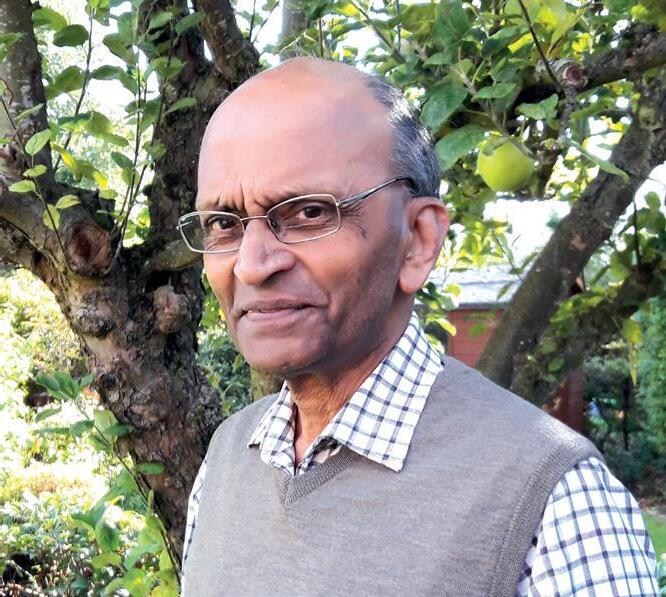
Some people remember names, faces, facts. Others carry in their memory not the specifics of place but rather the atmosphere. I have that kind of memory, so although after 60 years I don’t recall details of David Lepine’s teaching, I have a very strong sense of his presence. He was there when my housemaster told me that my mother had died, and it was he who took me home early that afternoon. I remember the brown leather seats in his rather old Rover car on that day.
One particular quality of his teaching which I do remember had great significance for me. Not too long after I transferred to the senior school, I started piano lessons. I wasn’t very advanced, perhaps Grade III level, with an expectation that I would be doing more of the same – beginners’ simplified stuff. But David Lepine gave me a ‘proper’ piece to attempt. It was one of the simpler Songs without Words by Mendelssohn, which he played to me. Although it sounded great and had splendid fat chords, it seemed to me to be way beyond my level. But being encouraged to learn that piece was transforming for me. It wasn’t until many years later that I learned about the Russian psychologist Lev Vygotsky’s ‘Zone of proximal development’ (or ZPD). This was the term he used for the educator to ‘place’ the student’s new learning – just beyond his or her current level. So I realised that David Lepine was applying that same idea and by doing so he led me beyond what I thought I could do. In a similar way he put me in for S Level Music when I might just have done the A Level.
The school boasted a recently built small single-storey music block which was on one side of the quad. My memory tells me that on either side of a narrow central corridor there were two small rooms for listening to gramophone records, two practice rooms with upright pianos and, through the door at the end of the corridor, David Lepine’s teaching room. Towards the far right corner was his baby grand piano and inside the door to the left was a spinet. This was the room in which I had my piano and O-Level Music lessons. I enjoyed it all because David was clear and precise whether he was teaching harmony or symphonic structure; and because you understood, you made progress.
Although David Lepine was kind and able to draw out selfbelief (he was exceptional in this), he could be demanding. But he was an outstanding choirmaster and set very high

standards musically. He achieved these partly through his own musicianship and drive, and partly through an ability to relate to the individuals (pupils, teacher colleagues or, on occasion for major choral works, members of the Cheltenham Ladies College) who made up the choir. It was a privilege to be in his choir because you knew you were part of something with real quality. An additional memory is of the music he played (an organ work or something improvised) at the end of every morning service in the chapel as we all filed out.
Personally, I now know how much I owe to David. It was not just that he greatly developed my interest in music, it was that he provided a small setting of normality in which you were treated with respect, as an individual and as a serious person. He was someone you could trust. Aside from the aunt I lived with in my holidays, David Lepine was the most influential adult figure during my teenage years.
David was a fine musician who was highly regarded in the musical world and he was a lovely person to have around. When Jane and I lived in Tenbury, he would often drop by on his days off (always unannounced!) with his assistant, Robert Weddle. I remember he had a Triumph sports car and he loved driving with the hood down. He and Robert often visited churches in that area and beyond.
I also remember going with Jane to Coventry Cathedral at David’s invitation. He kindly showed us round everything that happened behind the scenes. The choir vestries were very spacious, with long fitted-out cupboards, and David was especially pleased with the distinctive colour of the cassocks which he had helped to choose.
On another occasion I was helping on an RSCM summer course which David was directing at Addington Palace. I never failed to be inspired by his rare ability to get the best out of people in any situation. He certainly set himself high standards and achieved them. The visual appearance of a choir was always important to him too. On that same RSCM course, when we were lining up ready to go to Evensong, he
went down the lines with a hairbrush saying to the boys, “You can’t sing properly unless you have your hair tidy!”
Robert Weddle. They had sat quietly in a country church and he had simply passed away. I sang at his funeral in 1972 – a huge occasion.
David Lepine may have died very young and in the most unexpected of circumstances but his legacy lives on in those whom he inspired. He was a man of many parts: the first choirmaster of a new cathedral; a commissioner of new works, by the best of composers, including Walton’s Missa Brevis (1966), Herbert Howells’s Coventry Antiphon (1962) and Coventry Mass (1968), Bliss’s Beatitudes (1963) and the Mass of the Reconciliation by Tony Hewitt-Jones (1968). HewittJones had taught music at Dean Close Junior School to both Hugh South and me, and he was a good friend of David’s. His grandson, Thomas Hewitt-Jones, is a celebrated choral composer following the family tradition.

I had the great good fortune to have been a chorister at Coventry Cathedral under David’s direction and there is no doubt that the experience was a huge influence on my career. For nearly 30 years I was Director of Music at Exeter Cathedral School and I also worked in the cathedral music department for much of that time as Assistant Organist. In 1994 I founded the girl choristers’ section of the cathedral choir and directed it for 22 years. Some other choristers in the years above me in the choir at Coventry who went on to have significant musical careers were the conductor Paul Daniel and the composer/ arranger Jonathan Rathbone, who directed the Swingle Singers for some years.
Being a chorister at Coventry did not follow the sort of pattern you find in the old foundation cathedrals which still sing a choral service between six and eight times a week. At Coventry, we all went to the same school in those days, King Henry VIII – then a grammar school – practising each morning before being bussed up to the school. We only sang services at weekends so there was plenty of time during the week for intense musical training from both David and his great friend and assistant Robert Weddle. We learnt everything by singing it to sol-fa first, and I had passed my Grade V theory by the age of 11. Thus we built up excellent general musicianship and sight-singing skills. I particularly remember the power of singing major works such as Bach’s St Matthew Passion and Fauré’s Requiem each year.

David was a disciplinarian. His modus operandi and others of his generation would not be seen in today’s politically and socially correct world, but his insistence on the highest of standards rubbed off on us all. Processing, for example, would be practised with great precision, and if something went wrong in a service we would be left in no doubt as to what he thought and would be taken back to the song school to practise the offending section again.
I vividly remember my father coming up to my room to tell me of David’s death. No one had any inkling that he might have been in any way ill. He had been out for a drive with
But it is praise of David from a different source with which I will end. Reading a copy of the Guardian in January 2011, I came across an interview by Robert McCrum with the novelist Susan Hill. She recalled the year 1972 when she was young, successful and very much in love. Her fiancé was David Lepine, who she described as a ‘genius’, and was devastated when he died quite suddenly of a coronary attack. Her lingering grief for him was eventually put into her novel In the Springtime of the Year.
Except possibly for the years 1939-1945, cathedral organists have continued to meet twice a year, with many changes taking place over time. Would Nicholson recognise the vigorous, sprawling and assertive organisation to which his initiative led? He described that first meeting, which was attended by 29 organists, as ‘most representative’. Indeed, organists from English cathedrals from Chichester to Durham were present, plus one from a Welsh cathedral, St Asaph; also there were the organists of St John’s and Trinity Colleges in Cambridge, the Chapel Royal, and Eton College. Nicholson’s account of this inaugural occasion is accompanied by a photograph of the very formally dressed company, a picture that might easily have been that of the board of directors of a provincial building society if it were not for the setting in the Abbey cloisters.

Today, the Cathedral Organists’ Association, as it has become, has over 100 members, including organists who serve Scottish, Irish and Roman Catholic cathedrals, some major parish churches and various university colleges. Many of these direct girls’ choirs in addition to boys’ choirs, and there are two or three female organists among the current membership (well, it’s a start). Any photo of a recent meeting would show a much wider age range and a greater variety of dress.
‘Soon after I came to London’, wrote Sir Sydney Nicholson in his unpublished autobiography*, ‘my old friend Charles Macpherson, the Organist of St Paul’s, and I decided to call a Conference of Cathedral organists ... The first of these Conferences was held at the Abbey on 24th April 1919 and they have continued annually (and later biennially**) ever since.’
Our predecessors at that first meeting were naturally concerned that among the many changes taking place in this country at that time were a few that appeared harmful to the future of cathedral music. Bairstow expressed some of these concerns in a letter to Nicholson: primarily finance, the use of ‘popular hymns’, and educational changes that might affect the recruitment of boys. No doubt the difficulty of recruiting lay clerks was also discussed. These matters recur many times in the minutes of later meetings.
They were certainly among the subjects discussed at the first meeting after the Second World War, a meeting that took
place at King’s College Cambridge under the chairmanship of Boris Ord. Of the 28 organists who attended, two had been present at the 1919 meeting. Besides the possibly adverse effects of a new Education Act, signs that daily sung Matins was being discontinued in some cathedrals and the inadequate salaries of organists and lay clerks, the meeting expressed the view that a new Archbishops’ Commission on Church Music was needed, following the one that had reported in 1928. It was also agreed that a new committee to meet a committee of deans should be set up to discuss some of these issues.
though the spring meetings are now usually for two or three days. Attendances varied quite widely from around a dozen to over 30. Unsurprisingly, meetings in or near London attracted the larger numbers, with much lower figures for the more farflung cathedrals.
The York conference of March 1951 was chaired by Dr Francis Jackson, happily still among us today, the only present member to have been born before the first Conference in 1919. It seems to have been at this meeting that it was first suggested that experts in various subjects related to the work of a cathedral organist might be invited to address the members. So at Eton, in November that year, Dr Harris read a paper on ‘Speech-rhythm’ and a Mr Lambart gave a talk on ‘Choral Latin’, essentially about pronunciation. At later meetings many different topics were covered; for example, at Worcester in 1953 H Watkins Shaw spoke on ‘Text or Ornament in the Music of the Restoration Period’.
Readers of this article will be interested to learn that at Exeter, in April 1956, after a talk by the Reverend Cyril Dams, Precentor of Westminster Abbey, ‘some reference was made to the proposed “Friends of Cathedral Music”’.
In November 1958, at a meeting at Southwark Cathedral, a committee was appointed to draw up a constitution for the Conference. An important element of any new constitution was likely to be the need for a longer-serving chairman or president. In the event, a decision was anticipated on this matter and Dr William McKie was elected the first president of the Conference, serving until his resignation in 1961. The proposed new constitution was discussed at the meeting at the Temple Church in November 1959 and, with one or two amendments, approved. It is not clear when the name of the gathering became the ‘Cathedral Organists’ Association’, though it might have been at this point.

A year later, meeting at St Paul’s Cathedral under the chairmanship of Dr Dykes Bower, the Conference heard a report from the committee that had met the deans. It had been agreed that choirboys should remain in their choirs until at least the age of 14, preferably 14½, and that prewar salaries of lay clerks should be reconsidered, with a 30 percent increase being recommended in many cases. The same would hold good for organists, whose stipends might be increased by the provision of a house rent-free. Of course, these were recommendations only and there is no evidence as to how many cathedral chapters rushed to put them into effect. Another subject, raised by Gerald Knight, was out-ofprint music; this was to become a regular item at post-war Conferences.
At this time, a meeting was known as ‘a Conference of Cathedral Organists’. There seemed to be no constitution and no regular officers apart from the secretary and treasurer, both offices combined in the person of Dr Stocks. The meetings were chaired by the organist of the host choral foundation. The Conference met for a day twice yearly –in the spring and in the autumn, the current pattern still,
During the 1960s, venues included the RCO, then in its imposing town-house in Kensington Gore, and Addington Palace, the home of the RSCM. Dr Herbert Sumsion became president, and late in that decade Gerald Knight became secretary and treasurer, establishing a link with the RSCM which was to continue with his two immediate successors as director. Attendances were often quite low, more so in the early 1970s, when a meeting arranged for Durham had to be cancelled at the last minute because so few had indicated their intention to be there.
However, the affairs of the Association became dramatically more vital in the middle of this decade when the future of choir schools in general seemed to be imperilled by the educational plans of the Labour Party, then in Opposition, to withdraw the direct grant, which meant that schools funded in this way would have to either go independent or become comprehensive schools. The possible impact of this on choir schools was likely to be unfavourable. Norwich Cathedral, for example, at the time benefited greatly from its cooperation with Norwich School, then a direct-grant school in the cathedral close. There was also a lower school which took boys from the age of eight. Choristers had been educated at Norwich School since 1951 when the cathedral’s own school, housed in the cloisters, had been closed down. The abolition of the direct grant would mean that money to educate the choristers would need to be found from other sources.
The matter acquired much greater urgency the following year, when the Labour Party was returned to power, first as a minority government and later with a slender majority. The COA by that time had already begun occasionally to meet jointly with the Precentors’ Conference – at Jesus College Cambridge in June 1973 and 1975. Other bodies, too, were alive to the possible consequences for cathedral music of the political changes which were about to occur. A joint committee, chaired by the Dean of Worcester, Eric Kemp, with members from the Deans’ and the Precentors’ Conferences, the Choir Schools’ Association and the COA, met several times. Its work culminated in a meeting at the National Liberal Club to which all members of the participating groups were invited. Representations made there, expressing the concerns of the participants, were then carried forward to the new government.

The work was not wholly in vain – the Education Act that followed allowed local authorities, at their discretion, to help with the private school fees of promising young dancers and musicians. Even then, however, local authorities were not the most ready sources of financial support for what might have seemed to many somewhat tangential activities. The direct grant was indeed withdrawn. One or two of the choir schools which had been under that arrangement entered the state sector. Others, like Norwich, chose to remain private and were to be the beneficiaries of social changes which placed them among the most sought-after schools in the country, with outstanding academic reputations. But for the cathedrals the price of setting up adequate bursaries was a heavy one.
A conference at St Mary’s Cathedral, Edinburgh, in May 1991 produced one of the most startling sessions of any meeting that I can remember. Dr Dennis Townhill had decided to accept an offer from the local authority there to help with the finance of the choir school, provided it was open to girls as well as boys. He had therefore brought girls into the cathedral choir, and now, with the singers placed behind a screen, he
challenged his colleagues from cathedrals across Britain to identify whether the singers were boys or girls. We heard solo voices, pairs of voices and larger groups of the same sex – and we were terrible at spotting which they were. I recall that the highest scorer in this unexpected party game was the wife of the organist of one of the Three Choirs cathedrals. Our admiration for Dennis’s training of his mixed choir, which sang so beautifully in the services that we heard during our visit, was much increased.
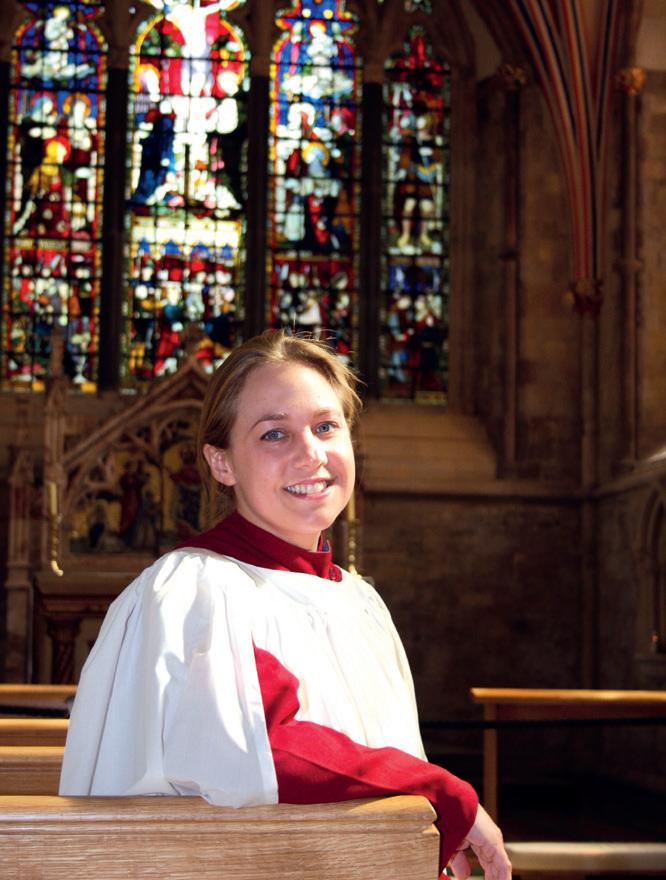
By now, the membership had become much wider. The organist of the RC cathedral at Arundel, Elizabeth Stratford, became a member. Sarah Baldock, of Chichester, had become the first female to join us, though she was to leave the cathedral world for academe a few years after. By then, Katherine Dienes-Williams, subsequently an enthusiastic participant in our programmes, was in post at Guildford.
The wider and larger membership brought new possibilities and stretched horizons. The spring meeting of 2006 took place in Dublin, where Christ Church Cathedral was the main host. In 2010, we enjoyed a visit to the famous organ lofts of Paris, where Daniel Roth, Philippe Lefebvre and others gave generously of their time to demonstrate the instruments for which so much of our repertoire was written. The COA eventually reached its Mecca with a visit to Leipzig in May 2018, where not only were the organs played and admired but very rewarding sessions took place with the Thomanerchor (the boys’ choir directed by J S Bach from 1723-50), giving greater insight into the modern handling of the great Bach legacy there.
In recent years there has also been more frequent commissioning of new music – a step on from the call for reprints of older works. The first COA commission resulted in Kenneth Leighton’s wonderful Second Service (evening canticles), in memory of Brian Runnett, who had been killed in a car crash in August 1970. The Jonathan Dove Missa Brevis was first performed at the Wells conference in 2009. There has been also an anthem from Sally Beamish, and now we
await the premiere of a new setting of the evening canticles by Sir James MacMillan at York Minster in May this year.
Despite all the changes, each meeting of the COA remains an invigorating mixture of INSET day, new ideas, delight in a beautiful Evensong heightened by the occasion – and the sharing of social intercourse among friends. For the organist of a cathedral is sometimes a slightly lonely figure in his/ her home cathedral, with plenty of colleagues but few real equals. Many times has it been said by members that the best thing they take away from the conferences are the memories of conversations, both serious and silly, with their opposite numbers, fellow professionals with similar problems. The FCM, such munificent benefactors of so many cathedral music departments, may rest assured that the greatest strength of our art lies in the integrity, enthusiasm and professionalism of the members of the COA as we reach our centenary.
* A contextually expanded version of this book is available: Henderson and Jarvis, Sir Sydney Nicholson and Musings of a Musician, RSCM, Salisbury, 2013.

** Possibly ‘biannually’ (twice a year) was intended.
Dr Michael Nicholas was Organist and Master of the Choristers at Norwich Cathedral 1971-94, Chief Executive of the RCO 1994-97 and Organist and Director of Music of the Civic Church of St Mary-le-Tower, Ipswich, 1999-2013. He was President of the COA 1975-77.

Tenebrae/Aurora Orchestra
Dir: Nigel Short
Vaughan Williams Fantasia on a Theme by Thomas Tallis; An Oxford Elegy; Valiant for Truth; Lord, thou hast been our refuge; Howells Like as the hart; Gurney Since I believe in God the Father Almighty; Gurney orch Howells By a bierside; In Flanders; Gurney orch Finzi Sleep; Bingham A walk with Ivor Gurney.
SIGNUM SIGCD 557 TT 87:23 (2CDs)
The title of this double album is slightly misleading as the CDs feature a good deal of music by composers other than Gurney. It refers to the text of an unaccompanied choral work by Judith Bingham commissioned by Tenebrae and first performed in a concert given in Gloucester Cathedral in 2013. Bingham sets selections from Gurney’s poetry and intersperses them with Latin inscriptions found on the graves of Roman soldiers discovered in Gloucestershire. The music of Vaughan Williams is well represented but most fascinating is the inclusion of orchestrations of Gurney’s music by Howells and Finzi. Vaughan Williams’ Fantasia on a theme by Thomas Tallis was first performed at the Three Choirs Festival held in Gloucester in 1910 and is an appropriate choice to begin the journey. Aurora provides most effective orchestral support throughout and comes into its own in the Oxford Elegy when joined by the full choral forces with Simon Callow as narrator. There are few recordings of this work and, with the inclusion of Valiant for Truth, the recording contributes a welcome addition for collectors of the genre. The three Gurney songs are sung with power and sensitivity by Dame Sarah Connolly, although some might feel that there is a certain lack of momentum in Tenebrae’s performance of Howells’ Like as the hart. Vaughan Williams’ highly evocative setting of psalm 90 is one of a number of recent releases of this work.
The remarkably imaginative concept of this release reveals Signum as a most innovative company. These CDs are definitely recommended for those whose enthusiasm leans towards the early 20th-century English school.
David Thorne
Mousai Singers
Dir: Daniel Cook Organ: Joseph Wicks
Mathias An admonition to rulers; Neil Cox O Maria, vernans rosa; Magnificat in g; Howells Antiphon; Rubbra That virgin’s child most meek; Leighton Awake my glory; Bax This worldes joie; Parry At the round earth’s imagined corners; Harris Strengthen ye the weak hands. MSCD001 available from Amazon TT 65:55
My goodness, how things move on! This recording dates from when Daniel Cook was at St Davids Cathedral as Director
of Music and Joseph Wicks was Organ Scholar at Hereford Cathedral. Since then, 2013, Daniel has moved through Westminster Abbey (Sub-Organist) to be DoM at Durham, and Joseph has passed through Cambridge (Organ Scholar at St John’s College), to be Assistant at Truro.
The Mousai Singers present a most attractive and imaginative programme, and execute it with distinction. They are a small group of 12 and sing very well as an ensemble, but the group also contains some accomplished solo singers. It is very good to have a recording of William Mathias’s splendid anthem An Admonition to rulers, which dates from 1969 and was a SCF commission. Some of the text is rather relevant in these ‘difficult’ times! I was pleased to meet Neil Cox’s O Maria, vernans rosa, a fine 8-part motet and his Magnificat, similarly scored. Cox has a distinctive voice that is both accessible and challenging. Two major a cappella works of an earlier generation by Bax and Parry receive excellent performances, showing off the fine tuning of this group of singers. Leighton’s Awake my glory is a bit of a performance rarity, and it is good to be reminded of his skill working on an extended canvas. The programme concludes with William Harris’s Strengthen ye the weak hands
Excellently recorded in St Davids Cathedral. I recommend this CD most warmly.
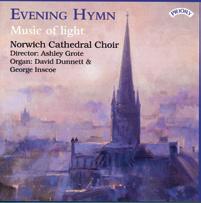 Roger Judd
Roger Judd
Norwich Cathedral Choir
Dir: Ashley Grote
Organ: David Dunnett, George Inscoe
Balfour-Gardiner Evening Hymn; Joubert
O Lorde, the maker of al thing; Tallis O nata lux; In manus tuas; Blitheman In pace; Moore O Lord, thou has searched me out; Dove Vast ocean of light; Wood Hail, gladdening light; Neil Cox Keep me as the apple of an eye; Gowers Viri Galilaei; Holst Nunc dimittis; Grote The earth is the Lord’s; Ireland Greater love; Lauridsen O nata lux; Brahms Geistliches Lied; Parry Blest Pair of Sirens.
PRIORY PRCD 1208
The final offering on this excellent disc is a stirring but also sensitive performance of Parry’s Blest pair of sirens with superb accompaniment from David Dunnett, who knows the Norwich organ so well, and, having been recorded in the centenary of the composer’s death, it makes a fitting conclusion to a wideranging programme of music from Blitheman via Wood and Brahms to Gowers and also John Joubert, whose death was announced at the start of 2019. The performances feature the lay clerks and choral scholars with the boys’ and girls’ choirs both individually and together. The combined forces produce an excellent sound with a good sense of line and dynamic contrast. This is heard from the outset in the Evening Hymn. Norwich is fortunate to have Ashley Grote at the helm and he continues the exploration of new music with the disc featuring relatively new works by Philip Moore, Jonathan Dove
and Ashley Grote himself – The earth is the Lord’s – a welcome new setting of this text sung here by the boys and men with excellent accompaniment from George Inscoe. Viri Galilaei by Patrick Gowers, accompanied by both organists, is impressive, and one of the highlights of the programme of this fine disc.
Nick KerrisonHoward Goodall
Christ Church Cathedral Choir
Dir: Stephen Darlington CORO COR16165 TT 58:02
Will Howard Goodall ever be free of our memories of his Vicar of Dibley music? He is a choral composer of much greater stature and significance than this, and the work reviewed here (his response to a commission from the USA) is both ambitious and effective. Its libretto may be rather crudely summed up as a meditation on the Passion with the Christian bits left out, though it is in fact held together by a Christian text, Salve Deus Rex Iudaeorum (Hail, O God, King of the Jews), a very fine narrative poem published in 1611 by Aemilia Lanyer née Bassano, who may possibly have been the Dark Lady of Shakespeare’s sonnets. Into this are inserted other authors including Housman, Rossetti and Yeats, who deal in their very different ways with such timeless concerns as peace, slavery and suffering in all its forms. As if to emulate Vaughan Williams in setting to music words spoken in the House of Commons, Mr Goodall throws in a sentence spoken by William Wilberforce, and we are treated also to lines from Invictus, (William Ernest Henley 1875), a poem which has bequeathed to the English language such gems as ‘My head is bloody, but unbowed’ and ‘I am the master of my fate / I am the captain of my soul’. The composer’s response to his material is colourful and inventive, though the listener’s interest will be captured mostly by the instrumental accompaniment, the choral writing offering little melodic interest. It must be stated without qualification that the performance and recording are absolutely first-rate, and I am sure that no one will mind if I single out for special mention the tenor Mark Dobell, a guest soloist from The Sixteen.
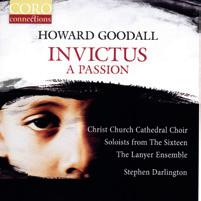 Timothy Storey
Timothy Storey
Choir of Trinity College, Cambridge
Dir: Stephen Layton
The wings of the wind; Upheld by stillness; Trinity Fauxbourdons: Magnificat & Nunc dimittis; Above the stars my saviour dwells; Phos hilaron; Ave maris stella; Judas mercator pessimus; Justorum animae; Beati quorum via; Caelos ascendit hodie; For the fallen; The Lord’s Prayer; I wonder as I wonder; The spirit breathes.
HYPERION CDA68191 TT 76:00
This release on the Hyperion label has deservedly received wide acclaim. Both The wings of the wind and Caelos ascendit are instantly appealing even to the more casual listener. Park’s style is extremely diverse and clearly influenced mainly by choral composers spanning the latter part of the 20th century. His writing reveals him as a most talented composer within the genre. This recording is much enhanced by the exceedingly well-blended and virtuosic singing of the choir of Trinity College under Stephen Layton.


The highly attractive The wings of the wind was specifically written for Trinity’s concert tour of the USA in 2015 and serves as a colourful showpiece for the choir. Conversely, the very sonorous Trinity Fauxbourdons, whilst traditional in concept, convey an atmosphere of calm heightened by an ambiguous harmonic backcloth. Whilst the choir underpins the melodic line in Above the stars my Saviour dwells, the setting of the text highlights the superb solo soprano voice of Imogen Russell. The stylistic diversity of Park’s writing is probably most prominent in the performance of a more conventionally conceived and beautiful setting of a text by John Jacob Niles, I wonder as I wander. The spirit breathes is the only accompanied anthem on the disc, where the Metzler organ, played with great virtuosity by Alexander Hamilton, reveals its vast array of tonal colours. A quite outstanding disc in all ways!
David ThorneChoir of Christ’s College, Cambridge
Dir: David Rowland
Organ: Sidharth Prabhu-Naik, Gabriel Harley
Finzi Lo, the full, final sacrifice; Leighton What love is this of thine?; Crucifixus pro nobis; Solus ad victimam; Walton Where does the uttered music go?; Set me as a seal; A Litany; Howells Even such is time; Take him, Earth, for cherishing. REGENT REGCD511 TT 71:55
Here we have several works which are very well-known within the Anglican choral repertoire by four of the most influential British mid-20th century composers, but in the middle of the programme sits Leighton’s Crucifixus pro nobis, written for David Lumsden and the choir of New College Oxford in 1961, which is far less familiar to many people. This is an ambitious choice for it makes considerable demands on the performers, not least the soloist, here the soprano Maisie Hulbert (the solo line can also be sung by a tenor). It is austere and intense music and both soloist and choir project the changing emotions well. In the opening section, for soloist and organ, the difficulties lie in the chromatic nature of the writing and the often very sparse textures but the melody is admirably sung by Miss Hulbert. As always in Leighton’s music, rhythmic drive abounds in the second section and the organist contributes superbly to the overall effect. At the start of the programme Lo, the full, final sacrifice, one of the many commissions from the Revd Walter Hussey written for St Matthew’s Church, Northampton, sets the tone for the rest of the disc. Here is admirable singing, carefully blended and with attention to details particularly in relation to dynamics, accompanied sympathetically by the organist within what seems to be a fairly dry acoustic. The three pieces which follow, by Leighton, Walton and Howells (all new to me), are challenging unaccompanied works requiring very careful intonation but the choir brings off confident performances. Following the central Crucifixus pro nobis are four pieces which have regular outings within the liturgy. For Set me as a seal one of the organists, Sidharth Prabhu-Naik, moves into the choir to sing the solo line in what is perhaps the most impressive performance on the disc. While we might be aware that these are young voices (the men lack a little depth at times) the last four pieces, the most well known in the repertoire, show the real ability of this choir in a demanding programme.
Nick Kerrison
Dir: Luis Toscano
Lamentations for Maundy Thursday; Missa pro defunctis a 4; Domine, tu mihi lavas pedes?; Magnificat secundi toni a 4; Amen dico vobis; Cum audisset Johannes; Ipse est qui post me; Omnis vallis; Quid hic statis?; Tua est potentia; Sitivit anima mea.
HYPERION CDA68252 TT 69:34
Manuel Cardoso (1566-1650) belongs to what is sometimes called the Golden Age of Iberian polyphony, and at its best his music calls to mind the great Spanish school of Tomás Luis de Victoria and his followers. Cardoso spent his whole working life in Lisbon, as Organist and Choirmaster of the Carmelite convent, and it was during this period that Portugal assumed an identity separate from Spain, the Duke of Braganza becoming King John IV of Portugal, famous as the composer of Crux fidelis (Faithful Cross), commonly sung on Good Friday. Cardoso dedicated his published works to the new king, and the compilers of this CD have chosen to end the programme with a group of motets united by a longing for the advent of the King of Kings, or perhaps the King of Portugal, and by reflections on the nature of true kingship; the listener would do well to follow the words in the liner notes but I was compelled to buy a magnifying glass, so minuscule is the typeface. Unfortunately Sitivit anima (My soul is athirst for God) makes a rather sombre finish to the proceedings, and the rather jolly Magnificat on the Second Tone would have been better placed here. In fact, the planning of the whole programme does rather smack of drinking the best wine first, for the Lamentations and the Requiem (for four voices, not the better-known six-part setting) are immensely satisfying works. I have the greatest possible praise for the performances by a vocal ensemble connected with the University of Coimbra; there is an attractive ‘continental’ edge to the sopranos’ tone, and the blend and balance of the voices are beyond reproach, even if one longed at times for a little more Iberian fire and passion. Warmly recommended to devotees of this style of music, especially those who own a magnifying glass.
Timothy StoreyThe Marian Consort
Dir: Rory McCleery
G Jackson Stabat Mater; Palestrina Super flumina Babylonis; Stabat Mater; Ave Maria; Allegri Miserere; MacMillan Miserere.
DELPHIAN DCD 34215 TT 63:19
The Marian Consort was formed by its director Rory McCleery nearly a decade ago and this is their ninth release on the Delphian label. Thematically linked to the Passiontide season, the disc displays refined singing from an extremely polished ensemble consisting of six singers. The ensemble is well captured in the recording. Allegri’s Miserere serves as the focal point, and the distant placing of the ‘second choir’ admirably captures the atmosphere in Merton College chapel. Although the disc contains much Renaissance music, the contemporary works by Gabriel Jackson and James MacMillan showcase the true versatility and musicianship of the group. Jackson’s powerful and moving setting of the Stabat Mater was specially commissioned for the recording and is uncompromising in its vivid reflection of the theme of the text. The startling and highly dissonant first chord demonstrates a keenly charged

intensity permeating an extensive work which lasts nearly 20 minutes. The very graphic word-painting features melismatic writing using portamento and ornamentation in abundance. James MacMillan’s setting of the Miserere was commissioned for the Flanders Festival in 2009 for Harry Christophers and The Sixteen and reflects the composer’s firm Catholic faith. It uses both plainchant and fauxbourdons in a contemporary style but with little indication of pastiche. MacMillan’s highly individualistic writing using the common Scotch-snap rhythms and the occasional drone colours the pleading theme of the psalm.
David ThorneChoir of New College, Oxford
Dir: Robert Quinney
Parry Hear my words, ye people; Six Songs of Farewell; There is an old belief (early version); Toccata and Fugue ‘The Wanderer’; Mendelssohn Sechs Sprüche. NOVUM NCR 1394 TT 78.43
With 2018 having been the centenary of Parry’s death it was inevitable that there would be a number of new recordings of his music and many will have featured, no doubt, I was glad, Blest pair of sirens, and Jerusalem, but here we have an ambitious programme which has as the main feature the Six Songs of Farewell. Robert Quinney has produced his own edition of this music (his introduction in the sleeve notes provides an insight into his considerable research) and the disc also includes an early version of There is an old belief which makes an interesting comparison with the most often heard later version. These works are not easy repertoire but the choir rises to the challenges of the lengthy phrases which need such sustained phrasing and shaping. Just occasionally I wanted the singers to ‘let go’ a little more with some of the sweeping phrases but there is much to commend in these performances. The inclusion of six brief motets by Mendelssohn might seem a rather odd decision, but it is a welcome one. Written between 1843 and 1846 for use in Berlin, they are not heard very often and deserve to be included in any choir’s repertoire. (One of them, Am Himmelfahrtstage, made its way, in a shortened 4-part choir version, to an RSCM Festival book many years ago as Above all praise and all majesty). Each is scored for 8-part choir and in this recording the choir sings with a wonderful sustained sound and is clearly at home with this neglected repertoire. All this music is framed by the two other works by Parry with the organ admirably played by Timothy Wakerell.
 Nick Kerrison
Nick Kerrison
Choral music from the Great War

Pegasus
Dir: Matthew Altham
Guest For the Fallen; Wood Expectans expectavi; Reger Nachtlied; Ravel Trois beaux oiseaux du Paradis; Walford Davies A Short Requiem; Rachmaninov Blagoslovi dushe moya gospoda; Nyne otpuschaeshi; Holst Nunc dimittis; Gurney Psalm 23; Since I believe in God the Father Almighty; Stanford For lo, I raise up; Dyson To Music; Trad arr Mack Wilberg & Nigel Short The Dying Soldier; Mahler arr Gottwald Ich bin der Welt abhanden gekommen.
SIGNUM SIGCD825 TT 67:19
There have been many recordings commemorating the Great War. The subject opens up a vast wealth of wonderful
music, and imaginative planning is everything. This recording succeeds on all levels. Pegasus is a group that up to now I hadn’t encountered. Some 26 strong, they present a nicely balanced ensemble, and tuning is excellent. They can also field some attractive solo voices from amongst their members. The mood for the programme is set at the outset by Douglas Guest’s For the Fallen, which is suitably wistful. I enjoyed
A Short Requiem by Walford Davies – he achieves maximum effect with minimal resources, and it is beautifully sung. It is fascinating to have two settings of the Nunc dimittis side by side: by Rachmaninov and Holst, both written in 1915, and both for a cappella choir. The inclusion of Ivor Gurney on this CD is especially poignant given the horrendous mental scarring he suffered as a result of his time at the front. The lovely restful chant for Psalm 23 is in marked contrast to the tortured outpourings in Since I believe in God – a really powerful utterance. Stanford’s familiar For lo! I raise up receives a suitably gutsy performance. A charming part-song by George Dyson, a haunting American song by Mack Wilberg, and a choral arrangement of one of Mahler’s Rückert Lieder (with stratospheric soprano solo) complete this fine disc.
A thought-provoking programme, really well executed, I found this CD a most rewarding listen. Recommended.
 Roger Judd
Roger Judd
Lincoln Cathedral Choir

Dir: Aric Prentice
Organ: Jeffrey Makinson
Byrd Vigilate; Trad arr Wilberg & Stevens Ding! dong! merrily on high; Mendelssohn
There shall a star from Jacob come forth; Wesley Wash me throughly; Hawes My dearest wish; Parsons Ave Maria; arr Richard Lloyd Were you there; Tallis Salvator mundi; Chilcott Thy arising; Finzi God is gone up; Bingham Corpus Christi Carol; Elgar Benedictus in F; Wood O Thou, the central orb; Blatchly For the fallen; Brahms Wie lieblich sind deine Wohnungen; Taverner Christe Jesu, pastor bone; Vaughan Williams Antiphon.
REGENT REGCD532 TT 76:12
This recording is a significant addition to Regent’s continuing commitment to choral music representing the liturgical year. Both the girls and boys of Lincoln combine to produce a highly vibrant sound in performances ranging from Mack Wilberg’s arrangement of Ding! dong! merrily on high to Wesley’s reflective Wash me throughly, the opening phrase of which is sung with confidence and sensitivity. The emotional performance of Richard Lloyd’s superb arrangement of Were you there? complements the text most effectively, and especially impressive are sections highlighting soloists or the smaller ensembles. Included are some less well-known anthems including Patrick Hawes’s attractive My dearest wish. The inclusion of Bob Chilcott’s generally subdued Thy arising serves as a welcome addition to the Easter repertoire and is sung with a thoughtful intensity. The ethereal style of Judith Bingham’s Corpus Christi Carol is well served and it is a foil to a number of the more powerful pieces on the disc. The inclusion of Mark Blatchly’s For the fallen is most welcome and the use of the military trumpet very fitting. The critical tuning on the final chord is well achieved, but on occasions the general blend is a touch disappointing and does not always enhance the poignant melodic line.
This is a most enjoyable disc much reinforced by Jeffery Makinson’s colourful and faultless accompaniments which especially spotlight the superb Father Willis organ heard
to the full in the final movement of Vaughan Williams’ Five Mystical Songs.
David ThorneChoir of the Royal Hospital, Chelsea
Dir: William Vann
Ireland Greater Love; Parry Jerusalem; There is an old belief; Guest For the fallen; Elgar Thy are at rest; Harris O Valiant Hearts; Holst I vow to thee; Holst arr Farrington Ode to Death; Stanford Justorum animae; Fauré Requiem; Ian Venables Requiem.
SOMM SOMMCD 0187 TT 80:30
It might well be thought that this anthology has arrived too late to commemorate the centenary of the Great War’s ending; but our history is littered with countless anniversaries of war and suffering, not least the 80th anniversary of the declaration of war in 1939. The glorious uniforms of the ‘Chelsea Pensioners’ are but the public face of a home for military heroes which proudly boasts of a chapel in which cathedral-style music is sung by an excellent professional choir, the talents of which are displayed to fine effect in this programme, and in some of which they are joined by the voices of the Pensioners themselves. The overall effect is both atmospheric and moving, and this CD should appeal to a wide audience, though of course any serious collector requiring Holst’s Ode to Death and Fauré’s Requiem should seek them out in a version with the proper orchestral accompaniment.
Timothy Storey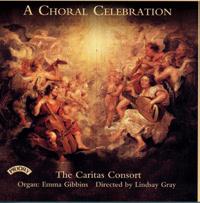
The Caritas Consort
Dir: Lindsay Gray
Organ: Emma Gibbins Byrd Terra tremuit; Tallis If ye love me; Victoria Caligaverunt oculi mei; Purcell Jehova, quam multi sunt hostes mei; Handel
The rising world Jehova crown’d; Mozart Ave verum corpus; Bruckner Locus iste; Mendelssohn Hear my prayer; Cyril Taylor Glorious things of thee are spoken; Ireland Greater Love; Howells Jubilate (Collegium Regale); W Lloyd Webber Love divine; Warlock Benedicamus Domino; Alec Roth Sol justitiae; Lindsay Gray
Not in lordly state and splendour; Trad arr Blackwell Steal Away; Joseph Parry Jesu, lover of my soul.
PRIORY PRCD 1219
The programme on this disc, as the accompanying notes tell us, ‘was not chosen to conform to a single theme, but is representative of the rich tapestry of music a patron might expect to enjoy at a regular Caritas concert’. Thus we have music from Tallis and Byrd moving to Alec Roth via Handel and Mozart and even two very well known hymns. Lindsay Gray, the director of the ensemble, formed the choir of hand-picked singers in 2013 and this is the group’s first CD recording. The choir has staged some 29 concerts since 2013 to raise considerable funds for 37 charitable causes, hence the name of the choir. With just 16 singers, the recording from St Augustine’s Church in Penarth captures a very natural sound, one that we might expect to hear in live performances in the church. This is accomplished singing with some very fine solo contributions, particularly in the Purcell and Mendelssohn works, and accompanied sensitively and effectively by Emma Gibbins, but to my ears the organ is just a little in the background rather too often. New works to me
included William Lloyd Webber’s Love divine, which deserves to be heard more often, Alec Roth’s Sol justitiae, which is a very effective setting of the text (with a glorious high A shining above the choir in verses 2 and 4), and Lindsay Gray’s own piece Not in lordly state and splendour. So, the Caritas Consort’s first venture into the recording world gives us some very effective performances of mainstream repertoire, and the CD is a very good introduction to the world of sacred music with assured singing from a group whose raison d’être is to be commended.
Nick Kerrison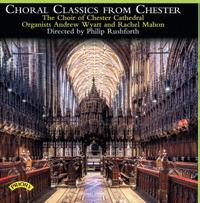
Dir: Philip Rushforth
Organ: Andrew Wyatt, Rachel Mahon Boyle Thou, O God, art praised in Sion; Gibbons Great Lord of Lords; Bairstow If the Lord had not helped me; Amner O ye little flock; Stanford How beauteous are their feet; For lo, I raise up; Moore All wisdom cometh from the Lord; Wood Expectans expectavi; Elgar Doubt not thy Father’s care; Light out of darkness; Tomkins Thou art my King, O God; Howells Te Deum (Collegium Regale).
PRIORY PRCD 1205
Since the closure of the choir school in 1976, the boy choristers of Chester have been recruited from schools all over the city and surrounding area. The girls’ choir was formed in 1996. The girls and boys often sing independently under Philip Rushforth, although both groups blend well together as in Elgar’s Doubt not thy Father’s care, scored only for upper voices, and also in the larger-scale works such as Light out of darkness and the Howells Te Deum. A highly spirited performance of Malcolm Boyle’s stirring Thou, O God, art praised in Zion opens the disc whilst the contrasting middle section is especially sensitively controlled. The tone in the upper parts is somewhat robust in Gibbons’ Great Lord of Lords, although the ATB verse sections are more restrained. Less well known is Bairstow’s If the Lord had not helped me. This anthem requires more subtlety, with marked dynamic contrasts from the whole ensemble, and the way in which the girls produce this is much to their credit. The rhythmic impetus of Philip Moore’s most fine All wisdom cometh from the Lord is well accomplished. One of the many highlights of the disc is Stanford’s For lo, I raise up where the diverse nuances are very well captured in a work contrasting power with more restrained sections requiring a sense of great intensity. The sensation of a lack of inhibition displays overall commitment to both text and music. Much credit should be given to the superb organ accompaniments played by Andrew Wyatt and Rachel Mahon. Maybe the singing on the recording comes across as over-robust on occasions, but generally, the performances are more than convincing.
David Thorne
The Temple Church Choir
Dir: Roger Sayer
Organ: Greg Morris
Fauré Messe basse; Bach Four Advent chorales; Reger Mariä Wiegenlied; Poulenc Four Christmas motets; Handel O lovely peace from Judas Maccabeus; Haydn Benedictus from Missa brevis Sancti Joannis de Deo; Britten Corpus Christi carol; Ireland Ex ore innocentium; Leighton Easter Sequence; Ridout Sacred Songs; Purcell Evening Hymn.
PRIORY PRCD 1204
I suppose it depends what you mean by tradition. For fully three-quarters of the 20th century the Temple Church’s music was controlled by two men, Henry Walford Davies and his assistant and successor George Thalben-Ball, who established and continued a tradition of fine, expressive performances enhanced and coloured by the boys’ warm, confident and colourful tone. Davies favoured Bach and Parry as company for his own compositions; but Thalben-Ball, though no mean composer himself, will be for ever famous for his recordings of Mendelssohn’s Hear my prayer starring Ernest Lough, a senior Temple chorister. As this CD contains not a note of any of these composers except Bach, one may well ask what has become of the tradition. The answer must be that it is alive and well, but has evolved and been modified in recent years. The boys’ singing is still strong and colourful, most ably backed up by the men, although their contribution is for no obvious reason confined solely to Poulenc’s Christmas motets. The absolute highlight of this programme has to be Kenneth Leighton’s Easter Sequence, complete with a real live trumpeter. Were one so minded, one could complain of a rather fragmented programme and some less-than-perfect intonation, but there is much here to praise and enjoy.
Timothy Storey
The Choir of Chichester Cathedral
Dir: Charles Harrison
Organ: Timothy Ravalde
Stanford For lo, I raise up; Verdun, from Sonata No. 2 ‘Eroica’; Bainton And I saw a new heaven; Parry Crossing the bar; There is an old belief; Ireland Greater Love; Te Deum in F; Howells Rhapsody No. 3 in C sharp minor; Clement Scholefield The day thou gavest, Lord, is ended; Elgar We will remember them; Turn back, O man; Peter Aston So they gave their bodies; Holst I vow to thee, my country.
SIGNUM SIGCD562 TT 64:56
It is surely the envy of the world that the UK has so many good cathedral (and parish church) choirs even in relatively rural areas where vocal resources might be difficult to recruit. This recording features a choir of only 12 boys and 6 lay clerks, but how lucky Chichester Cathedral is to have those singers, and so well led by Charles Harrison. The programme, designed to commemorate the Armistice of 1918, was released in support of Combat Stress, the charity which was founded shortly after the end of WWI. Some of the ‘greats’ of the choral repertoire are here, sung very well indeed and with excellent accompaniments from Timothy Ravalde. The disc opens with a spirited rendition of For lo, I raise up and the quality of the performances to follow is revealed in this first anthem. There is an excellent sense of line from the outset and the balance between boys and men is good. Solo contributions in the Stanford and Ireland works are first rate. The performance of Parry’s There is an old belief is very sensitive, with excellent security of intonation and attention to the detail in the score. It is good to hear Peter Aston’s So they gave their bodies, a simple but very effective piece which sits well alongside the more established repertoire. Charles Harrison demonstrates his considerable technique in two organ pieces by Howells and Stanford. All in all, this is a fine disc from a choir which clearly continues its daily support of the worship in the cathedral so well.
Nick KerrisonDouglas Tang plays the organ of Hereford Cathedral
S S Wesley Choral Song and Fugue; Louis Marchand Grand dialogue de cinquième ton; Bach Chorale Prelude ‘Allein Gott in der Höh’ sei Ehr’ BWV 676; Nicolaus Bruhns
Prelude and Fugue in E minor ‘The Great’; Mendelssohn Organ Sonata in D minor; Howells Psalm Prelude Set 2, No. 1; Whitlock Plymouth Suite.
WILLOWHAYNE WHR044 TT 71:59
Hereford Cathedral’s organ, as the programme notes tell us, ‘has been likened to a vintage Rolls-Royce car, lovingly maintained, retaining its original and stately majesty’, and that majesty is heard right from the outset of this CD in Wesley’s Choral Song and Fugue. Douglas Tang knows the instrument well, having spent a gap year at the cathedral; as a sign of things to come, we hear in the fugue some carefully articulated playing, with every note crystal clear. I suspect that it’s not very often that the fugue gets an airing after worship but this performance really does bring this piece to life. Playing the music of Louis Marchand on a very English organ will always be challenging, but Mr Tang brings out the real character of this music with, once again, clear articulate playing which we also hear in the Bach chorale prelude. The multi-sectional Prelude and Fugue by Nicolaus Bruhns requires a real feel for the improvisatory character of the music and that is what we get here. Use of the various registers of the organ is excellent, and the playing is as articulate as ever, bringing character to the many and varied emotions of the large number of different ideas in this pre-Bach music. Mendelssohn’s last sonata is ideally suited to the Hereford instrument and the foundation stops produce some rich tone in the set of variations which conclude with a ‘blistering Allegro molto’ which again is wonderfully clear in performance. Howells’s Psalm Prelude, showing the full dynamic range of the Hereford organ at its best, is followed by the five pieces which make up the Plymouth Suite, each one dedicated to friends of Whitlock. Here is some expressive and exciting playing with the Hereford tuba to the fore in the exuberant movements. This is an impressive CD showing a clear mastery of technique.
 Nick Kerrison
Nick Kerrison
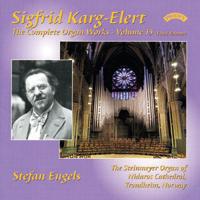
Stefan Engels plays the organ of Nidaros Cathedral, Trondheim
Transcriptions: Variations in E Major
‘The Harmonious Blacksmith’; Symphonie
Pastorale ‘Shepherd’s Music’; Echo from Bach Keyboard Partita in B minor; Abendlied from Schumann’s ‘12 pieces for Piano’; Dialog and Cantilene from Mendelssohn’s ‘Songs without Words’; Wiegenlied from Halfdan Kjerulf’s ‘3 pieces for Piano’; Karg-Elert Sunrise; Elegy; Morgensegen; Canzone; Angelus; Rondo alla campanella; Kaleidoscope.
PRIORY PRCD 1185 TT 79:16
One might expect, and fear, that the 15th and final CD of a composer’s complete works might be like the odds and ends at the bottom of the proverbial bran-tub, but this particular
bran-tub contains a goodly selection of delights, not the least of them The Harmonious Blacksmith, which Karg-Elert’s skilful good taste has turned into a piece of real organ music. Here in particular one can appreciate the wisdom of recording an instrument with an apparently endless store of delicate and colourful effects, even including a set of chimes for the Rondo alla campanella. Both player and organ are entirely at home with Karg-Elert’s colourful music, to some of which Messiaen might not have disdained to attach his name. Strongly recommended.
Timothy Storey
Ian Hare
Gordon Cameron Fantasia on St Denio; Reginald Dixon Baroque Suite; Handel Overture to the Occasional Oratorio; Frederick Wadely Two Postludes; Adrian Self Carmel Priory Suite; Ian Hare Triptych; Arthur Somervell Air in C major; Armstrong Gibbs Six Sketches. PRIORY PRCD 1177 TT 79:10
Ian Hare was one of Sir David Willcocks’s organ scholars at King’s College Cambridge, and has lived and worked in the Lake District for over 40 years. This recording is such a good idea. For the listener, here is a tantalising glimpse into three, mostly modest, churches and their organs in the land of Wordsworth and Beatrix Potter, and the local cathedral at Lancaster. Hare clearly has a great affection for all the instruments, and the repertoire is musically modest to match the surroundings and the organs. The tour of the Lakes begins in Lancaster (RC) Cathedral and sets off with an imposing Fantasia on St Denio (‘Immortal, Invisible’). The instrument here started life in 1889, built by a local firm, Henry Ainscough of Preston, and most recently rebuilt by Willis in 2009 – it is the largest organ on display on this CD. Dr Reginald Dixon’s Baroque Suite is an appropriate choice, as he was organist at the cathedral for over 60 years. We then move to Patterdale where we encounter an 1866 Hill playing a W T Best arrangement of Handel’s Overture to the Occasional Oratorio, and Two Postludes by Frederick Wadeley, who was Carlisle Cathedral’s organist for 50 years. From Patterdale we journey to Crosthwaite and a surprisingly well-developed instrument. The nucleus is an 1844 Bishop, but much altered and enlarged since. We hear the Cartmel Priory Suite by Adrian Self, and Ian Hare’s own Triptych. The final venue is in Grasmere where Hare is presently organist. This organ is by the distinguished Leeds builder, J J Binns (1923), again subsequently altered by other builders. The music is a rather lovely little piece by Arthur Somervell, actually an arrangement of an instrumental piece, and Six Sketches by Armstrong Gibbs.
Ian Hare and Priory are to be applauded for going ‘off the beaten track’. This CD presents an attractive programme, finely played, and well suited to the instruments highlighted on this disc.
Roger JuddRichard Gowers plays the organ of King’s College, Cambridge Messiaen La vierge et l’enfant; Les bergers; Desseins éternels; Le verbe; Les enfants de Dieu; Les anges; Jésus accepte la souffrance; Les mages; Dieu parmi nous.
KINGS KGS0025 TT 67:40

The organ of King’s College Cambridge might not seem the most obvious choice on which to record La nativité, but we have all heard at least Dieu parmi nous at the end of the Christmas Eve Nine Lessons and Carols service. Richard Gowers knows the instrument well, having been Organ Scholar there between 2014-17. In the accompanying notes Richard explains that although the King’s College organ is ‘essentially an English romantic instrument, (it is) equipped with all the necessary resources to obey Messiaen’s registration and (since the restoration of 2016) it is perfectly possible to bring Messiaen’s music to life ..... but the stops themselves will always sound distinctly English’. There is, of course, stiff competition in recordings of this music, not least Jennifer Bate’s recording at Beauvais Cathedral, and we know that Messiaen regarded her performances of his music very highly indeed. There is also Simon Preston’s highly acclaimed recording, and many others besides. Richard Gowers, again in his notes, says that the organ at King’s and its organists ‘have done much to promote (Messiaen’s) music in the UK and with this recording I hope I can make my contribution’, and what a contribution it is! It is Richard’s first solo recording and it is sure to be a success. Here we have all the drama but also the contemplative and meditative nature of Messiaen’s music in abundance.
There may not be the ‘weight’ in some areas which might be heard in the recording from Beauvais, and some of the sounds may be a little English (though at least the organ is in tune!) but what we do have is exemplary playing, beautiful and intimate indeed in the meditative areas (listen to Les Mages), and also in the dramatic contrasts, fiery one minute, sublime and still the next, as in Dieu parmi nous – which is as shattering as ever.
Nick KerrisonIan Tracey and David Poulter play the organs of Liverpool Cathedral
Fantasia in G BWV 572; Chorale Preludes: Es ist das Heil uns kommen her BWV 638; Herzlich tut mich verlangen BWV 727; Nun komm der Heiden Heiland BWV 659; Vor deinen Thron tret’ ich hiermit BWV 668; Christ unser Herr zum Jordan kam BWV 684; Ach, bleib’ bei uns, Herr Jesu Christ BWV 649; Fugue on the Magnificat BWV 733; Cantata chorales trans. Ian Tracey: Nun danket alle Gott; Gottes Zeit ist die allerbeste Zeit; Jesus bleibet meine Freude; Ich steh mit einem Fuß im Grabe; Wir danken dir, Gott, wir danken dir; Fantasia super ‘Komm heiliger Geist, Herre Gott’ BWV 651; Trio Sonata No. 1 in E flat major BWV 525
PRIORY PRCD 1191
This is one of four discs of the organ works of J S Bach on the Priory label, either released or planned, and played on English cathedral organs. Recorded in 2017, it features the Grand Organ of Liverpool Anglican Cathedral, played by Ian Tracey, and the Lady Chapel instrument, on which David Poulter performs a number of contrasting works. To hear the smaller instrument built by Henry Willis II is a joy, especially as it has only been recorded once before and then only in an accompanimental role. The main instrument is exceedingly well captured in the highly expansive acoustic by Priory’s Neil Collier: the balance achieved allows the clarity of the diverse tonal colours to be heard to full effect. For those whose knowledge of the instrument is limited, it might well come as a surprise how many registrations on the Liverpool organ suit Bach’s writing. For instance, go no further than the opening of the Fantasia in G or the intricate counterpoint within many


of the chorale preludes. The fact that the gargantuan nature of the instrument is captured in a totally unashamed romantic arrangement of Cantata 79 performed in Professor Tracey’s unique romantic manner comes as little surprise!
The works performed on the Lady Chapel organ occasionally feel a little hurried, and unfortunately there appear to be some voicing problems in the Chorale Prelude Christ unser Herr zum Jordan kam. Liverpool might not seem the most obvious choice to hear the subtlety of Bach’s writing, but this disc certainly contradicts this theory whilst highlighting the legacy of the Henry Willis tradition.
David ThornePhilip Rushforth plays the organ of Chester Cathedral
Fantasia & Fugue in G minor BWV 542; Partita diverse ‘Ach, was soll ich Sünder machen’ BWV 770; Preludes & Fugues in C major BWV 547; in D minor BWV 539; in E Flat BWV 552; Duets I-IV, BWV 802-5; Chorale Prelude ‘Von Gott will ich nicht lassen’ BWV 658.
PRIORY PRCD 1198
Chester Cathedral’s organ dates from 1876, the masterpiece of a local firm, Whiteley Bros; it was rebuilt and enlarged in 1910 by the great William Hill, whose work was described as having a ‘musical normality’ which sadly was not always appreciated by later generations. The 1968 rebuild by Rushworth & Dreaper (a firm sadly now defunct) resulted in an instrument of great versatility which yet respected the work of Whiteley and Hill, and for this, great credit is owed to Roger Fisher, Chester’s then newly-appointed organist. It seems entirely fitting that in this programme the organ is played by Mr Fisher’s sometime chorister and pupil, Chester’s current organist. If the purists would scorn the idea of recording Bach on such an instrument, our best organists’ playing is nowadays informed by the sound and style of the best continental instruments and organists, and Mr Rushforth has been entirely successful in finding chorus and solo registrations suited to the music. It is a wonderfully satisfying programme which mercifully eschews THE Toccata and Fugue but gives us the mighty Fantasia & Fugue in G minor with its jolly and memorable subject ‘O Ebenezer Prout, you are a funny man; you play Bach fugues as quickly as you can’. I hasten to add that, unlike the legendary and so cruelly insulted Professor Prout, Mr Rushworth plays his Bach at a normal, sensible and unhurried pace. He is guilty of some (utterly forgivable) naughtiness in adding, to thrilling and satisfying effect, the 32’ pedal reed for the last appearance of the subject of the Fugue in E flat (the one known as St Anne on account of its resemblance to William Croft’s hymn-tune of that name). I recommend this fine CD as an ideal anthology of the very best of Bach.
Timothy StoreyTom Winpenny plays the organ of St Albans Cathedral
Te Deum; Domine, probasti; Deo Gratias; Vigilia noctis; In nomine; Chorale prelude on ‘Wir haben schwerlich’; Sonata.
WILLOWHAYNE RECORDS WHR051
TT 75:35
I should declare a particular interest in this CD. I taught Francis Grier, albeit briefly, when he was a chorister at St George’s Windsor, and Tom Winpenny was my organ scholar

at the aforementioned chapel. I have known Francis’s music for a long time, and his compositional skill and fertile and imaginative brain make for fascinating listening. In the days when he played the organ (he was an organ scholar at King’s College Cambridge, and Organist of Christ Church Cathedral Oxford) there were few players who could touch him for technique and musical insight. He writes brilliantly and knowingly for the instrument, as you would expect, and this CD presents an illuminating cross-section of his work. The programme opens with a Te Deum rather in the manner of French alternatim Masses by F Couperin, for example. The seven organ verses are strikingly original, and make an excellent opener to the CD. The plainsong verses are sung by the lay clerks of the St Albans cathedral choir. Each of Grier’s two In Nomines are preceded by ones by John Taverner and William Blytheman. Grier’s versions cleverly elaborate the originals. Deo Gratias has seriously Bachian overtones that raise a smile with this listener! Grier has contributed to the Orgelbüchlein project, and the chorale prelude is included here – a homage to JSB, but not a pastiche. This is very much Grier’s musical voice but dressed in the manner of the great man … it is a most beautiful little piece. Two of the pieces have verses from the Book of Psalms at their root. The earliest work, Vigilia Noctis (1989) takes its title from Psalm 63 (‘In the watches of the night, my heart yearns for you, O God’). The improvisatory nature of the music mirrors the text perfectly. Domine, probasti takes Psalm 139 as its starting point (‘O Lord, thou hast searched me out’), and is the catalyst for a variety of moods that flit from one to another with great freedom. There is also a lovely Meditation available to download from the Willowhayne website.
Excellent, insightful and helpful liner notes from the soloist add to the pleasure of this CD. Tom Winpenny is a total master of the music, and any composer would be delighted to have their work so persuasively presented. The organ at St Albans Cathedral is a perfect vehicle for the realisation of Grier’s music. Definitely five stars – most warmly recommended.
RogerJudd
The Complete Organ Works Vol 7
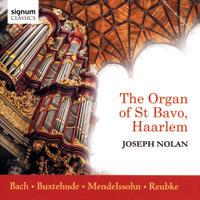

David Goode plays the organ of Trinity College, Cambridge
Preludes and Fugues BWV 566; BWV 541; Jesu meine Freude BWV 713; Nun freut euch, lieben Christen g’mein BWV 734; Trio Sonata No. 3 BWV 527; Fugue on a theme by Legrenzi BWV 574; Wie schön leuchtet der Morgenstern BWV 739; Concerto after Vivaldi BWV 596; Valet will ich dir geben BWV 735; Vater unser im Himmelreich BWV 737.
SIGNUM SIGCD 807 TT 67:51
Released in March 2018, Volume 7 of David Goode’s series of Bach’s organ works reveals some of those less frequently played in recitals but which nevertheless are a significant part of the composer’s output. The Prelude and Fugue (Toccata) is very reminiscent of Buxtehude’s writing and is performed in a decidedly exhilarating style. To a large extent, vitality permeates much of the playing whether in the Third Trio Sonata in D minor or the highly exuberant Prelude and Fugue in G; here, the opening arpeggio sparkles in a lively fashion whilst the fugue is played with a poise and crispness aided by the voicing and action of the Metzler organ in Trinity College. The engaging and attractive chorale prelude Nun freut euch, lieben Christen g’mein is performed with great panache, whilst Vater unser im Himmelreich serves as a foil both in registration
and in tempo to the bold style of Valet will ich dir geben. For those wishing to purchase some of Bach’s less performed works, you could do no better than to purchase or download this volume.
David ThorneJoseph Nolan
Bach Chaconne from Partita No. 2 BWV 1004; Nun komm, der Heiden Heiland BWV 659; Trio Jesus Christus unser Heiland BWV 688; Buxtehude Toccata & Fugue in F major; Mendelssohn Sonata in D Minor; Reubke Sonata on the 94th Psalm.
SIGNUM SIGCD546
This is one of Europe’s truly great organs, dating from 1738 and famed as much for the beauty of its casework as for the tonal riches contained therein. A programme played by the distinguished organist of Perth Cathedral (WA) promises much, for Mr Nolan has won high praise for his Widor recordings. He tells us that he has long nursed a desire to record Reubke’s great Liszt-inspired piece of programme music on this organ, and the other works in the programme are intended to furnish a kind of compositional family tree. Sadly, the St Bavo organ does not have enough notes for the Sonata on the 94th Psalm, and the instrument at Merseburg Cathedral for which it was composed is a very different animal, offering greater tonal variety at unison pitch; these factors sadly render one unable to give more than a qualified welcome to this disc, admirably though it is played and recorded, nor does the transcription from Bach’s second partita for solo violin make a convincing piece of organ music.
Timothy Storey
Christopher Allsop plays the organ of Worcester Cathedral
Bach Toccata and Fugue in D min BWV 565; Liebster Jesu, wir sind hier BWV 731; Vaughan Williams Rhosymedre; Pietro Yon Toccatina; Dubois Fiat lux; Easthope Martin Evensong; Bourgeois Serenade; Whitlock Folk Tune; Karg-Elert Nun danket alle Gott; Sibelius arr Fricker Finlandia; S Wesley Air and Gavotte; Mulet Carillon-Sortie; Elgar arr Brewer Chanson de Matin; Lefébure-Wély Sortie in E flat; Percy Fletcher Fountain Reverie; Widor Toccata in F from Symphony No. 5.
PRIORY PRCD1214
Worcester Cathedral’s organ has just celebrated its tenth birthday, and it is justly praised for the beauty of its twin cases which face each other across the quire, and for the high standard of its construction and voicing. The cathedral’s former Assistant Organist presents a varied and imaginativelychosen programme, well designed to display the instrument’s wide range of tonal effects; his playing is of the highest quality, both expressive and assured, despite some tendency to undue haste – it is hard to imagine anyone dancing to Samuel Wesley’s Gavotte as played here. The overall effect is of suavity, politeness and restraint, which makes the epithet ‘spectacular’ seems a little out of place. The instrument it replaced was nothing if not spectacular, eccentric even, but thrilling in the extreme. If you can search out Christopher Robinson’s 1965 recording in the re-issued HMV Great Cathedral Organs boxedset, prepare to be amazed.
Timothy StoreyWednesdays at 7.30 pm
22 May Gerard Brooks
London
26 June Ekaterina melnikova
Moscow
24 July Matthias havinga
Amsterdam
28 August Peter Stevens
Westminster Cathedral
18 September Yves Castagnet
23 October
Notre Dame de Paris
Martin Baker
Westminster Cathedral

Tickets £12 (£10 concessions)

Season tickets £60 (£50 concessions) available on the door
For further information, contact the Music Administrator musicadmin@rcdow.org.uk | 020 7798 9057
www.westminstercathedralchoir.com


MONDAY 29 JULY to
MONDAY 29 JULY to
4
SUNDAY 4 AUGUST
We provide all types of new instruments
New Organs
Restoration
Rebuilding
Tuning Maintenance
We can give unbiased advice for all your requirements
Hillside Organ Works
Carrhill Road, Mossley, Lancashire OL5 0SE Tel: 01457 833 009
www.georgesixsmithandsonltd.co.uk
‘Few record companies have done more to c hampion our c hoir s and the instruments that accompany them than Regent Records ’ Classic FM Magazine
The Choir of York Minster directed by Robert Sharpe, Benjamin Morris (organ)
Music written for York Minster and its Choir, including works by three successive Masters of the Music, together with other established contemporar y composers

Three Introits: I sat down under His shadow; Jesu, the ver y thought of thee; I will wash my hands in innocency Bairstow; Benedicite in G; Remember for good, O Father ; Audi, filia; Evening Ser vice in G Jackson; Ubi caritas; O Lord God of time and eternity; The spacious firmament Moore; The Call Lloyd; Be strong and of a good courage; O nata lux Shephard; Ave Maria Cave; York Ser vice Bingham; Ave maris stella Grier
T h e C h o i r o f E x e t e r C a t h e d r a l directed by Timothy Noon,
Music by Howells, Parsons, Lawson, Tallis, Purcell, Blow, SS Wesley, Hadley, Stainer, Piccolo, and Dove
The Prayer Book Society promotes the use and understanding of the Book of Common Prayer in churches, chapels and cathedrals throughout the Church of England. We work with clergy, ordinands and laity to provide information and encouragement, and we offer a variety of resources (both online and in print).

Do you love the timeless beauty of the Book of Common Prayer? If so, please join us! Members receive regular magazines, as well as invitations to events.
For further information, please visit pbs.org.uk pbs.admin@pbs.org.uk 0118 984 2582
REGCD524
‘Those with an affinity for Exeter Cathedral will treasure this collection and listeners who enjoy choral music will find much that is well wor th hearing an excellent release ’ Cross Rhythms
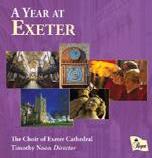


Choral and Organ works by Paul Fisher
Proteus Ensemble directed by Stephen Shellard Richard Cook (organ)
Sacred and secular works for choir and organ by Paul Fisher
REGCD520
The Choir of Lincoln Cathedral directed by Aric Prentice

REGCD532

Music by Bingham, Blatchly, Brahms, Byrd, Chilcott, Elgar, Finzi, Lloyd, Hawes, Mendelssohn, Parsons, Tallis, Wood, Taverner, Vaughan Williams, SS Wesley, and Wilberg
‘The choir is in strong form This provides a lovely picture not only of the musical life of the cathedral, but of its choir ’ PlanetHugill

‘Great sound quality on this disc Excellent performances from all concerned A rare treat, indeed ’ MusicWeb

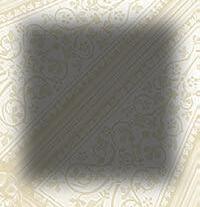


REGENT RECORDS, PO Box 528,Wolverhampton, WV3 9YW

Tel: 01902 424377 www regentrecords com (with secure online ordering)
Retail distribution by RSK Entertainment Ltd, Tel: 01488 608900, info@rskentertainment co uk
Available in the USA from the Organ Historical Society www ohscatalog org
